Archived Blog Posts
Prevent Mold Growth in Your Home
8/14/2023 (Permalink)
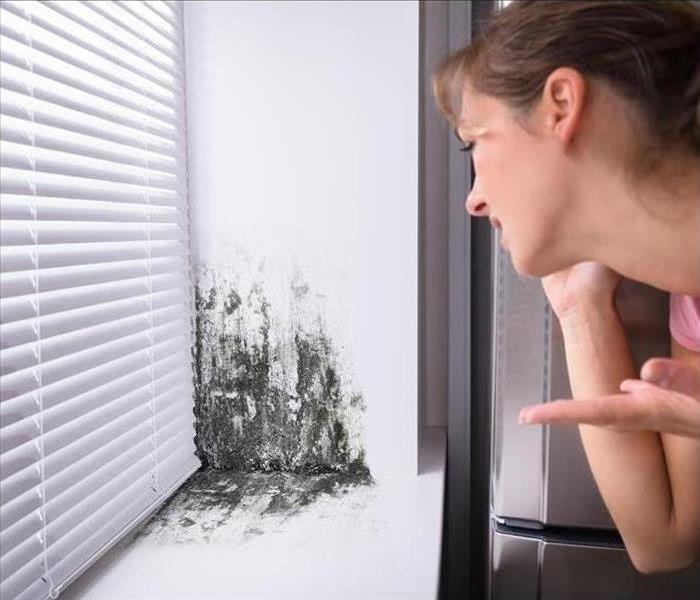 Mold expands quickly in moist environments if it is not removed in time.
Mold expands quickly in moist environments if it is not removed in time.
Mold spores travel easily from place to place and survive very well in environments with a little bit of moisture, so it shouldn't be surprising to find evidence of mold in your laundry room or bathroom. In fact, mold can grow anywhere that water damage occurs. Consider the following steps you can take to prevent mold growth in your Bountiful, Utah, home.
Respond Immediately to Leaks and Moisture
A glass of spilled water may quickly soak into the carpet. The resulting moisture in the carpet padding and wood flooring below the carpet is an ideal environment for mold. It doesn't take long for a wet spot to become a mold spot. Avoid water damage and mold with quick responses:
- Repair leaky faucets and pipes right away.
- Dry carpets and towels thoroughly.
- Put wet clothing directly into the washing machine.
- Clean and dry any wet surfaces.
If there are problem spots in your home, take steps to reduce the trouble.
Choose Mold-Resistant Products
For many homeowners, mold prevention begins after mold has already made an appearance. After mold cleanup and remediation professionals complete their work, use mold-resistant drywall, paint, and other products to reduce the chance of new growth.
Reduce Humidity and Increase Ventilation
Humidity levels vary naturally during the seasons and can also increase during the day during meal prep and laundry tasks. Opening the windows is an effective way to reduce moisture. If you don't want to open the windows, consider the use of a dehumidifier or fans. Leave interior doors open to increase airflow throughout your home.
Maintain Your Home and Landscape
Water from sprinklers or rainstorms should flow away from the home. If your landscape doesn't keep water away from the foundation, make adjustments. Regularly check your rain gutters to keep them clean and unclogged.
The care and maintenance involved in protecting your home from other problems can also help you prevent water damage and mold growth. Your consistent efforts could save you from a lot of expensive repairs.
Follow These 4 Steps To Use Your Fire Extinguisher the Right Way
9/8/2022 (Permalink)
 Use a fire extinguisher to limit the damage of a fire.
Use a fire extinguisher to limit the damage of a fire.
Few things can ruin a cozy evening at home faster than a kitchen fire. Whether you are preparing a meal for your family or cooking for friends, you must know how to effectively deal with flames in your kitchen. If you want to minimize fire damage in your Bountiful, UT, home, follow these four simple steps to use your fire extinguisher the right way.
4 Steps To Use Your Fire Extinguisher Correctly
- Remove the Pin
Your emergency extinguisher probably has a pin to prevent accidental sprays. This piece of plastic or metal sits inside the trigger. It also likely has a ring that makes removal simple and intuitive. Before you begin to extinguish a fire, you must remove the safety pin.
- Aim the Nozzle
Often, unaware homeowners point the nozzle of the extinguisher at the top of the flames. This is a mistake, as fires receive fuel from their foundations. Therefore, you must focus your spray on the base of the fire in your kitchen.
- Apply Controlled Pressure
Your fire extinguisher may dispense more suppression agent than you anticipate. As such, it is important not to panic. Instead, apply controlled pressure to the extinguisher’s nozzle. Begin slowly before gradually increasing pressure to successfully extinguish the blaze.
- Use a Sweeping Motion
To put out a fire of any size, you must concentrate on the base. As you probably know, fires tend to move around. By using a sweeping motion, you target all parts of the fire. Continue moving the extinguisher from side to side until the fire is gone.
Using a fire extinguisher to stop a fire in the kitchen is usually your best bet to limit damage. Still, extinguishers can be messy. If you have sustained damage or simply need a post-fire cleanup, working with a reputable restoration service in Bountiful, UT, is a good idea. Before you get to that point, however, you must be sure both you and your extinguisher are ready for action.
3 Steps for Deep Cleaning Your Home After a Flood
9/8/2022 (Permalink)
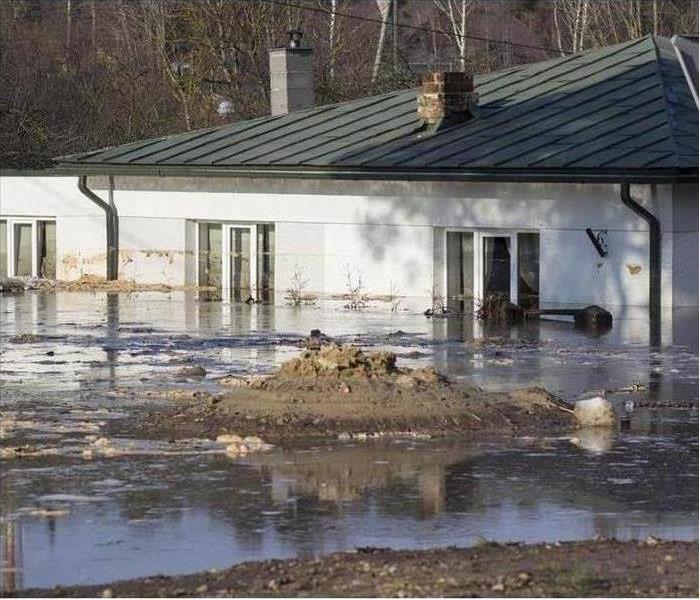 Flood Damage can leave mud and debris behind in your homes.
Flood Damage can leave mud and debris behind in your homes.
Flooding in Bountiful, UT, can wreak havoc on your home, especially when it comes to the mud, sludge, and debris it leaves behind. Cleaning walls, floors, and all your belongings once the waters recede can seem like an impossible task, especially if you must follow specific cleaning requirements from your insurance company, city, or state.
Steps to Take For Flood Cleanup
1. Begin With Hard Surfaces
Once you call your insurance agent and storm damage and flood restoration company to handle the drainage and disposal of contaminated floodwaters, you can begin cleanup efforts by creating a flood disinfectant for your home’s hard surfaces. Use clean scouring pads and a maximum-strength cleanser on your kitchen counters and other surfaces, then disinfect them with bleach or other germicide diluted with hot water. Remember to ventilate the room when you work with these chemicals and wear a mask and gloves to protect yourself.
2. Disinfect Your Kitchen Goods
Once your surfaces are clean, you can move on to your dishes, silverware, and canned goods. China, glassware and plastic utensils can be soaked in hot water treated with disinfectant, while metal silverware and cookware can be cleaned by immersing them in boiling water for 10 to 15 minutes. Avoid using bleach on metal surfaces, as it may cause your items to stain or discolor. Remove labels from your canned goods, allow them to soak in disinfectant, and then air dry before you re-label them.
3. Sort Salvage From Trash
If you are following specific cleaning requirements from a local authority, it is important that you understand which items can be salvaged and which must be thrown away. As you were flooding clean, make piles of items that can be restored, such as non-porous toys and tools, and throw away mattresses, soaked bedding, and plastic toys that may have absorbed contaminated water.
Flooding in Bountiful, UT, can leave behind mud, debris, and soaked belongings. Following your city’s cleaning requirements and knowing where to begin may make the cleanup process simpler and give you peace of mind as a homeowner.
3 Steps for Home Flooding Recovery
9/8/2022 (Permalink)
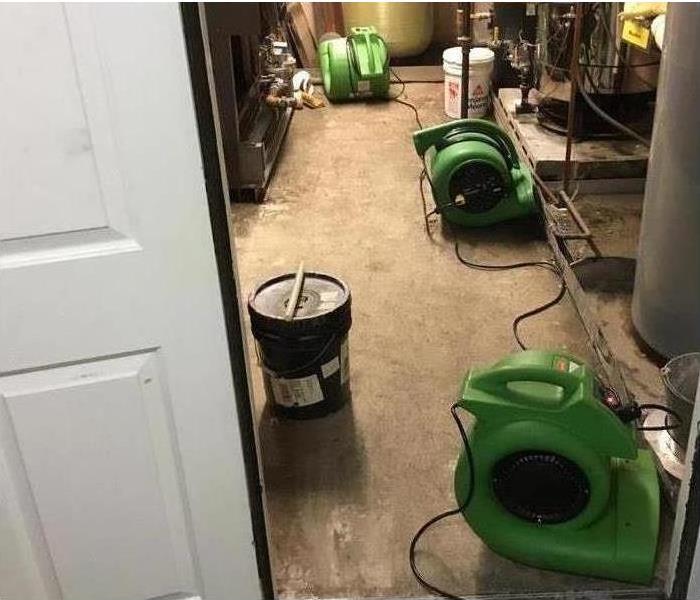 Professional drying equipment in a Bountiful, UT home.
Professional drying equipment in a Bountiful, UT home.
The damages left behind by floodwater in home settings can be extensive and leave an emotional toll behind as well. This is true whether the water damage resulted from rising waters after prolonged rain or a broken pipe. After flooding recedes, most people want to get back to their normal lives as quickly as possible, but the full recovery from the situation may take a long time. Breaking recovery tasks into orderly chunks may help the process move along more smoothly.
3 Steps To Recover From Flooding
1. Contact Your Insurance Company
Talk to your insurance agent about the terms of your flood insurance. The agent may recommend certain water damage restoration professionals in Bountiful, UT. Be prepared to share contact information, such as the phone number and address of where you are staying during the recovery process. Discuss steps such as keeping photographic evidence of the damages and holding onto damaged materials as proof of your losses.
2. Maintain Safety
Water in the home and electricity make a dangerous combination. Make sure you shut off the electricity to the home before attempting any repairs or cleanup. Ask professionals about whether it's safe to enter the residence to avoid injuries from gas leaks or fire hazards. Remember to practice basic safety procedures.
- Wear sturdy work gloves and protective hand and eye-wear.
- Consider wearing a respirator.
- Don't mix cleaning chemicals, such as chlorine bleach with ammonia.
- Watch out for pests, such as snakes and mice.
3. Separate Belongings for Professional and DIY Cleaning
You may be able to hose off or rinse out many of your belongings. Some items, such as clothing, can be cared for at a dry cleaning shop. However, many furnishings, such as carpets or upholstered couches, will require specific professional care. Water damage restoration professionals have the right tools and training to clean without causing further damage and will take steps to prevent long-term damages, such as mold.
Remember, after flood water in home settings recedes, contact Bountiful,UT, professionals, ensure safety, and then set aside tasks for professionals. Working methodically through recovery helps get things back to normal more quickly.
SERVPRO Helps With Claims
8/10/2022 (Permalink)
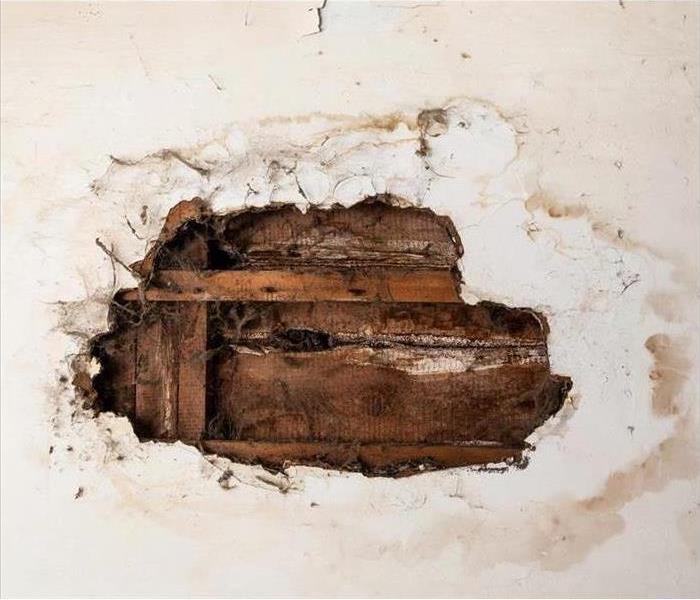 Water damage in Bountiful, UT home.
Water damage in Bountiful, UT home.
SERVPRO is a leader in its field, providing the best emergency response and post-disaster services to its clients in Bountiful, Utah, and nationwide. They not only restore homes to their preloss condition, but they also help with the associated insurance claim services. Here's how.
4 Ways SERVPRO Helps With Insurance Claims
- They Begin the Restoration Job Quickly
The insurance company will need detailed information about the incident and the resulting damage. The damage restoration professionals will perform a thorough inspection of the affected area and determine what it'll take to restore it to its preloss condition. The team will share all of these details with the insurance company to get you compensated and on the road to recovery as quickly as possible.
- They Work With Your Insurance Company Throughout the Claims Process
Insurance can be complicated and especially challenging to understand when trying to recover from the unthinkable. You shouldn't have to endure the headaches of the claims process after a catastrophe. The professionals at SERVPRO understand the insurance claim services process well. This expertise enables them to work with your insurance company on your behalf.
- They Do Efficient, Thorough, High-Quality Work
As the professionals perform your restoration services, you and the insurance company can be confident that they're performing high-quality work. The job will also be completed efficiently, thoroughly, and promptly.
- They Provide Excellent Customer Service
You will always get excellent customer service working with this franchise. An office administrator will guide you through every step of the insurance claim process. They're available to take your questions or hear your concerns, and they keep you updated throughout the process. If any part of the claim is denied by the insurance company, we will still work with you to restore your home.
SERVPRO has been working with insurance companies for decades. This means they know their stuff when it comes to claiming services. In fact, many insurance companies prefer to work with them since they're a full-service provider, able to handle every portion of the claim for you.
6 Ways to Reduce Your Home’s Flood Risk
8/10/2022 (Permalink)
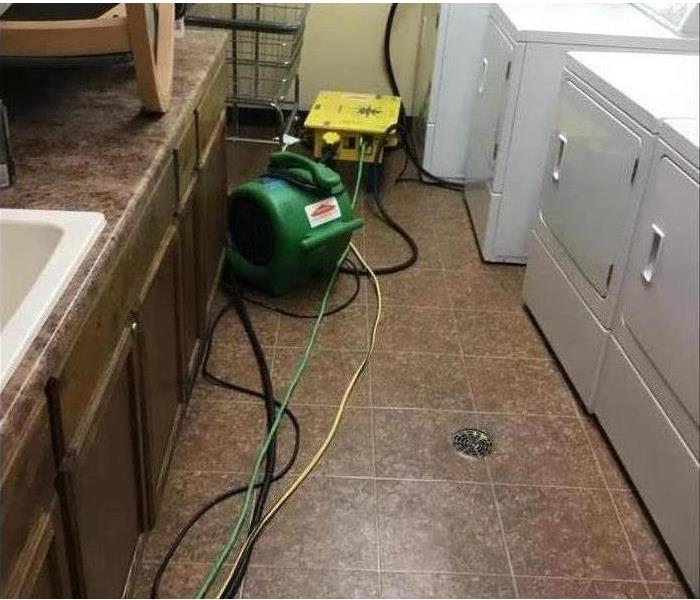 Air mover on laundry room floor after suffering storm damage in Bountiful, UT.
Air mover on laundry room floor after suffering storm damage in Bountiful, UT.
Floods are often unavoidable. Although you may not be able to fully flood-proof your home, every homeowner in Bountiful, UT, can take proactive prevention and flood safety measures to protect their properties against extensive flood damage.
Flood Safety
1. Prepare Sandbags
If you receive adequate warning of an approaching storm capable of producing significant rainfall, such as a hurricane, create an external barrier with sandbags, which can divert water from your residence.
2. Install a Sewage Water Backstop and a Sump Pump
A sewage water backstop is an efficient flood safety device that prevents backwater from flowing into your basement. A sump pump is another beneficial machine that can drain water out of your home.
3. Assess Basement Windows and Your Foundation
A cracked foundation may enable water to flow inside your basement. Water can also seep through basement windows. To secure these areas, ensure that windows are properly caulked and sealed and repair any existing foundation issues.
4. Maintain Gutters
Routinely clean your gutters to prevent blockages that may restrict water flow. In addition, install downspout extensions to direct water farther away from your home’s foundation.
5. Plant Grass and Use Mulch
Both mulch and grass absorb water. So planting grass around your home and placing mulch around external foliage provides an additional flood safeguard. However, to ensure retained moisture does not damage siding, keep mulch at least six inches away from your home’s exterior.
6. Properly Grade Soil
Grading the ground away from your home is another efficient safety tip that also helps divert water away from your foundation.
Peace of Mind
Following these seven flood safety tips helps reduce your home’s flood risk. However, it is impossible to fully eliminate the threats of extreme weather and bursting pipes. For this reason, the best flood safety measure is a flood insurance policy, which provides financial security and ensures that you have funds available to cover cleanup and restoration costs and replace destroyed property.
If Your Commercial Roof Is Damaged in a Fire, Follow These Steps Before and After the Roof Repair
7/25/2022 (Permalink)
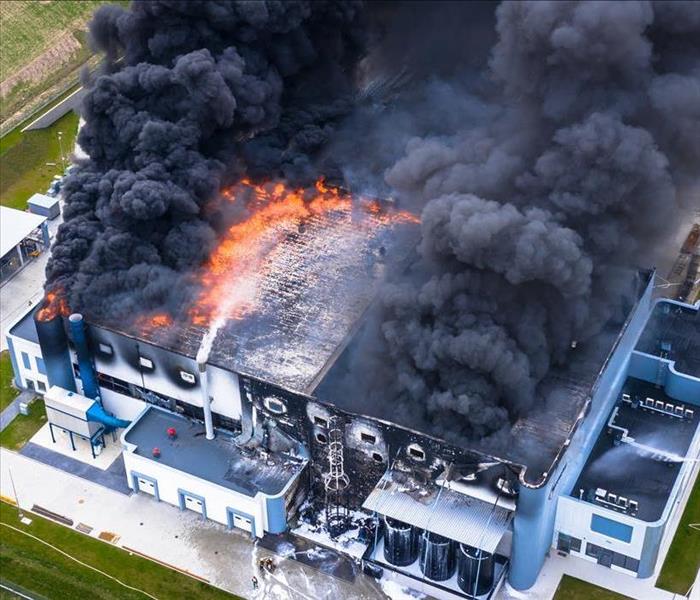 Fire damage in Bountiful, UT.
Fire damage in Bountiful, UT.
A fire can cause plenty of damage to your Bountiful, UT, building on its own. You do not want any additional harm to occur once the blaze has been extinguished. Yet a broken roof leaves your property vulnerable to further damage. That is why you should take extra steps to protect the premises while you wait for the completion of the roof repair. You should also fortify the roof once it has been fixed. If a fire does harm your commercial roof, follow the below tips.
What To Do Before and After the Fire Cleanup
1. Have a Tarp Placed on the Roof
Flames can easily burn through a roof and create a giant hole. Firefighters also often create holes in roofs to eliminate the dark smoke that hinders their visibility.
Leaves and other debris could fall through the holes and into your property. If it rains before the roof is fixed, water could flood your building, as well. Unwanted animals such as raccoons and squirrels could even jump through the hole.
That is why you should hire fire remediation professionals who provide tarp services after a blaze. A tarp will keep the elements and critters outside of your property.
2. Contact Your Insurer
Before the restoration experts perform any significant repairs, you need to contact your insurance company. The insurer will likely send an adjuster to assess the damage before the restoration begins. The adjuster may also request photos and videos of destroyed items. Ideally, the insurer will then work with the remediation company to expedite the claims process.
3. Get the Shingles Replaced
The fire likely destroyed or damaged shingles on your roof. Even if some of the shingles just have missing parts, you should replace them entirely to be safe. The builder who constructed your roof may have left behind some shingles that the restoration company can use. Otherwise, you can find them at your local home shop.
4. Clean the Attic
The fire cleanup experts may need to access your roof through the attic. If the attic is cluttered with debris, this may be more difficult for them. If it is safe to do so, sweep the attic floor and removed any damaged items from the room. Be sure to wear protective clothing with a face mask.
5. Prevent Future Fire Damage With a Steel Roof and Sprinklers
If you need to replace your entire roof, you may want to opt for a steel one instead of a traditional shingle roof. Steel roofs improve your building’s appearance and are energy efficient. They are also more fire-resistant, so they are a great option for companies that often deal with combustible materials.
Installing roof sprinklers is another great way to prevent future fire damage to your building. These sprinklers are particularly useful if your property is in a wildfire-prone area.
Fire cleanup and roof repair can take a long time. Yet if you leave your commercial roof exposed to the elements for an extended period, debris, water or animals could enter the premises and cause further harm. By following the above steps, you should mitigate additional damage.
Steps of the Roof Repair Process After a Storm
7/19/2022 (Permalink)
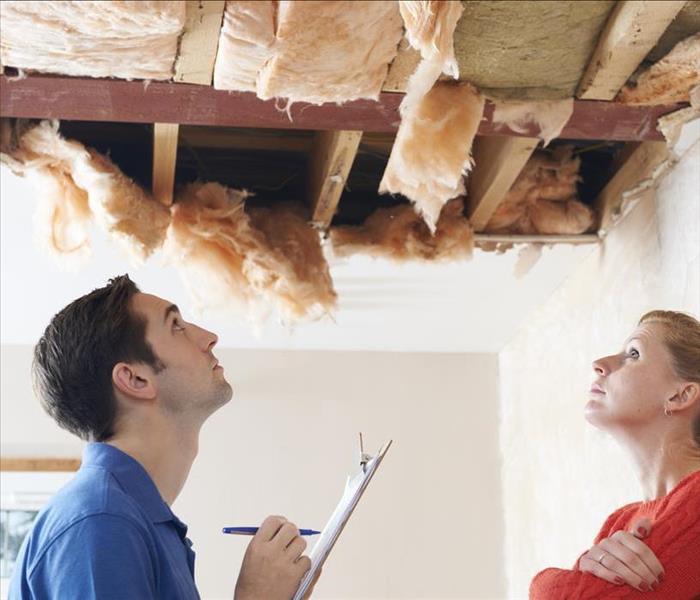 Storm causes roof damage.
Storm causes roof damage.
When a strong storm blows through Bountiful, UT, your roof and other areas of your home may get damaged. The exterior problems you see are probably not the only ones that the downpour and gusts left behind. It is in your best interest to make sure your home and roof repair get started right away.
The Roof Damage Repair Process
You may notice missing shingles or holes in your roof after a particularly heinous storm. Before you fix this problem, however, you should call storm damage mitigation experts to repair the issues that it caused inside your attic. The technicians board up the holes in your roof so that no further rain or wind damage occurs. Then they begin the interior remediation process.
1. Remove
Any portion of your attic that was touched by rain or debris may have damage. In addition to pumping out any standing water that is left behind, the mitigation specialists start cleanup by removing all materials that cannot be salvaged:
- Insulation
- Drywall
- Warped wood
- Carpet
- Floor pads
It is important to remove waterlogged materials promptly. Failure to do so can result in secondary damage such as rot or mold growth.
2. Clean
Your attic must be cleared of any dirt or debris that blew in with the storm. In most cases, technicians will also disinfect remaining surfaces to ensure that any bacteria from the rain are gone before roof repair gets started. This step also helps the team verify that no more ruined materials are present.
3. Dry
The way storms cause so much damage is by letting excess moisture into your home. Even if there is no standing water, the roof leak likely left things damp and increased the humidity. Prevention of further damage depends on the remediation team making sure all remaining surfaces are dry. Additionally, dehumidifiers can be used to bring the interior humidity back to an acceptable level.
4. Rebuild
Anything that was removed from your attic is probably something you want to replace. The rebuilding process involves not only installing new insulation, drywall and flooring but also making sure that the new materials match the remaining ones. By the time the restoration team is finished, you shouldn't be able to tell where the storm damage was.
5. Repair
After all the interior issues have been resolved, it's finally time to repair the roof damage caused by the storm. The roofing expert you hire starts by inspecting the roof to identify all the problems. If your insurance provider covers the cost of the damage, be sure to get an estimate before the work is started so that you can use it to document your claim. Fully repairing the roof is necessary to avoid further damage to your home.
Cleaning up after a storm is usually a multi-tiered process. If your house needs roof repair, you probably need to begin by fixing all the damage from the rain and wind that entered your home through its vulnerable spots. Once the mitigation inside your house is complete, then the roof can be fixed so that your attic is protected.
3 Rules To Limit Lint Fire Risks
7/12/2022 (Permalink)
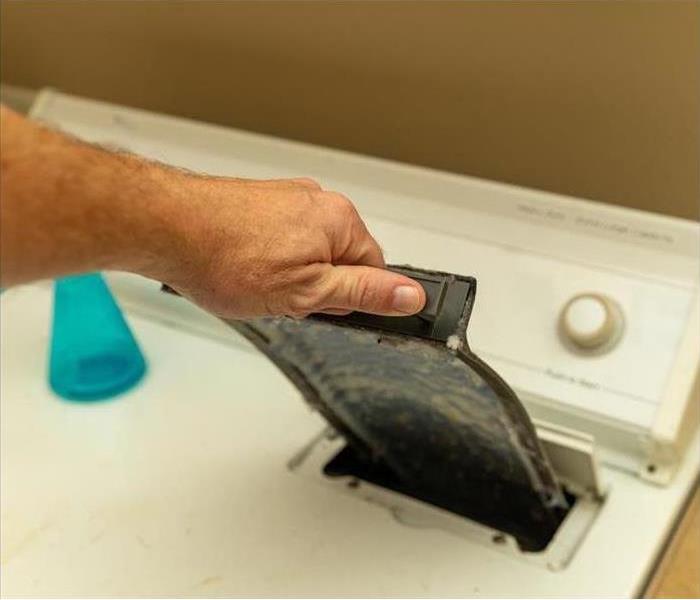 A lint fire is often avoidable.
A lint fire is often avoidable.
One of the leading causes of burned down homes is a lint fire. People underestimate the importance of routinely cleaning out their lint traps and dryer vents. If you want to avoid the risk of a dryer fire, then consider the advice of many fire restoration professionals in Bountiful, UT, and adhere to the following three rules.
3 Rules to Avoid the Risk of a Dryer Fire
- Clean Lint Filter After Every Load
How often do you check the lint trap in your dryer? All dryers have a lint trap, and it is typically installed near the front of the drum. If you are not in the habit of cleaning the trap out, you might want to start. The trap should be cleaned before and after every load, reducing the risk of a fire in the appliance.
- Clean Vent Pipe Every 3 Months
The dryer vent is often the leading cause of a lint fire. People neglect the vent because it is behind the appliance and can be cumbersome to get to. Thankfully, there are cleaning kits you can purchase, making the job somewhat more manageable. The vent pipe needs to be cleaned at least once every three months, but you might want to clean it more often, depending on the number of people living in the home.
- Contact a Professional for Annual Inspections
Like all appliances, the dryer needs maintenance to ensure it operates as expected. To keep your dryer running at peak performance, consider hiring a professional technician to inspect the mechanics at least once per year.
A lint fire can be devastating, and it is often avoidable. Checking the trap before and after every load ensures that there are no combustible materials remaining in the system. Cleaning out the vent pipe once every three months ensures that lint does not build up in the line. Most households use dryers, it is up to those homeowners to ensure the proper upkeep to minimize the risks of fire.
How To Flush Your Water Heater in 5 Easy Steps
7/12/2022 (Permalink)
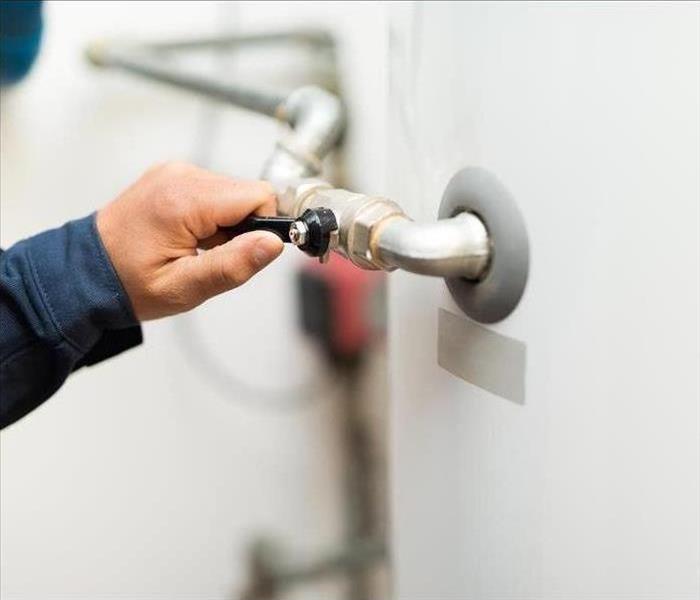 It’s essential to perform regular maintenance on your water heater.
It’s essential to perform regular maintenance on your water heater.
Regular maintenance is crucial for your water heater’s longevity. By performing a water heater flush every six months, most water damage restoration professionals agree that you can avoid expensive repairs and even a failed appliance. Here’s how to flush your water heater in five simple steps.
5 Steps To Flush Your Water Heater
- Turn It Off
Before you flush the unit, you should shut if off completely. If it’s gas-powered, snuff the pilot light. If it uses electricity, turn off the power supply line at the circuit breaker.
- Hook Up a Hose
The garden hose tangled in your backyard will do. Attach one end to the drain valve, and place the other end somewhere that you’re comfortable receiving warm, sediment-filled water.
- Drain the Water Heater's Tank
Open the valve and allow the water to flow freely for five minutes. Next, turn the hot water on in the kitchen, which will aid in the draining process.
After two minutes, turn off the water supply valve on the water heater. The water will slow down gradually and then stop. Turn the water supply valve on one more time for a final flush. When the water and sediment subside, close the water supply valve once more, then close the drain valve, too.
- Restart the Water Supply
Once the valves are closed, turn the water supply on again and head for the kitchen. The faucet should still be on, but nothing will be flowing at first. When the water supply resumes, it’ll sputter a bit due to trapped air but will eventually return to a regular stream. This signifies that your tank is full, and you can turn the tap off.
- Turn the Unit Back On
After the tank fills completely, you’re safe to turn the unit back on.
To keep the showers in your Bountiful, UT, home comfortably warm, it’s essential to perform regular maintenance on your tank. Follow these five steps, and you’ll likely see that flushing your water heater is easier than you thought.
Finding the Right Fire Extinguisher for Your Home
6/22/2022 (Permalink)
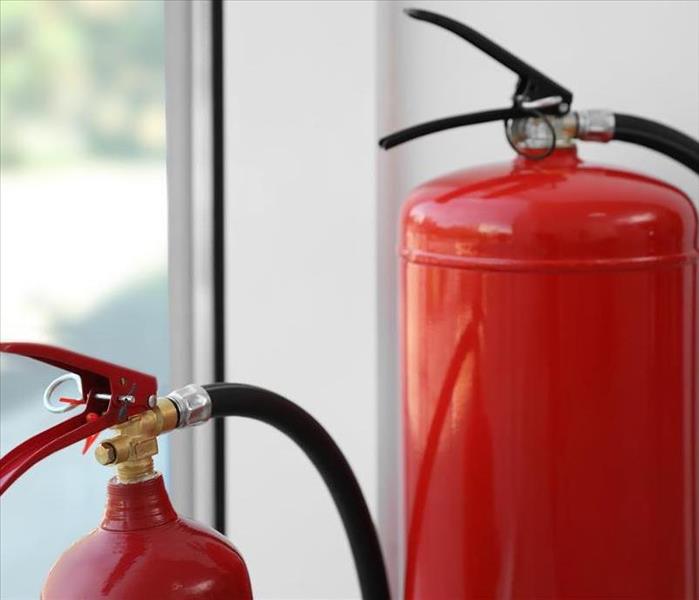 Follow our Tips and Find the Right Fire Extinguisher for you.
Follow our Tips and Find the Right Fire Extinguisher for you.
Responsible homeowners usually carry insurance to protect their homes and personal belongings from disasters such as theft and fire. While insurance can cover repairing and replacing losses, responsible homeowners also know that a plan for fire safety is also important.
A complete plan includes knowing how to evacuate the home and having smoke detectors and alarms to warn of a fire. Your fire safety plan is incomplete without a fire extinguisher on each floor. Here’s what you should know about buying extinguishers for your home in Bountiful, UT.
Choosing a Fire Extinguisher
While the National Fire Protection Association recommends an extinguisher for each floor, it’s important to understand the types of extinguishers that are out there first. Household extinguishers are categorized according to their rating, which indicates the types of fires they’re effective against:
- A - Effective on trash, wood, paper, and other normally combustible items
- B - Effective on grease and other flammable liquids
- C - Rated for electric fires
An extinguisher will indicate its rating. It will also include a number in front of the rating that indicates the degree of effectiveness. For example, a 4-A device will be more effective on combustible items than a 2-A device. Fire extinguishers that bear a C rating don’t include a number. This rating just indicates that the materials used to quench fires don’t conduct electricity.
When contemplating a home fire plan, consider the types of fires that are likely to occur in parts of your home. An extinguisher for use in a kitchen, for example, should include a B rating for grease fires.
Picking the Right Size
Fire extinguishers come in various sizes and weights. This should be another factor when choosing where to put them in your home. These are the standard sizes and recommended applications:
- 10-pound: Recommended for parts of the home where a fire can go unnoticed for a period of time, such as a garage or workshop
- 5-pound: Suggested for rooms like a kitchen where you need an extinguisher that’s easy to grab
- 2-pound: Recommended for cars
- Stovetop: Can be mounted on a range hood and is usually automatically triggered by flames
Recharging Your Extinguisher
When buying extinguishers, make note of whether it’s rechargeable or non-rechargeable. Non-rechargeable options can only be used once. This is why you can’t even test a non-rechargeable extinguisher, which gradually loses its charge once used. Rechargeable extinguishers can be serviced by an authorized fire equipment dealer. Even if you only used a small amount of the contents, your fire extinguisher will need to be serviced and refilled. Ideally, the extinguishers in your home should be rechargeable.
No fire preparedness plan is complete without a fire prevention system that includes fire extinguishers. While basic coverage involves at least one extinguisher per floor, you should consider the rating and the size of a fire based on its location in your home. Strategic placement of these fire prevention devices can reduce the damage you experience at your home in Bountiful, UT.
Less fire damage minimizes the time and cost required for a residential restoration services company to return your home to preloss conditions.
How To Respond to a Leaking Toilet
6/17/2022 (Permalink)
 Trust the Professionals. They can help you with your Leaking Toilet.
Trust the Professionals. They can help you with your Leaking Toilet.
Most of the time toilets work regularly and dependably without many issues, so it's easy to neglect them. When you notice that you have a leaking toilet, it's important to take quick action. There are two options: complete the toilet repair or replacement on your own or hire a professional in Bountiful, UT.
Identify the Cause of Your Leaking Toilet
Before you get started, you need to know why your toilet is leaking. Naturally, your first steps should include inspecting the toilet to find out where the leak originates. After you've identified the problem, turn off the water and complete the necessary repairs or contact an expert.
There are several possible issues to look out for:
Check the flapper for one of two common problems. First, the rubber or plastic flapper may break or crack because of wear and tear. Second, the flapper may get stuck in an open position, causing the toilet to flow continuously.
A faulty float could be cracked, or the float chain may be loose. In either case, repairing the float is pretty easy and can usually be accomplished within a few minutes.
There are several pieces of the fill valve that could cause trouble when damaged. If you haven't worked with this type of repair before, contacting a professional for help could be your best bet.
Anywhere the toilet is connected to the floor, to the supply line, and to other components of the plumbing system could be a problem. Look for worn seals or damaged connections.
A crack along the supply line can cause pools of water on the floor, leading to severe damage that requires the services of water damage recovery professionals. Damage along the supply line generally calls for the services of a plumber.
A broken tank requires a complete toilet replacement. Cracks or breaks can be temporarily sealed with putty, but this step only provides a short-term solution. However, it may be possible for you to replace the toilet yourself.
As always, if you aren't confident in your ability to complete repairs or replacements, contact professionals. The costs related to making mistakes are often much higher than the initial cost of hiring an expert would have been.
Replace the Toilet
Replacing a toilet requires several pieces of equipment, including a putty knife, hacksaw blade, adjustable wrench, and some pliers. You'll also need the new toilet, a wax ring, and silicone caulk. Carefully read the installation instructions for any other supplies you might need and then follow these steps:
- After turning off the water, drain the water from the tank by flushing.
- The next step is disconnecting all of the places where the toilet is connected to the supply line and plumbing system.
- Remove mounting nuts, the tank, and the toilet.
- Remove and replace the old wax ring and flange with a new ring and flange.
- Test the toilet to be sure everything is in the correct position. This is often a two-person job to ensure a proper fit and seal. When tightening the bolts and nuts, don't use too much pressure, and work from side to side to keep equal amounts of pressure on each side.
An old toilet can lead to a lot of problems. Don't wait for a leaking toilet to cause significant water damage before you take action to correct the situation.
Ways To Repair and Prevent a Basement Flood
6/8/2022 (Permalink)
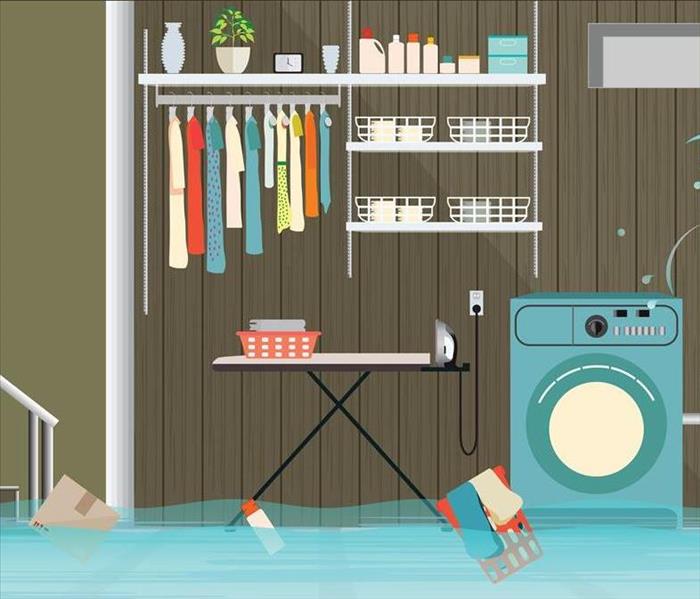 Our tips will help you if you experience a Basement Flood.
Our tips will help you if you experience a Basement Flood.
Whether used for storage or another living area, a basement flood in a client’s Bountiful, UT, home is a frustrating situation. Luckily, there are professionals available 24/7 who are trained and ready to get the home back to normal. Choosing a certified water damage restoration company provides peace of mind that whatever mitigation and restoration needed will be done fast and right with a focus on restoring and not replacing.
Steps To Fix a Flooded Basement
Whenever there is an excess amount of unwanted water, insurance companies are typically the first to be called. If the insurance coverage includes flooding, the next call should be to a company dedicated to minimizing secondary damage and ensuring the property is returned to preloss condition.
Basement Flood Restoration
Once a restoration team arrives, the first step will be an assessment to develop a plan of action. Although every situation is unique, fixing the basement often includes the following steps:
- Protective clothing and gear will be worn before entering the affected area.
- Saturated belongings are removed from the premises and taken off-site to be dried out, pre-tested for salvageability and cleaned.
- The water extraction process begins. This typically involves industrial-grade pumps to speed up the process.
- High-grade fans, air movers and dehumidifiers are brought in to begin drying the property. Depending on the severity of the damage, this may take several days.
- The walls, floor, ceiling and any other affected areas are cleaned, sanitized and deodorized. Technicians will also inspect for any signs of mold or other hidden damage.
- Once the basement is dried and cleaned, restoration repairs will be made.
Floodproofing Tips
Once a home has water in the basement, it’s vital that homeowners take steps to keep it from happening again. While natural flooding may be out of everyone’s control, there are ways to beef up the home to be resistant to other water issues. Four easy ways to help make that happen include:
Regularly clean downspouts and gutters
Any debris that builds up affects the water flow. Instead of moving away from the home, it will start coming down the sides and pooling against the foundation. The downspouts should be positioned so that water is directed a minimum of three feet from the foundation.
Rethink landscaping
An improper slope may be the cause of water issues. Bringing in some extra dirt and rock may be needed to ensure it flows away from the home. Flower beds, French drains and swales are other ways to direct the flow of water to greenery instead of the basement.
Inspect the foundation
One tiny crack opens the door to a slow leak that may turn into bigger problems. The exterior foundation and interior basement should be regularly checked for signs of a leak.
Install covers over window wells
Designed for easy installation and relatively inexpensive, these covers help seal out moisture from building up.
Homeowners dealing with a basement flood have a lot on their plates. Choosing a professional to handle the mess and taking steps to prevent flooding is essential to getting the home back to "Like it never even happened."
How Can You Get Your Business Ready for a Storm?
6/7/2022 (Permalink)
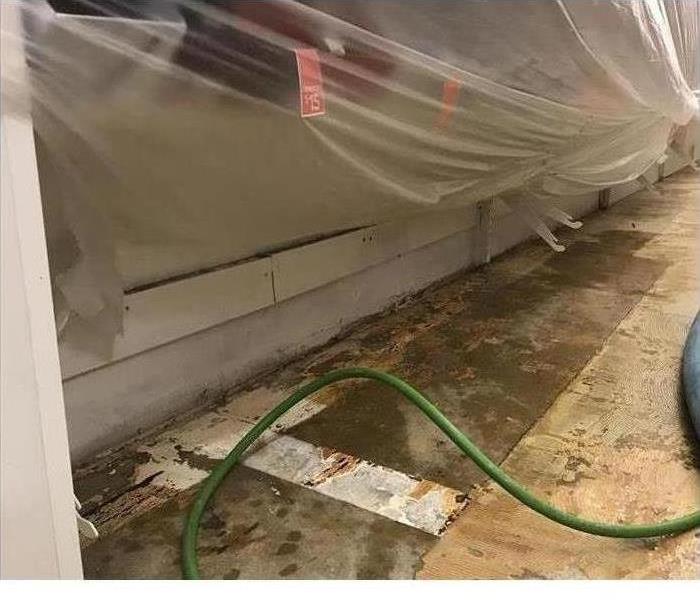 Get Your Business Ready for a Storm following our Tips.
Get Your Business Ready for a Storm following our Tips.
When it's storm season in Bountiful, UT, you want to make sure your business can withstand any of the weather that comes its way. Whether you own the building or rent, you can do a few things to prepare your company for the potential flood water, hail damage and wind damage caused by storms. You can get your business ready by protecting operations and preparing for the worst-case scenario.
Protect Your Operations
A storm can affect day-to-day operations of your business. You can do a few things to make sure you can get back up and running even if you lose power or have damage to your building.
- Back up your data. Keeping your billing and customer records intact can help you transition smoothly.
- Set up business interruption insurance. This type of insurance can help cover lost time caused by the storm.
- Store extra equipment safely. If you have any extra equipment, it should be kept in a safe area to avoid flood damage.
If a storm causes water damage, you may have to close your business to make repairs. When you stop operations, you could lose business unless you have a backup plan in place. Many company owners try to rent a temporary workspace if theirs is too damaged to use after bad weather leaves flood water in the space.
Know Who To Call.
One of your first steps in preparation is knowing what you would do when disaster strikes. If you ever come in, in the morning to find a flooded building, what would you do? Your first step should be to call in a commercial restoration team. This band of experts can help you remove the water and remediate the damage.
A big storm can bring flood water into your commercial building. If you take a few precautionary steps prior to storm season, you may have an easier time bouncing back no matter how much damage your building sustains.
Share the Work: Content Cleaning After a Fire
6/7/2022 (Permalink)
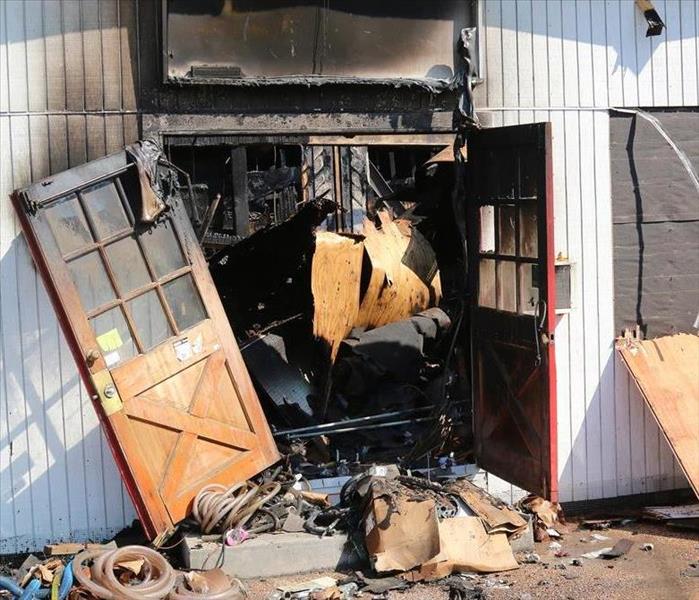 Content Cleaning After a Fire is a complex task. Let the Specialists help you.
Content Cleaning After a Fire is a complex task. Let the Specialists help you.
Smoke and soot contain many chemicals and substances that could be harmful. After your building has been affected by fire, it's important to begin content cleaning efforts as soon as possible. While you can tackle some chores, including wiping items down, other tasks should be handled by professionals, such as dry-cleaning textiles.
Get to Work As Quickly As Possible
The longer you wait to address fire and smoke damage, the harder it will be to get rid of odors and related problems. Don't give smells and substances time to soak into carpets and furniture.
- As soon as it's safe to enter your property, open doors and windows to provide ventilation.
- Wear gloves, a face mask, and eye protection to avoid coming into contact with smoke particles.
- Turn off air conditioning or heating systems that might circulate air from affected area to isolated parts of the building.
- Position fans toward open doors and windows.
Identify Tasks You Can Handle
There are several tasks you can complete without the help of content cleaning professionals. These include vacuuming soot and wiping down hard surfaces. You can throw out items that have been too damaged to salvage. Deliver items, such as window furnishings, to a dry-cleaning professional.
Contact Professionals for Deep Cleaning
Other tasks should be completed by experienced fire damage remediation professionals. These technicians often have specialized tools and cleansers to ensure that deep cleaning reaches under carpeting and behind walls. Ultrasonic treatments deodorize and disinfect non-porous materials. Powerful cleansers leave your building and possessions looking and smelling as good as (or better than) their pre-fire conditions.
Ask About Storage
Professionals often provide content storage for those items that require further attention and will hang onto them until your property is ready to be put back together. This service can protect your goods from being re-affected by smoke and soot.
Knowing that smoke-affected goods can be cleaned and repaired provides peace of mind for many property owners. From dry-cleaning to ultrasonic treatments, take advantage of Bountiful, UT, smoke damage remediation services for thorough restoration of your business.
How To Make a Flood Claim After a Storm
5/25/2022 (Permalink)
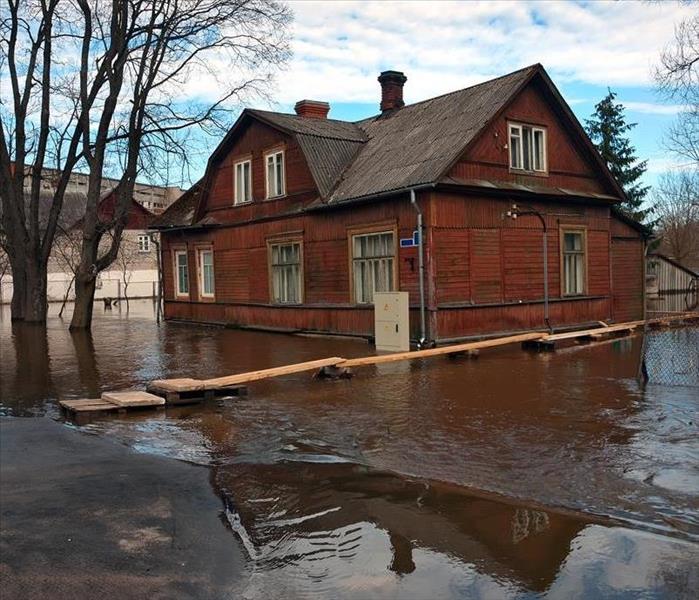 We help you to Make a Flood Claim After a Storm. Just follow Our Tips.
We help you to Make a Flood Claim After a Storm. Just follow Our Tips.
If a storm damages your Bountiful, UT, home, you likely will not be able to afford the repairs yourself. Luckily, your flood insurance policy should help you pay for emergency restoration services. To ensure that your flood claim is approved, follow the below steps:
4 Steps for Filing an Insurance Claim
1. Call Your Insurer
First, you must tell your insurance provider about the flood in your home. You can easily find the insurer’s phone number online. You will also likely have to notify your provider about the loss in writing. Before you contact the insurer, be sure to have your policy number handy.
The insurance representative will ask you for this information over the phone. You will also need to provide contact information and your mortgage company, if applicable.
2. Prepare for the Adjuster and Other Visitors
The insurance company will send an adjuster to your home to examine the damage. Before he or she arrives, take videos and photos of the affected areas. Be sure it is safe to re-enter your home first. The images should show the height of the floodwater, the structural damage to the house, and any personal items that were harmed.For larger appliances and devices, such as computers, televisions and washers/dryers, take a picture of the serial numbers, makes and models.
After the flood, you will likely need to throw away some items immediately. In particular, perishable foods, pillows and clothes may have to be discarded. Document those things before tossing them in the trash. Keep in mind that you may receive visits from multiple adjusters after the storm. That is because different adjusters specialize in various types of damage.
If the weather disaster caused both water and wind damage, for instance, you may have one adjuster who handles your flood claim and another who handles the wind claim. The adjusters may also bring an engineer or other specialists to your home. These experts can help analyze the extent and cause of more complex damages.
3. Work With the Adjuster
Once the adjuster arrives, let him or her walk through your home. He or she will likely take additional photos and measurements for the insurance company. Get the adjuster’s contact information so you can ask him or her questions that you have.
The adjuster should also have your current contact information, particularly if you are temporarily staying in another home or a hotel during the restoration process. You may also want to ask the adjuster about receiving an advanced payment to help you get back on your feet more quickly.
4. Submit Your Claim
The adjuster should additionally help you send in your insurance claim. The claim should include an estimate of your loss that is based on the videos and photos you took after the storm. Talk to your agent about the specific details of your policy. This way, there will not be any surprises during the claims process. Be sure to also understand and meet any deadlines for submitting the required paperwork.
If a storm damages your home, you should quickly make a flood claim with your insurance provider. By working with your adjuster and a restoration company, you can start the recovery process.
How SERVPRO Helps With Claims
5/19/2022 (Permalink)
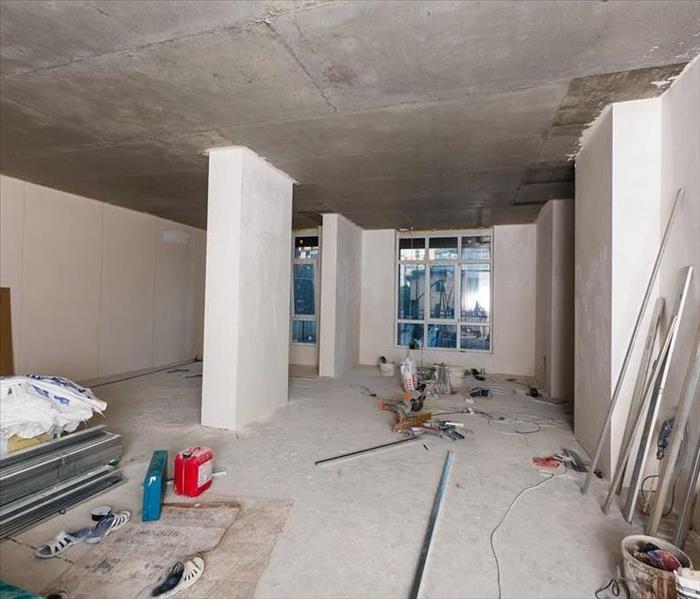 We are here to Help you with your Claims.
We are here to Help you with your Claims.
SERVPRO claims service is dedicated to restoring customers' property and getting them back to business as usual as quickly as possible. Our team can help you settle claims fast, resulting in satisfied customers, lower costs and increased policyholder retention.
SERVPRO Claim Services
There are several reasons to choose our restoration professionals to assist you with your emergency response:
1. Customer Focus
Our priority is restoring your customer's property. Our professionals in Bountiful, UT, work hard to limit your customer's damage.
2. Quick Response
We have over 1,900 locations in the United States and Canada. This allows us to respond quickly at any time of the day or night.
3. Highly Trained Team
All our professionals are trained on Institute of Inspection, Cleaning and Restoration Certification standards for fire and water cleanup and restoration. We also provide continuing education for our professionals and insurance clients at our state-of-the-art IICRC-approved training facility. Our training facility offers employee certification training, new franchisee training, continuing education, e-learning and an IICRC training program.
4. Guaranteed Work
All of our work comes with a two-year labor and one-year materials warranty. We will re-service your customer at no additional charge for up to two years if our service fails to meet commercially reasonable expectations.
5. Cost Savings
Restoring property is usually less expensive than replacing it. We are committed to restoring all of the property that can be restored which saves you money.
6. Documentation Provided
Our team provides all customers with photos of important items and an itemized loss inventory so that your customers can have peace of mind that all of their property is being included in the claim. This also saves you time.
7. Only Qualified Vendors Used
We hold vendors to the same high standards we do our professionals. You never have to worry that we will subcontract work to substandard vendors. Because we handle working with vendors for you, that is one less task you need to complete to close your claim.
8. Dedicated National Accounts Team
We have a dedicated team focused on establishing and maintaining relationships with insurance companies. The goal of this team is to make sure both insurance companies and their customers are highly satisfied with our service.
9. Quality Assurance Guidelines
To ensure our work meets your expectations, we have established guidelines that include internal audits. Local professionals must meet 21 different requirements to get insurance client referrals. All of our employees must pass background checks. We keep communication with insurance agents and adjusters transparent and provide completed job files as proof of work.
10. Many Types of Restoration Services Offered
Our professionals are trained to restore property damaged by water, fire, mold and storms. We also provide specialty cleaning, biohazard services, tarp service, storage, document restoration and crime scene cleanup. Because many disasters involve multiple types of restoration, working with our team can save you time.
Our team works hard to ensure we provide the best claim services in the industry. When you use our restoration services you can rest assured that your customers will receive, fast, professional service that saves time, effort and money.
How To Administer Burn First Aid
5/11/2022 (Permalink)
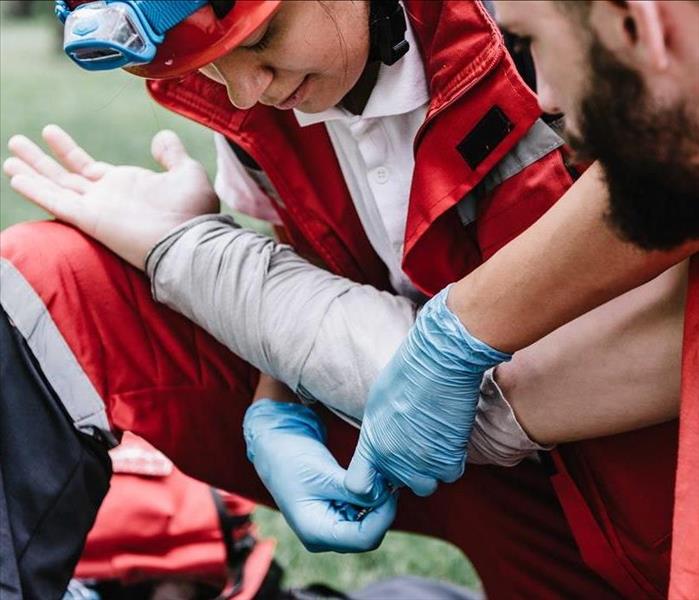 Know more about Burn First Aid by Following Our Tips.
Know more about Burn First Aid by Following Our Tips.
When a fire occurs in your building in Bountiful, UT, you must start your emergency protocol quickly and efficiently. In addition to the fire damage that flames and smoke are likely to cause to your building, you also need to make sure that everyone gets out safely with little to no injury. Sometimes burns do happen, though. It's crucial to know how to respond.
Determining the Type of First Aid Needed
The first thing you need to do before administering burn first aid is to determine how severe the injury is. A minor burn doesn't usually require medical attention. You will need assistance from the emergency response team if the problem shows signs of being severe:
- Charred patches of skin
- Deep wounds that go through multiple layers of skin
- Large burn that is over three inches in diameter
- Abrasion located on a sensitive part of the body such as the face or extremities
- Intense or sudden swelling
Protecting the Injured Person
People with both major and minor burns need to be protected from further injury before anyone begins to administer aid. Follow the evacuation procedures you have practiced to help them get clear of the building that has fire damage. Then make sure they are comfortable and that all their vital signs such as breathing and body temperature remain as close to normal as possible.
If clothing is stuck to the burn, do not attempt to remove it, but you can help the victims take off constricting jewelry or other items that may get in the way of treatment.
Treating a Minor Burn
A small, minor burn that shows only red skin or a few blisters doesn't necessarily need medical intervention. Keep it cool, clean and covered. Run it under cool water or lightly pat with a damp rag to reduce the heat. Use a first-aid ointment to clean the area gently. Cover it loosely, careful not to pop the blisters, so that it is protected from the air and anything it may carry.
Finally, the burn victim can take an over-the-counter medication designed to reduce pain, fever and swelling to help relieve discomfort.
Dealing With a Major Burn
Fire restoration experts know how quickly flames can destroy a building. A raging fire can also injure anyone caught in its path. When people show signs of a major burn, there is not much a person without medical training can do for them. You should loosely cover the burn with a clean cloth to protect them from further injury until the emergency team arrives.
Don't leave them unattended, just in case they go into shock or need your assistance. Wait for them until the ambulance arrives and then let the EMTs take over.
Knowing the right evacuation routes to get out of a building with fire damage is important. Understanding how to administer aid for burns is crucial, too. The more people there are in your building who know the basics, the better chance everyone has of getting out of the fire mostly unscathed.
Understanding Water Damage Categories and Cleanup
4/21/2022 (Permalink)
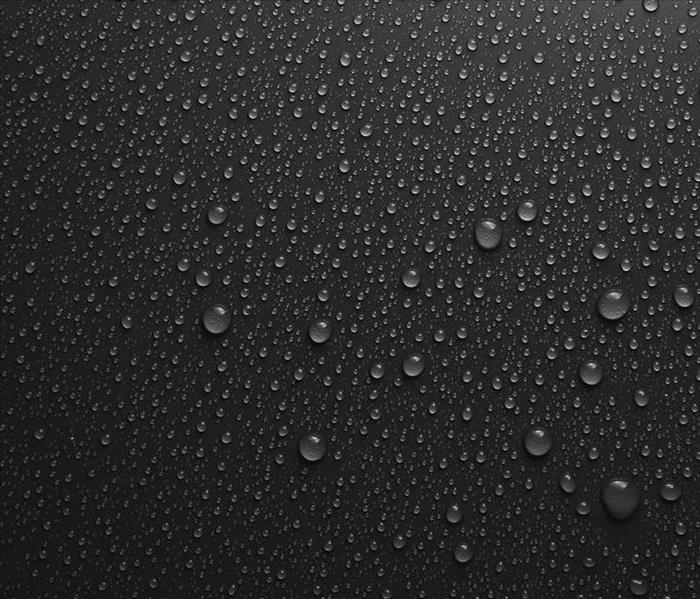 Know more about Water Damage Categories and avoid Damage in your Property.
Know more about Water Damage Categories and avoid Damage in your Property.
Water damage refers to the destruction caused by the presence of water in places that it shouldn’t be for a period of time. It can range from minor water spots that affect the appearance of a surface to major destruction such as burst pipes and flooding, resulting in the rot of materials, mold growth, and property loss. Water damage falls under one of three categories, ranging from clean water to black water. Let’s take a closer look at these categories.
Exploring Category 1, Category 2, and Category 3
The three major categories for damage are as follows:
Category 1:
Water in this category usually comes from a source such as a broken water supply line or overflow of a tub or sink. Also known as clean water damage, category 1 water damage is the least severe as the water is free of toxins and sewage. It’s also implied that the places impacted by this damage are also clean.
Category 2:
Known as grey water, this water likely contains some contaminants and should be cleaned immediately. Sources of grey water include toilets, dishwashers, washing machines, and sump pump backups. Clean water that has not been cleaned or dried in 48 hours can become Category 2 water.
Category 3:
The most severe of damage, this category of water is also known as black water. This water contains bacteria, fungi, and other organisms. Sources include toilets containing feces, sewage backup, seawater, groundwater, and flooding. Grey water that has not been removed in 48 hours should be treated as the most severe water damage.
Cleanup of water damage differs significantly between the various categories, but each category can lead to more serious problems, including mold growth and spread. SERVPRO Franchise Professionals in Bountiful, UT, are equipped and ready to fully clean and restore water damage in any category.
Handling Water Damage Cleanup
Severe water problems require approaches that are more advanced and beyond the ability of a DIY solution, such as sewage cleanup. Disinfection and sophisticated drying techniques are necessary for the most severe of damage. Restoration professionals assess the damage, determining the class of damage accordingly:
Class 1: This applies when less than 5% of a space is impacted, evaporation is slow, and little moisture has been absorbed.
Class 2: A faster rate of evaporation is noted for this class, and between 5 and 40% of the space is affected, especially the entire carpet and upholstery.
Class 3: This class is used for the fastest rate of evaporation in a room with over 40% of the area affected. Typically water damage comes from overhead.
Class 4: This applies specialty drying for surfaces such as wood, concrete, plaster, and other materials.
Involving the pros is not just about the level of water damage, but also the best approaches for cleanup and drying.
Water can be a destructive force on your property based on different factors, primarily the source, the level of contamination, and whether it’s been left to sit. Black water represents the most severe category of damage. Cleanup is best left to damage restoration professionals not only to return your place to pre-damage conditions but also to determine the best way to accomplish this.
Answering Common Questions About Partial Fire Losses
4/13/2022 (Permalink)
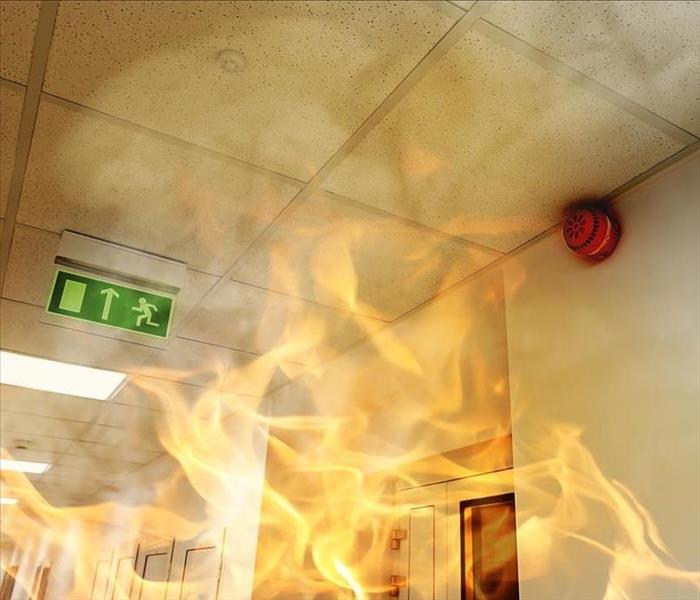 If you have Questions About Partial Fire Losses, take a look at These Tips.
If you have Questions About Partial Fire Losses, take a look at These Tips.
Not every commercial blaze results in the total destruction of a property. You could end up with a partial fire loss, instead.
A partial loss can also occur if there is damage to an adjacent building. The smoke or extreme heat could migrate toward your property. The fire retardant used by first responders could harm your premises, as well. Whether the partial loss results from a fire in your building or a nearby one, there are some things you should know about making an insurance claim.
Common Questions About Partial Fire Losses
Should You Get the Property Inspected for Fire and Smoke Damage?
Sometimes, the damage caused by a fire is obvious. However, this is not always the case. If there has been any kind of blame in or near your Bountiful, UT, property, you should get it inspected by a qualified professional.
Your insurance provider will likely send an adjuster to survey the area. Yet this is not sufficient. You should also hire a structural engineer or contractor to evaluate the structural integrity of the building. You may also want to bring in an industrial hygienist to check the air quality. This is particularly important if you or any of your employees have asthma or severe allergies. Ideally, the inspection should cover:
- Windows
- Roofing
- Interior Walls
- Heating and Plumbing Systems
- Concrete and Siding
The inspector should also estimate the cost of fixing your premises. You will likely need to hire fire restoration professionals to clean the property and repair any damaged assets.
Will Your Insurance Pay for Mold, Smoke and Ash Cleanup?
A fire loss does not only include the harm caused by the blaze itself. There could also be ash or smoke damage. Rugs, curtains and fabrics could develop lingering odors. The ash could also stain tile or marble.
If the flames caused your building's sprinkler system to activate, the water from those sprinklers could encourage mold growth, as well. Mold can be particularly prevalent on wet drywall. Any fire-related holes in your walls or roof could additionally allow rain to enter the property, potentially sparking a mold infestation.
Will your insurance pay for these damages?
It depends on your policy, but ash and smoke are typically covered. Any porous materials should be given to a restoration professional. The expert can then help you decide whether the items can be salvaged or should be replaced.
Mold damage, however, is not always covered by insurance. Many companies have mold exclusions, so you will have to talk to your adjuster or read over your policy to find out if you have any coverage.
Will Insurance Cover Landscaping Damage?
The smoke and heat from the fire could also destroy any plants outside your property. Your policy should have some coverage, but it may be limited. For instance, most policies only pay $500 for each damaged tree, yet a mature tree can be worth several thousand dollars. Some plants may appear fine after the fire yet die over time. You should thus keep open your insurance claim for several months in case you have to make any additions to it.
A partial fire loss can still be quite expensive. Thankfully, a decent commercial insurance policy should cover at least some of the costs.
How To Assess Mold Damage
3/21/2022 (Permalink)
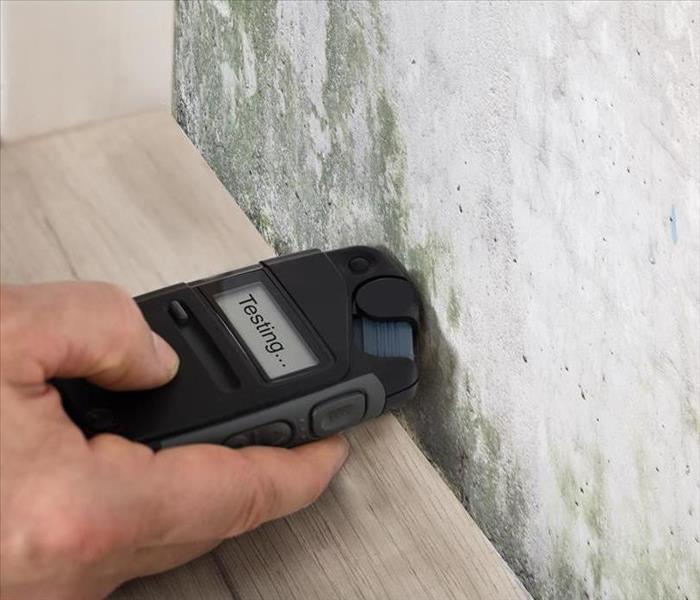 Learn More about Mold Damage and receive the Best Assessment by Following These Tips.
Learn More about Mold Damage and receive the Best Assessment by Following These Tips.
Whether you just smell the distinctive musty odor of mold or see visible spots in your Bountiful, UT home, determining the extent of the damage isn’t always easily apparent. Mold and mildew may easily spread to other areas of the home, as well as be lurking behind walls, under flooring and in other areas that are hard to reach or see. To ensure the best air quality and to protect the home, it is recommended to get a mold assessment from a professional mold damage company.
Why Get an Inspection?
If you think you have a lurking fungi issue, do you know what kind it is? While some are fairly harmless, black mold is not a type you want to spread in your home. A professional inspection not only helps determine the mold species but also helps with the following:
- Pinpoints the location of the mold growth, as well as how big the problem may be.
- Determines the number of spores that are airborne and circulating in the home.
- After remediation, it provides peace of mind that the problem has been properly eradicated.
What Does an Environmental Hygienist Test?
A mold assessment should always be done by a certified specialist. This will ensure that they have the proper training and tools to help you solve your mold issue. As part of the inspection, they will conduct tests to find the moisture source, estimate the size of the impacted area and identify the type of molds found.
To assist in the process, environmental hygienists have an array of industrial tools to ensure the best results. This includes a laser particle counter to check air quality; moisture meters to locate areas with high moisture levels; hygrometers to test humidity, dew point and temperature; and infrared cameras to identify areas with high temperatures or elevated moisture levels. A professional will conduct the following tests:
Air:
This determines how concentrated the spores are. This is an especially important test when there are no visible signs of growth.
Surface:
Swabs, tape and other tools are used to take samples throughout the home. Since mold forms where it has the right conditions, it could be growing in different parts of the home. These tests help determine how many spores and how much mold may be growing.
Bulk:
Although not always necessary, this involves removing materials from the home to be tested in the lab to determine how concentrated mold particles are in the home.
Culture:
In the lab, the samples taken from the home are purposely nourished to create a colony. This enables the professional to verify which mold species is in your home.
Once the assessment is completed, a specialist will provide an overall plan of action for remediation and restoration. During and after all the work is done, inspections are completed to ensure the cleanup is taking care of the problem and that the home is free of mold.
The home should be a safe, welcoming environment. When water damage is sustained, it means that mold may be hiding. A mold assessment helps determine how big of a problem you have and makes it easier to get a plan of action in place to remediate it.
How To Make and Practice Your Home Fire Escape Plan
3/14/2022 (Permalink)
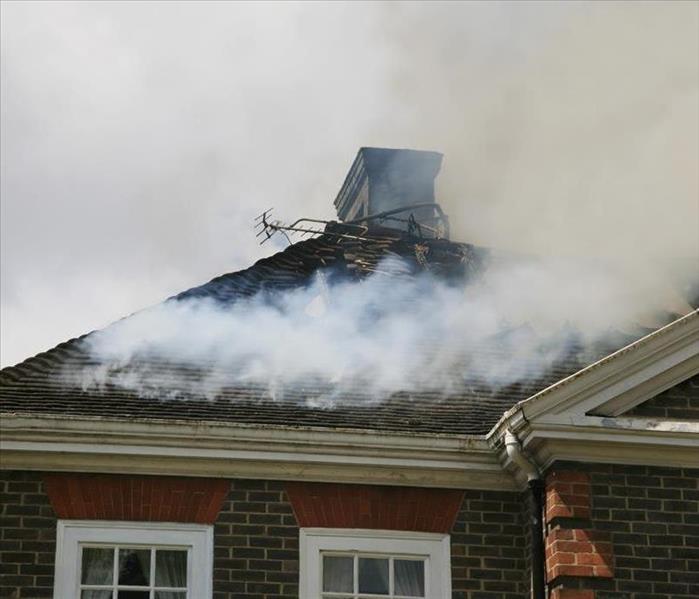 Make and Practice Your own Home Fire Escape Plan, and Avoid Fire Damage in your Bountiful, UT House.
Make and Practice Your own Home Fire Escape Plan, and Avoid Fire Damage in your Bountiful, UT House.
If a fire ever breaks out in your Bountiful, UT, home, you do not have as much time to flee as you think you do. The National Fire Protection Association recently found that one-third of American households thought a fire does not become life-threatening until six minutes after it starts. However, a fire can quickly spread to dangerous levels in even less time. That is why creating a fire escape plan is so important.
Unfortunately, only about one-third of American households have actually made and practiced an escape strategy. If you are one of the homeowners who has not properly prepared your family for a fire, follow the below steps.
How To Create a Fire Preparation Plan
1. Discuss All Possible Entrances and Exits
Start by bringing everyone in your family together. Then go throughout the house and note two escape routes out of each room. Make sure that each window and door can be easily accessed and opened.
2. Choose a Meeting Place
Next, pick a meeting place where everyone can gather after escaping the fire. The location you choose should be a safe distance away from the home.
3. Memorize Important Numbers
Once the plan is in place, have everyone in your home memorize the phone number for your local fire department. This way, anyone can call for help from a cell or a neighbor's landline. You may want to store and remember the contact information for your local fire restoration company, as well.
4. Check and Install Smoke Alarms
While you are discussing your fire escape plan, you should also check to see that your smoke detectors are functioning properly. Put a smoke alarm on each level of the home, inside each bedroom and outside each sleeping location. Look for detectors that are interconnected. If one of those alarms goes off, the other ones in the home will beep, as well.
How To Practice Your Escape Plan
Just creating a fire preparation plan is not sufficient. You also need to practice the strategy at least twice per year. This way, you can discover and fix any weaknesses in the plan.
Your children need to understand how to respond if the smoke alarm goes off while they are sleeping. You should thus regularly hold these home fire drills at night. You do not want to frighten the kids, however. You can thus warn them ahead of time that the drill will occur.
Another benefit of practicing the escape plan at night is it allows you to see which members of your family sleep through the smoke alarm. If anyone in your household stays asleep throughout the drill, give someone in your home the job of waking up the sleeping person during a real fire.
In some situations, the smoke or fire may be too intense for you to escape. Plan for this scenario, as well. Each person should practice sealing himself in a room and covering door cracks with towels or tape.
It is easy to panic if you see flames or smoke in your house. Yet if you make and practice a fire escape plan ahead of time, you and your loved ones will know what to do during this emergency.
Is Your Commercial Property Impacted by Storm or Flood Damage?
3/9/2022 (Permalink)
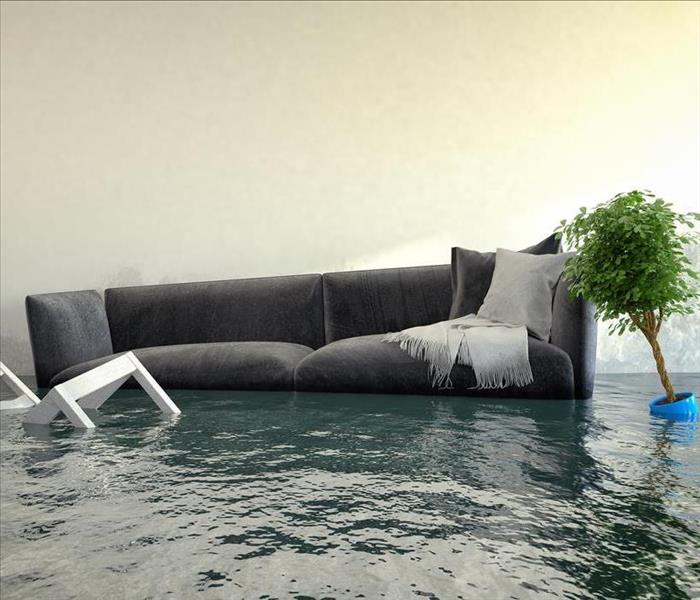 If you experience Storm or Flood Damage in your Commercial Property, do not heasitate and Contact us.
If you experience Storm or Flood Damage in your Commercial Property, do not heasitate and Contact us.
According to the Insurance Information Institute, flood damage remains a prominent issue within the United States, noting that the cost of water repair has quadrupled since the 1980s. Some of this harm stems from water breaks and sewer overflows. However, business owners also face devastation from other external sources such as weather events. These cases can result in a damp, potentially expensive mess.
The source of the dampness matters, though. Is it really from a flood or the storm? Owners may think it doesn't matter, requesting a dry out and cleaning. However, circumstances vary for each situation and in working with restoration and claim procedures; therefore, it's critical that proprietors in Bountiful, UT, know the difference, seeking appropriate remediation for the harm. The following are distinctions between the two events.
What Qualifies as Flood Damage?
Flood water is considered a rise in a body of water such as a river, ocean or lake. It comes from the outside to the inside of the building. The overflow may occur during a storm, but the harm itself comes from the external body of water.
The Federal Emergency Management Agency, FEMA, recognizes a flood as any of the following circumstances:
- A runoff or fast spread of water
- The breakdown or erosion of land that leads to excess water
- Mudslides
- Spilling over of tidal waters
For instance, rains might fill up a nearby retention pond during a hurricane. As a result, the water leaves its location, entering a nearby property and causing heavy saturation to the walls and floor. It could even ruin structures and products. The storm led to the overflow, but the damage was from flooding, not the weather. Insurance, therefore, would classify this event under flood coverage.
What Damage Occurs From a Storm?
Storm destruction results from weather-related occurrences, creating water or other physical complications. It's usually from above and, unlike floodwater, not from the ground. For instance, a storm might affect the roof, windows, electrical or plumbing. Moisture or other complications happen from that event. Common problems would include any of the following:
- Shingle damage
- Moisture entering from exterior exposure
- Fallen trees breaking windows, roofs or walls
- Lightning strikes that ruin electrical wires or business systems
Why Know the Difference Between the Two?
Water isn't always the same, and your insurance policy notes that. Commercial property insurance often includes storm damage but not flood coverage. Floodwater falls under an add-on policy, purchased separately. Business owners, therefore, need to know when they can file a claim with their agent.
A water restoration company may evaluate the wetness, determining the underlying cause. This overview proves helpful in learning how to manage the mess, sanitize the property and rebuild the location. In addition, business owners may use the assessment to collaborate with their insurance firms, concluding how to file and seek compensation appropriately.
Tend to storm and flood damage as soon as possible to mitigate potential issues and get back to business. Be sure to learn the underlying cause of the problems and work with professionals to remediate the issues.
The Secret to Disaster Response Is Teamwork
3/8/2022 (Permalink)
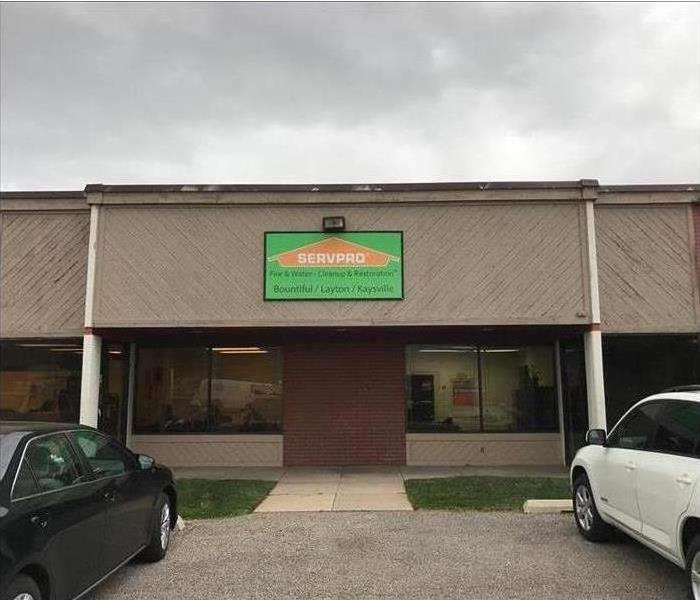 Our local Cleaning and Restoration Professionals can help you if you experience Damage in your property.
Our local Cleaning and Restoration Professionals can help you if you experience Damage in your property.
Cleaning and Restoration Business
There is a small cleaning and restoration business located in the Bountiful, UT, area. You see their green trucks at businesses and residences around town. Their advertisements talk about disaster recovery, but how can that be? There are so few of them. They seem to be good at drying buildings and always have the right equipment.
It’s easy to predict where to find them. They will show up at commercial and residential locations after:
- Fires
- Floods
- Winter storms
- Spring thaws
- Mold outbreaks
They seem to be pillars of the community and are nice to have around. They look good doing the small jobs but how effective could they be in a regional emergency? Looks can be misleading.
That Cleaning and Restoration Business Has a Secret Weapon
That small company is one of many similar businesses around the country. At last count, there were more than 1,700 of them. Every one of them works locally, just like the one near you. When disaster is imminent, their corporate office activates the Disaster Recovery Team. In a flash, that team turns those local hometown experts into a regional task force.
The recovery team is the communications center. It coordinates the activities of the task force and temporary labor brought in to assist with the storm damage.
Smaller Local Disasters Also Require a Team Approach
Not all emergencies require a regional response. They also have smaller storm response teams positioned at strategic locations around the country. Those teams provide the same support as the corporate team, but on a smaller scale. These storm teams also play a role in larger regional disasters. They provide an intermediate level of control and operate as mobile command centers.
The Secret Is Out
You now understand what makes that small cleaning and restoration business so special. They really are disaster recovery specialists. When fire, water or weather damages your home, you now know who to call. Those local cleaning and restoration professionals are ready to handle your problem. When they finish with the damage, your home will look “Like it never even happened."
Tips for Salvaging Sentimental Items After Fire Damage
2/23/2022 (Permalink)
 Follow These Tips for Salvaging Sentimental Items After Fire Damage in your Bountiful, UT property.
Follow These Tips for Salvaging Sentimental Items After Fire Damage in your Bountiful, UT property.
House fires can be particularly difficult to recover from because, in addition to the fire damage, there is often damage from smoke, ash, chemicals and water. These tips can help you save some of your irreplaceable sentimental items.
How To Salvage Sentimental Items After Fire or Water Damage
Your priorities when attempting to salvage items after a fire are to stay safe and to get the insurance process started:
- Call your insurance company to file a claim as soon as you can
- Check for structural damage before entering your home
- Do not attempt to salvage items from an unsafe building
- Wear protective gloves, eyewear and face masks
- Do not touch or breath in hazardous materials
- Take pictures of damaged items for your insurance claim
Tips for Handling Damaged Items
Items that have been damaged by flames, smoke, ash or water may be fragile. Improper handling may damage these items further. Handle items as little as possible. Fine particles of soot may be ground into the objects without you realizing it. Ash and soot are abrasive materials that can scratch fragile items.
Pick up items carefully and avoid touching the most damaged areas. Wear latex gloves to prevent the oils in your skin from permanently binding soot residue to absorbent surfaces. Do not apply pressure to surfaces that are blistered or lifting. Store items in supportive plastic containers or boxes until they are ready to be cleaned. Clean objects as soon as possible. The longer soot remains on objects, the more difficult it is to remove.
Cleaning Tips
Do not use water or cleaning solutions to clean items with fire damage. The water will force ash and soot further into the surface of the item. Vacuum ash and soot off your item as soon as you can. However, if a fire hose was used to put out your fire, avoid vacuuming any items that are still damp. Use a vacuum with a HEPA filter on its lowest setting.
Do not brush items or touch them with the vacuum nozzle. Vacuum the surfaces of folded items before unfolding them. If the item is not fragile, you may be able to use a soot sponge to remove additional soot.
Additional Tips
If you have shelved books that you want to save, they may be burnt on the outside, but undamaged on the inside. Vacuum the edges before you open the books to avoid spreading soot onto the pages. If you find a photo album that is stuck together, do not try to pry it open. Instead, contact a restoration company in Bountiful, UT, to find out if they can restore the item for you.
Heat may cause metal, ceramic and glass items to become brittle. Be careful when handling these items. Fabric items may appear to be intact but may fall apart if not handled gently. Before you give up on items that seem too damaged to restore, consult with a restoration company.
Not every family heirloom that has fire damage is restorable. However, it may surprise you how many of your sentimental items can be saved with careful handling and appropriate cleaning techniques.
What's That Smell? Treating Odors From Mold Growth and Water Damage
2/22/2022 (Permalink)
 These Tips will make Treating Odors From Mold Growth and Water Damage much Easier.
These Tips will make Treating Odors From Mold Growth and Water Damage much Easier.
Long after the flood is over, the water has been removed, and the contents of your home have been thoroughly dried out, an unpleasant odor may linger. There are a few reasons you can't just focus on the drying step of water damage recovery:
- Flood water carries contaminants from multiple sources.
- Water picks up chemicals and organic material as it flows through your home and property.
- Mold growth occurs within just a day or two.
- There could be hidden pockets of unresolved moisture.
A thorough response to water damage, especially when sewage loss is involved, requires some attention to flood-related odors.
Responses to Mold Growth and Other Flood-Related Odors
Water damage remediation teams use a variety of strategies and tools to tackle existing odors and prevent new smells from developing:
Increased Ventilation, Heaters, and Dehumidifiers
When professionals dry out your home and contents, they pull out as many tools as possible to ensure that water is pulled out from areas underneath carpets, behind the walls, and deep within out-of-the-way corners. Opening the windows and installing fans is the first step in this part of the recovery process. Heaters and dehumidifiers are used to decrease humidity in the air and to target moisture below the surface.
Masking Agents
These products are used to cover up unpleasant smells. They act quickly and are easy to set up around your home. While these products don't get rid of the odors, they do make your home temporarily more comfortable and are a good choice while you wait for stronger methods to work.
Deodorizing Agents
Odor counteractants use enzymes to break down odor-causing compounds, such as body fluids, smoke, mold, other organic matter. When water damage cleanup professionals spray deodorizing agents onto the surfaces of your home, you may notice a clean, natural scent that remains for several days. These sprays are safe for use on the surfaces that you and your family come into contact with each day.
Air Scrubbers
These machines work by pulling air through several HEPA filters. Particles in the air, as small as 0.3 microns, are trapped and killed by the filters. The devices also release ionized oxidizers into the air. The oxidizers have a negative charge and attract the positive ions that cause unwanted smells, such as musty odors. Air scrubbers are 99.97 percent effective at trapping those odor-causing particles.
Ozone Generators
These devices are often used as a last resort because of their powerful ability to affect the environment. Ozone differs from oxygen because it has one more oxygen molecule. When ozone generators are used, the third molecule detaches and attaches to other chemicals, such as the spores from mold growth. Too much ozone can lead to hazardous living conditions, and when professionals use this type of equipment to kill bacteria, they must follow strict procedural guidelines. If machines are used in your home, technicians will wait until people and pets have moved out before running the generators.
You don't need to wait for mold growth or flood water to treat your home for unpleasant odors. Bountiful, UT, Professionals can provide a remedial response for odor problems due to backed-up toilets, clogged pipelines, and hidden causes.
How To Perform Fire Sprinkler Maintenance
2/17/2022 (Permalink)
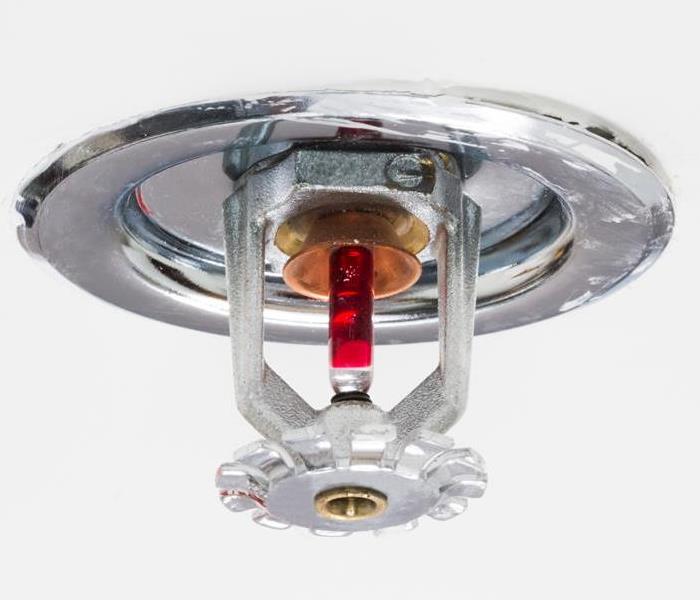 Follow these tips to ensure your Fire Sprinkler Maintenance. If you have any doubt, just contact us.
Follow these tips to ensure your Fire Sprinkler Maintenance. If you have any doubt, just contact us.
As a building and property manager, you have many responsibilities. Tenants expect you to maintain the property to ensure all safety features and utilities work correctly. Fire sprinkler maintenance should be chief among safety checks, according to fire remediation specialists in Bountiful, UT. These checks should include:
- Control valves
- Sprinkler heads
- Water pressure
Additionally, management needs to ensure that tenants know how to work around fire prevention systems. If you are in building management, there are at least five steps you need to take to ensure sprinkler systems remain functional and effective.
The 5 Steps of Fire Sprinkler Maintenance
All systems of fire sprinklers are similar but different. Before you delve into the five steps and self-assessments, check with the manufacturer or manual for your respective system. The following list is meant as a general overview of essential sprinkler maintenance and inspection.
1. Check Control Valves
Non-electric control valves essentially have two positions: open and closed. If the valves are closed, no water can get to the sprinklers, meaning the system is worthless if a fire breaks out. The valves should always remain open. Unfortunately, you never know when someone might mistakenly close the valves with tenants. Therefore, you should get in the habit of checking the valves weekly.
2. Clean Sprinkler Heads
As sprinklers are stationary and open to the environment, they tend to collect dust and debris. In kitchens, the heads can become coated with grease. As management, your job is to ensure the heads remain clean to avoid any impedance if a fire occurs. Additionally, it would be best if you never painted over a sprinkler.
3. Check Water Pressure Quarterly
For a sprinkler system to do its job, it requires adequate water pressure. Unfortunately, checking water pressure is not something most building managers or owners are trained to do. Therefore, you will probably need to bring in a plumbing or fire professional to check the pressure. This is a job that should be performed at least four times per year.
4. Clear Space Directly Under Sprinklers
Tenants will not always know how to work around sprinkler systems, so it is up to the property manager to inform them of what is and is not Ok. One common mistake tenants make is positioning shelving or tall furniture directly underneath the heads or the system. While the location of the furniture might suit the tenant, it obstructs the effectiveness of the sprinkler. Sprinklers are designed to cover a specific area with water. When a piece of furniture is blocking its head, the water will not cover as much of the site as it is supposed to.
5. Call Professionals for Annual Inspections
DIY inspections have their place, but since you are not a professional, hiring a company to assess the system at least once per year is best. The professionals will perform all the routine inspections above and more to ensure your system is operating as it should.
Commercial fire sprinkler maintenance is essential to a functioning and safe facility. When was the last time you had a professional inspection at your building?
How To Keep Mold From Returning
2/2/2022 (Permalink)
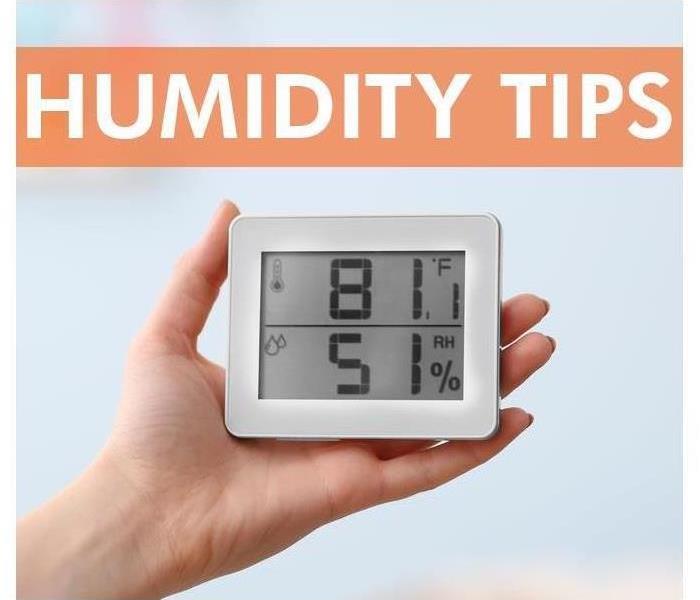 The humidity in your building should range between 30-60% to decrease mold growth
The humidity in your building should range between 30-60% to decrease mold growth
Mold spores in the air tend to settle on surfaces that have lingering water. You may have the mold growth removed, however, only to find that it returns to the exact same spot. There are several reasons why this might occur in your commercial property in Bountiful, UT, and identifying the cause is essential to preventing repeat growth from occurring.
Consider these causes to avoid Mold Damage
Humidity
There are four things mold needs to grow:
High humidity levels in your building can create the ideal environment for fungus. You can place several dehumidifiers in various locations around the building to bring the level down. By maintaining 40 to 50 percent humidity in your building at all times, you can lower your risk of mold growth.
Hyphae
The growth pattern of mold can make it hard to get rid of for good. Not only does it grow across a surface, but it also tends to grow down into the item on which it thrives. Hyphae are the tendrils that branch into the pores of the affected item. Even if you clean the surface with detergent and a clean cloth, mold may return. Only thorough professional mold remediation is able to extract hyphae out of the crevices into which they grow.
Damage
Water damage that has not been properly remediated is another likely cause of the return of mold patches to a previously affected area. Mold can start to grow in as little as 24 hours after the damage has occurred. The best way to prevent secondary damage is to repair the structures quickly. As soon as you know that a leak has saturated your floors, ceiling, or walls, you should call professionals to have the problem remedied.
Just because you can't see mold, that doesn't mean it won't return. Once you eliminate causes such as humidity, incomplete remediation, and water damage, you are more likely to be able to prevent future mold growth in your building.
Steps To Take After a Pipe Breaks
1/18/2022 (Permalink)
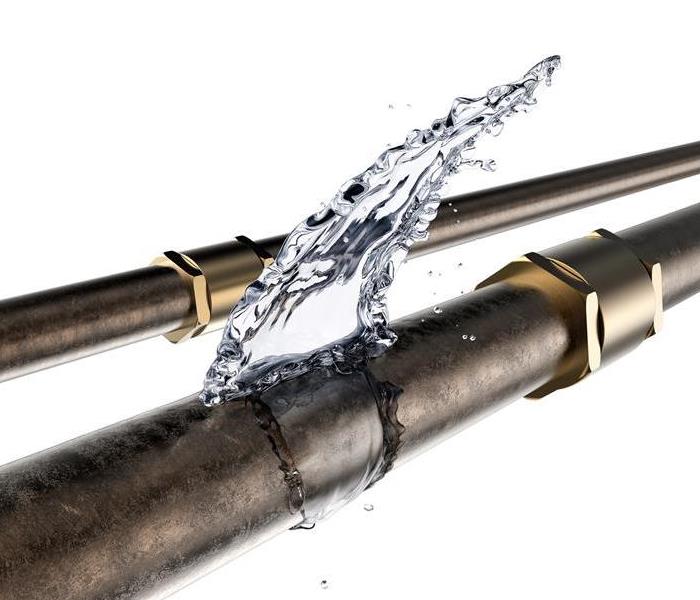 Water damage can make a real mess. If any problem related to this occurs, do not hesitate to contact us.
Water damage can make a real mess. If any problem related to this occurs, do not hesitate to contact us.
Bursting pipes in your commercial building can cause a lot of damage before you even know there's a problem. When this happens, you need to act quickly to minimize damage to the building and keep repair costs as low as possible.
Here are a few steps you need to take as soon as you are aware of a busted pipe.
Turn Off Water Main
The first thing you need to do when you discover any major leak is to shut down the water source. For most buildings, this is going to be the water main. This action accomplishes several things:
- Halts the flow of water to the broken pipe
- Relieves pressure on other pipes to keep them intact
- Gets the building ready for repair
Call Repair Professionals
The next step is to get repairs started as soon as possible. Call a local plumber who can come out and fix the broken pipe. After all, it doesn't do any good to repair the damage around it if the pipe spews water again after it's turned back on! You also need to call water damage restoration specialists to mitigate any problems with the building that are caused by the leak. When they arrive on site, they assess the damage and make a plan to address it. If you hire a company that takes care of both mitigation and restoration, you don't have to worry about making sure both teams keep each other informed.
Drain Pipes
While you are waiting on the plumber and the mitigation team to arrive, you can take an extra step to prevent additional problems with bursting pipes, especially if temperatures outside are below freezing. Turn on the faucets and flush the toilets to remove all the water that remains in them. That way, even if other pipes freeze overnight, there's no water in them to cause a break.
Document Damage
Your mitigation team will give you an itemized list of what needs to be done to fix the water damage in Bountiful, UT, but it doesn't hurt to have your own documentation. Take pictures and videos of the affected area so that you have proof to back up the things you list on your insurance claim. If you can safely do so, it's a good idea to accompany the adjuster and the mitigation assessor when they survey the building to gain a better understanding of all the repairs that are needed.
Upgrade Prevention Measures
The best solution to busted pipes is to prevent them from happening in the first place. While you are waiting on repairs to be finished, buy supplies to insulate the rest of your pipes, particularly the ones that are located along external walls. Make sure your thermostat remains no lower than 55 degrees overnight to help keep pipes warm. While the plumber is there, ask him or her to inspect pipes for small pinhole leaks and repair them before they get larger and cause a lot of damage.
Water damage from bursting pipes can make a big mess. With swift action and the right professional help, you should be able to get your building back in order in no time.
Dealing With Floods in a Low Risk Flood Zone
1/12/2022 (Permalink)
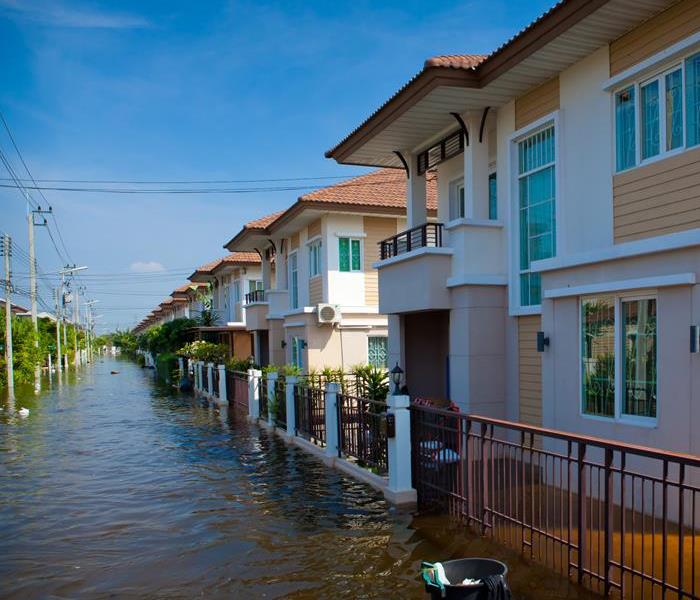 if you experience flooding outside high-risk areas, do not hesitate to contact us.
if you experience flooding outside high-risk areas, do not hesitate to contact us.
Many homeowners are not located in high-risk areas, meaning flood insurance is not a requirement of ownership. However, being outside of a flood zone or plane does not mean flooding is impossible.
Advices to consider if you experience flooding outside high-risk areas
Many people experience flooding outside of high-risk areas every year. Unfortunately, these homeowners typically have to foot the bill for a restoration service in Bountiful, UT. Water damage is not cheap, and it can include costs for several tasks:
- Mitigation
- Cleanup
- Disinfection
- Restoration
What To Do When You Don't Have Flood Insurance
Homeowners who experience flooding without the appropriate insurance policies may not have the funds to restore the house correctly. They might feel like the only option is to move or slowly work to make repairs.
The slower people react to water loss, the more damage can occur, including mold infestations. Water can also compromise the house structure, making it dangerous to inhabit.
If you experience flood loss without insurance, you are not out of luck or without possible help. Federal and state programs exist for natural disaster relief. Additionally, there are nonprofit organizations that are willing to help qualified individuals. You only need to know where to look and who to ask for help.
Check for Federal Disaster Relief
After a major disaster, the first place you should look for relief is FEMA or the federal government. Depending on the event and its rarity, the federal government might declare your area a disaster zone.
As a disaster zone, you and your neighbors might be eligible for some financial relief through FEMA. The relief can come in the form of grants or loans. Your specific situation will likely play a role in the type of relief you qualify for.
If your area is deemed a federal disaster zone, you can contact your local city manager or county clerk to determine the best way to apply for assistance.
Look To the State or Other Nonprofits
Even if the federal government does not offer assistance, you can look to your state. The state and local government might provide disaster relief to qualifying individuals.
It might be best to contact city officials to determine the type and amount of aid you qualify for. In most disaster situations, the city will designate specific contacts and officials that can help dispatch aid.
Beyond city and state government, you can also look to local nonprofit organizations. While nonprofits might not offer financial assistance, they might provide food or labor assistance. Essentially, when a disaster occurs, it is best to call city managers to find out the best path forward.
While flood insurance is not a requirement for every homeowner, it might be a worthwhile investment. However, even if you do not have insurance, there might be other opportunities for financial assistance and other forms of help. City managers are often the best people to talk to about disaster relief.
How To Mitigate Water Damage
1/11/2022 (Permalink)
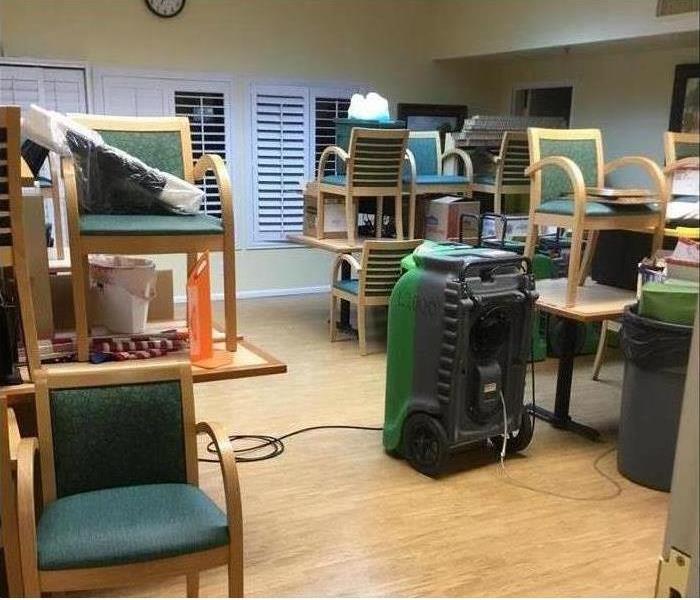 Commercial water loss in Bountiful, UT
Commercial water loss in Bountiful, UT
Mitigation should begin as soon as a property owner or manager notices signs of water damage. Whether you discover a supply line leaking or you need a pipe burst cleanup, these water cleanup measures can limit the severity of the damage.
Steps To Mitigate Water Damage
Address the Cause
Damage is likely to worsen until the cause is fixed. Take the following mitigation measures:
- Turn off the water supply
- Collect water in containers
- Contact a plumber
These steps can limit the severity of water damage. Once the problem is fixed, cleanup can proceed.
Remove Standing Water
Water left standing will damage contents. Depending on how much water is present, you may need to use towels and a mop, a wet vac, or a pump. If you do not have equipment capable of handling a pipe burst cleanup, contact a water damage cleanup service. Mitigation professionals can quickly address primary and secondary damage.
Clean and Disinfect
It may be necessary to clean or disinfect the damaged area. The treatment required depends on the conditions where the leak occurred and the category of water damage. You will need to
- Dry Category One damage
- Clean and disinfect Category Two damage
- Clean and disinfect Category Three damage
Category One water is clean and treated. Category Two gray water is contaminated but does not contain solid waste. Category Three black water is highly contaminated and may contain sewage.
Dry the Area
It is necessary to dry the affected area regardless of the category of water damage. You may use air movers, dehumidifiers, or fans. This equipment will promote faster drying and draw moisture out of porous surfaces. Drying can limit the severity of water damage.
The owner or manager of a commercial property should fix the cause of water damage as soon as possible. If pipe burst cleanup or other major mitigation measures are necessary, hire a water cleanup service located in Bountiful, UT.
6 Ways To Prevent a Dryer Fire
1/3/2022 (Permalink)
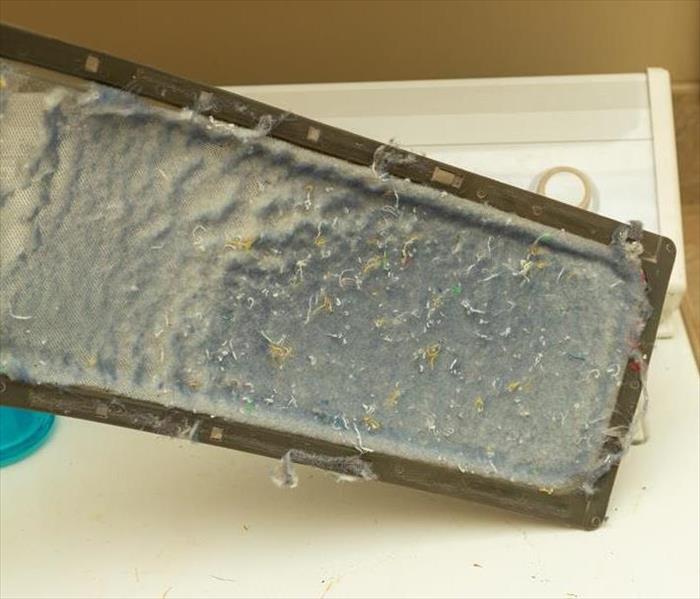 Consider these suggestions and if any problem of this type occurs, do not hesitate to contact us.
Consider these suggestions and if any problem of this type occurs, do not hesitate to contact us.
Most homeowners also own a clothes dryer and often use it several times a week. If not operated and maintained correctly, these appliances can be a significant fire hazard. In fact, they're one of the United States' leading causes of house fires. It's imperative to learn how to prevent a dryer or lint fire at your Bountiful, Utah, home.
Important Steps to avoid Fire Hazard
1. Have Your Dryer Professionally Installed
You can practice safety right from the beginning by getting a professional to install your dryer. A certified electrician is familiar with and experienced in these appliances and safely installs them according to the manufacturer's requirements. It can be dangerous for someone inexperienced to install a major appliance that uses electricity or gas.
2. Keep Watch on Your Running Dryer
Always be close by and aware when your dryer is running. Even the best-maintained dryer can cause a dryer fire, so you should never leave a dryer unattended by leaving your home or leaving it running after you go to bed.
3. Keep Your Laundry Area Clean
Whether you have a small laundry area or a laundry room, many of the things you typically find around washers and dryers are flammable. Keep the area around your dryer clear of clothes and other fabrics (e.g., curtains on a nearby window), flammable washing products, combustible materials (e.g., cigarette lighters), dust, and lint. Keeping your dryer and its surroundings free of lint can significantly reduce the risk of a lint fire.
4. Don't Overload the Dryer
Avoid overloading your dryer. While it may seem like you can get your laundry finished faster by doing one drying load rather than two, it can potentially cause a problem. When a dryer is packed with wet items, it limits the amount of room for air circulation and puts a lot of unnecessary stress on the appliance's components (e.g., pulleys, bearings, and belts). When your dryer has to work harder, it can result in an increase in friction and heat.
5. Keep the Lint Trap Clear
One of the best ways to prevent a dryer fire is by cleaning the lint filter after every load of laundry and checking it before every load. Lint is highly flammable. Research has found that over a third of dryer fires begin due to a filter full of lint. The dryer's heating element can reach 550 degrees during a cycle. This, combined with lint, can start a fire that spreads quickly and is difficult to put out. This devastation will most likely require the assistance of fire damage restoration experts. A clear lint trap can also make for more efficient drying.
6. Routinely Clean the Dryer's Exhaust Vent and Hose
Lint can accumulate at different dryer areas; the exhaust vent is one of those areas. Developing a blockage in the hoses can put you at much more risk for a fire because it restricts airflow. You can disconnect the vent from the hose to see if lint has accumulated. If you find lint, you can use a snake to clear it.
It pays to be proactive concerning your family's protection. Learn how to safely operate and maintain your dryer to avoid a lint fire.
Taking Care of Clogged Drains
11/23/2021 (Permalink)
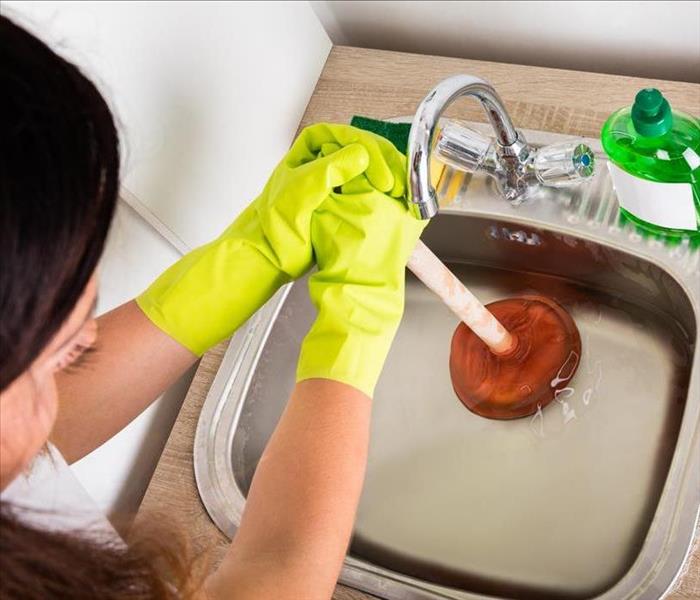 If you have clogged drains in your Bountiful, UT home, call a remediation specialist to have an effective solution.
If you have clogged drains in your Bountiful, UT home, call a remediation specialist to have an effective solution.
A clogged pipe or drain in the kitchen, bathroom, or laundry room can result in many problems, but primarily flooding. It is essential to resolve the issue as quickly as possible. In most situations, you will not need to contact a remediation specialist in Bountiful, UT, because a simple plumbing snake will do the trick. However, to use a snake or auger effectively, you need to know how to use it:
- Slightly uncoil the auger
- Gently insert the head into the drain
- Rotate the auger at trap and push
- Extend auger to reach the clog
- Rotate and use a push-pull motion to free the blockage
- Withdraw the auger
While it is easy to use a snake or plumbing auger, sometimes, the auger will not be enough to resolve the issue. If you cannot reach the clog or free the blockage, you need to call a professional.
Why Calling SERVPRO Is Your Best Option for Clogged Pipes
With any plumbing crisis, time is of the essence. Waiting too long to call for help can mean the difference between releasing a basic clog or repairing a full-blown pipe break.
If using an auger did not help to resolve the stopped sink, then calling a professional is likely your next best option. Experts working with SERVPRO have the tools necessary for reaching dip and set-in clogs.
Additionally, calling in the experts can ensure that no damage comes to your system from potential mistakes. For instance, sometimes, drain snakes can get tangled in the system. If a homeowner attempts to force the snake out, they can potentially damage the pipe or the tool, making matters worse.
A Snake Might Not Be Enough To Resolve Every Issue
A snake is a limited tool. Most manual augers are limited to 25 feet, which should be sufficient for reaching minor clogs. However, your home’s plumbing is a complex system with internal and external components that might be well outside the reach and scope of a basic auger.
Additionally, not every blockage is the result of a clog. Sometimes, there are more significant issues at play, like a pipe collapse or supply line failure. In these instances, an auger is not the right tool for the job.
The experts working with SERVPRO have access to video equipment, allowing them to snake a camera into your home’s plumbing to locate the issue and determine the best mitigative response.
Chemicals Are Not the Solution for Pipe Blockages
Too often, homeowners will turn to chemical drain cleaners to resolve their issues. Chemical cleaners are not worth the hassle. Not only are these cleaners less effective than traditional cleaning options, but if you use the wrong type of cleaner, you can damage your plumbing. Using multiple cleaners can also result in explosions within the system or other unwanted chemical reactions.
If you want to try using a snake on your clogged drain, go ahead. However, suppose the auger does not resolve the issue. In that case, it is best to call in mitigation professionals, like those working for SERVPRO, to assess the system and develop a more effective solution.
Understanding Your Flood Coverage
11/15/2021 (Permalink)
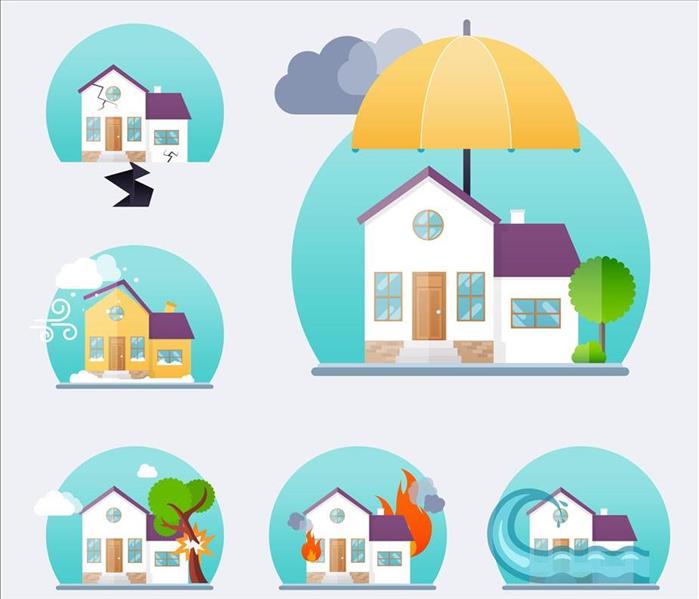 Understanding your homeowners policy helps you to protect wisely your Bountiful, UT home.
Understanding your homeowners policy helps you to protect wisely your Bountiful, UT home.
Navigating the details of your homeowners policy can be confusing, especially when you are going through the stressful experience of enduring a basement flood in your home in Bountiful, UT. Understanding the general rules behind standard property coverage can help you know the right questions to ask your provider and assist with filing your claim. You can plan more easily for repairs when you know what is and is not covered.
Flood Coverage: What Does and Doesn't Cover
What Standard Insurance Doesn't Cover
There are many types of policies you can purchase beyond a standard homeowners policy. It may be fruitful to do so, particularly if your area is prone to flooding. While some water damage is covered, there are several types of problems that you probably have to pay for out of pocket:
- Remediation of water damage that occurs due to unresolved maintenance issues
- Repairs of the source of the water damage
- Storm flooding
- Water backup from a clogged municipal drain
- Sewer backup
You may be able to purchase supplemental insurance coverage for some of these issues. For example, a flood policy is a smart idea if you live in a flood plain, because you are likely to experience the occasional basement flood even if you are vigilant about protecting your home. A water backup policy protects you from having to pay the cost of city plumbing issues that are outside your control. Your insurance agent can assess your individual case and recommend policies that cover your specific needs.
What Your Homeowners Policy Does Cover
A flooded basement can be caused by many different situations. There are two key factors that typically determine whether your homeowners policy will cover the cost of water damage mitigation services. Did the problem occur suddenly? For example, if a pipe bursts, it can cause a lot of damage in a short amount of time. Second, was the inciting incident an accident? If, despite your best efforts, a flood still occurs, your policy is likely to cover the cost of repairing the damage.
If the incident is a covered peril, you may be entitled to two types of coverage. Dwelling coverage takes care of the cost of repairing the structure itself. You may have to replace walls, insulation, carpet, or ceiling materials. Then the affected parts of your home must be rebuilt. This process is probably covered by your policy. Additionally, if any of your personal belongings were damaged by the covered peril, it is likely that you can be compensated for the cost of repairing or replacing them. Documenting the damage with pictures or video and providing the estimate from the mitigation company can support your claim and increase the chances that it will be approved.
It's never too early to learn exactly what your insurance coverage entails. Don't wait until a basement flood occurs to figure out whether your homeowners policy will pay for the damage. Go over the details with your insurance agent, and purchase any additional coverage you need. Understanding your policy helps you make an informed decision so that you can protect your home and everything in it.
How To Remove Mold From Air Conditioner Ducts
11/9/2021 (Permalink)
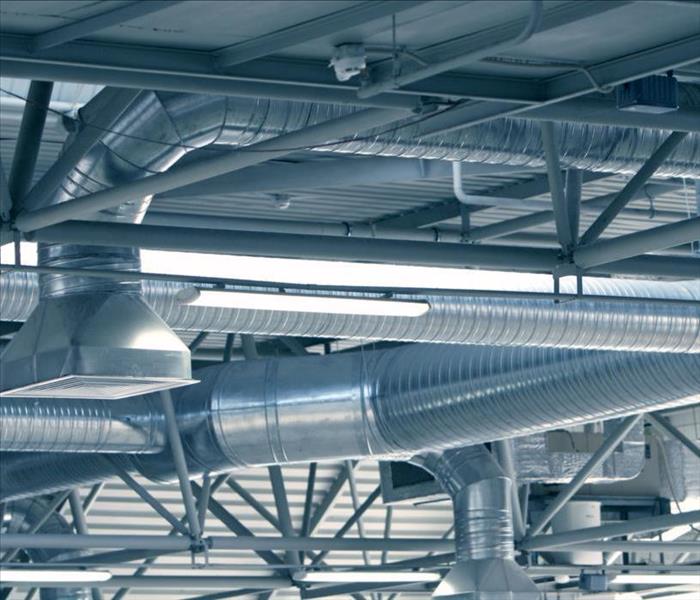 Clean the mold in the air conditioner ducts to avoid the spread in your Bountiful, UT building.
Clean the mold in the air conditioner ducts to avoid the spread in your Bountiful, UT building.
Molds, such as black mold, are always present in the environment. When molds encounter areas with the right conditions, they may multiply to the point where they become an issue for building owners. Dust and moisture in the vents of an HVAC system can provide a fertile breeding ground for mold. If not removed promptly, the forced air from an HVAC system may spread mold to the rest of your building.
Removing Black Mold From HVAC Systems
Eliminating mold from an HVAC system is a multi-step process.
1. Confirm You Have a Mold Problem
Before you spend time and money attempting to eliminate a mold problem, it is a good idea to confirm that you have one. Inspect your HVAC system for signs of mold and moisture. Additionally, you may notice mold signs throughout your building. A musty odor is often one of the first signs of a problem. You may also notice stains or dark spots on walls, ceiling tiles, or carpets. Pay particular attention to any areas with high moisture levels, such as kitchens and bathrooms, or water damage.
2. Remove Moisture
Shut down your HVAC system. Make sure anyone working on the HVAC system is equipped with an N-95 respirator. Remove and replace filters or insulation that is wet. Use a wet/dry vacuum to remove any standing water in the air ducts. Repair anything that is leaking or any drainage systems that are clogged.
3. Clean the System
Thoroughly cleaning your HVAC system will help remove mold and dirt that provides food for mold growth. Use a disinfectant that is registered with the EPA and labeled for HVAC use. Use a mechanical coil cleaning system to remove debris from the evaporator coils. As you clean ducts, separate them with bladders so that spores from the ducts you are cleaning don't spread to the ducts you already cleaned.
4. Prevent Mold From Returning
Prevent mold from coming back by applying a mold and mildew inhibitor to all parts of your HVAC system. Choose a product that is EPA registered and labeled for HVAC use.
5. Vacuum the Ducts
Use a vacuum with a HEPA filter to remove any debris left behind from cleaning.
Prevent Future Mold Problems
Controlling moisture is the key to preventing future mold problems in your HVAC system. Contact an HVAC repair company in Bountiful, UT, to diagnose and repair the issues that caused your system to accumulate moisture. Make sure your drain pans are properly sloped and regularly cleaned. Replace your air filters regularly. Keep areas below air intake clean and free of moisture. Have your HVAC system professionally inspected at least once per year.
When To Call a Professional
Mold can be difficult to remove completely. If your mold problem keeps coming back, you may need to contact a professional mold remediation company to perform a thorough cleaning.
Molds, such as black mold, are a normal part of the environment. However, mold that grows rapidly can create problems for property owners. Removing mold and addressing moisture issues promptly is the key to avoiding additional damage to your building.
What Happens After Water Damage?
10/18/2021 (Permalink)
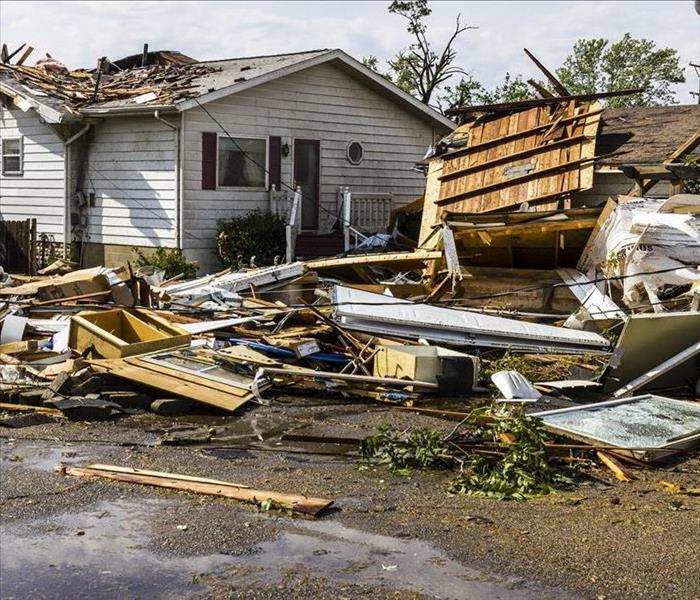 A severe storm can damage your home in Bountiful, UT.
A severe storm can damage your home in Bountiful, UT.
Severe storms can transpire at any time of the year in Bountiful, UT. It's important to know what to do beforehand in case your home is subjected to a powerful storm, especially one that carries an influx of water into the house. Several serious issues can arise just from the excess moisture, such as:
- Soaked, stained drywall
- Destroyed insulation
- Ruined carpet and padding
- Rotting wood
- Mold growth
- Pungent odors
These problems will require quick action involving tear out of ruined materials and thorough drying to mitigate the loss.
What Are the Storm Restoration Procedures?
Post-storm, it's critical to put safety first. Before beginning any of the following steps, make sure you can safely navigate the area and take care of any emergency restoration that you can safely handle yourself.
1. Contact Your Homeowners Insurance
Call your homeowners insurance company as soon as possible to begin the claims process. An adjuster may need to come out and assess the damage before restoration can begin. In the meantime, take photos of all of the damage to give to your agent.
2. Check Electrical
Before going into the area, the safest option is to turn off electricity to the house. Electrical currents can flow through standing water, seriously injuring anyone who steps into it. If you can't safely navigate to the breaker box to turn it off, call your power company or an electrician before proceeding. Once the power is turned off, unplug water-exposed electronics and appliances from their outlets.
3. Deal With Flooding
Standing water indoors is best left to water damage remediation professionals. They have the expertise and industrial equipment to complete the restoration thoroughly and as quickly as possible. While you're waiting for the technicians to arrive, you can mitigate damage by beginning the water removal process. A wet/dry vacuum will be the safest and most efficient method, but mops and towels will do if you don't have access to one. You can also begin the tear-out process by removing materials from the area, such as soaked carpet, padding, and drywall. Also, you must remove as many of the contents as possible to make room for the technicians to complete the restoration process. After removing them from the area, you can determine if each item is salvageable or not.
4. Check the Roof
Check your roof to see if you notice any holes or missing shingles. Unless you have experience, it's best to let a professional contractor get on the roof to inspect the damage and make any repairs. They may have to tarp it temporarily to protect the home from further damage until they can permanently repair it.
If your home is affected by a major storm, you're likely to have a significant loss that will take time, expertise, and the proper restoration tools. Unfortunately, it's not as simple as extracting the water; it'll probably involve tear out, sanitizing, and extensive drying. It could involve much more if mold has begun to grow. It's vital to be proactive and learn the basic steps should you endure one of these disasters in the future.
Protecting Your Pets in a Fire Emergency
10/13/2021 (Permalink)
 It is crucial to maintain pets safe in a fire emergency in your Bountiful, UT home.
It is crucial to maintain pets safe in a fire emergency in your Bountiful, UT home.
There are countless articles on the web about keeping your family safe during a fire emergency, but few address what family entails. Family is more than moms and dads, brothers and sisters. The family also includes all the furry, feathery, and scaly friends that people call pets.
Pets are integral components of nearly every family unit, and as such, it is crucial that you make a plan to keep them safe. The local fire department or a fire disaster company in Bountiful, UT, can help you come up with a plan to keep your animals safe.
Fire Emergency Preparation for Furry Friends
Pet preparation is all about knowing the potential threats and hazards a fire presents and designing escapes and notifications accordingly. Your animals will not understand fire escape routes, and they cannot make rational decisions to get to safety in a real emergency.
While some animals can be trained to obey commands in some situations, it is best to design your home and your pets' routine around basic fire safety protocols. There are at least three ways to keep your pets safe when a fire occurs.
1. Keep Pets Near Entrances
The number one rule for pet safety involving house fires is always to keep your pets near entrances when you are away from home. Suppose you crate your dog while at work; put the crate near the front or back door. If your cat has a favorite cat tree, put it in the front room and close all bedroom doors, keeping its interest in the front of the house. The same goes with birds or other caged animals; keep them safe by placing their habitats near an entrance.
2. Keep Leashes Near Doors
A firefighter cannot be expected to keep a panicked animal under control while removing them from your house, especially to carry them from the premises without any guide or assistance. When you own dogs or cats, place leashes near the entrances of the home. Having leashes or even a kennel near the house entrance will make it easier for a firefighter to remove your pet safely, limiting the risk of injury to the animal or themselves.
3. Affix Pet Alert Stickers on Windows
It has become commonplace to have stickers indicating how many pets or family members you have in your home in recent years. If you feel comfortable doing so, it is helpful to emergency services if you affix an animal alert sticker on your windows.
Pet alert stickers tell firefighters the number of pets you have and what kind they are. Having all the information they need about the number of people and pets helps firefighters ensure they get everyone to safety. It also means that they do not prematurely call off a search and rescue.
A fire emergency is a time of panic and confusion. Do not wait until a disaster strikes to formulate a plan for the safety and rescue of your pets. When there is no chaos, take the time to make appropriate, straightforward plans, including kennel and cage placement and notification stickers.
4 Reasons To Replace Polybutylene Pipes
10/5/2021 (Permalink)
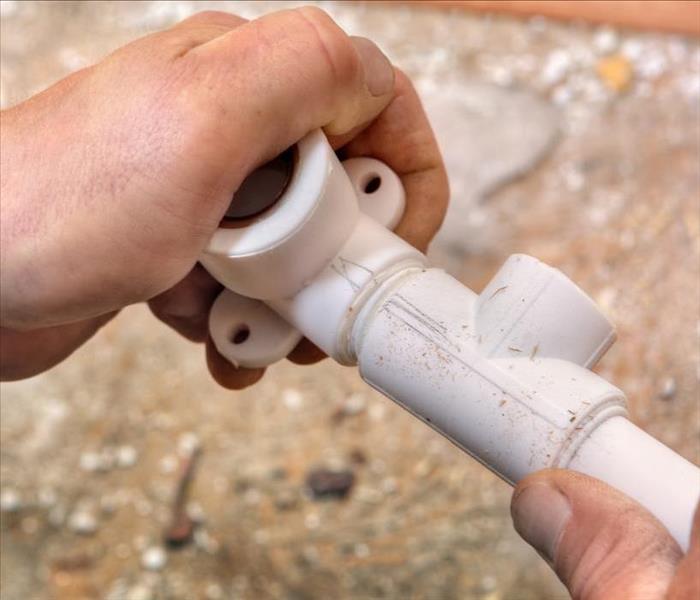 Polybutylene pipes can cause water damage in your Bountiful, UT commercial.
Polybutylene pipes can cause water damage in your Bountiful, UT commercial.
Many property owners build structures from the ground up. If, however, you own an older commercial building, particularly one built between the 1970s and the 1990s, you should have the plumbing inspected for polybutylene pipes. While at that time these pipes were popular because of their relatively low cost, they ultimately cause many issues that lead to expensive repairs and other potential problems.
Why replace polybutylene pipes?
1. Prevent Disastrous Leaks Caused by Faulty Polybutylene Pipes
One reason to get a new plumbing system in your building is that older pipes don't stand up well to chemicals from the water treatment plant. Eventually, these chemicals will wear down the pipes, causing many issues:
- Brittle surface
- Weakened pipe walls
- Pinhole leaks
These small flaws can turn into large problems over time. This is particularly true of pipes made from outdated and insufficient materials. The leaks can damage your building's foundation and any materials the water comes into contact with. While a good plumber and water restoration experts can fix the damage as it happens, ultimately they are only addressing the symptoms of the real problem. Faulty pipes will keep getting leaks. Rather than patching the small leaks as they occur, it's better to just replace the whole failing system at once.
2. Protect Water Quality With Replacement
Water loss and the subsequent damage it causes aren't the only potential problems that faulty pipes can bring. Additionally, the degradation in polybutylene pipes often leads to lower water quality. As particles flake off and disintegrate, they deposit chemicals into the water that likely would not meet safety standards. If your commercial building in Bountiful, UT, has older pipes, replacing the whole system is the right step toward keeping the water quality level high.
3. Keep Your Building Up to Code
Because of the known issues with these outdated materials, your city's building codes no longer allow for their use. Therefore, as long as your plumbing system includes them, your building is unlikely to pass municipal inspection. This can lead to costly fines or even larger consequences if you do not replace them.
4. Appease Insurance Provider
You have an obligation as the building owner to keep it in reasonably good shape and make necessary repairs and upgrades in a timely manner. This is part of the agreement you make with the insurance company that agrees to protect your property. One of the potential consequences of not meeting building codes due to faulty pipes is that your insurance provider is unlikely to cover any water damage that occurs as a result. You may lose your coverage, and then you are stuck not only with the cost of replacing a failing plumbing system but also the full set of expenses associated with repairing subsequent damage.
This necessary upgrade not only prevents damage and protects your water quality but also ensures that your plumbing system meets the standards outlined in municipal codes and expected by your insurance provider. If you own a commercial building that still has polybutylene pipes, it's important to replace them as soon as possible.
Flood Safety Tips Every Homeowner Should Know
9/27/2021 (Permalink)
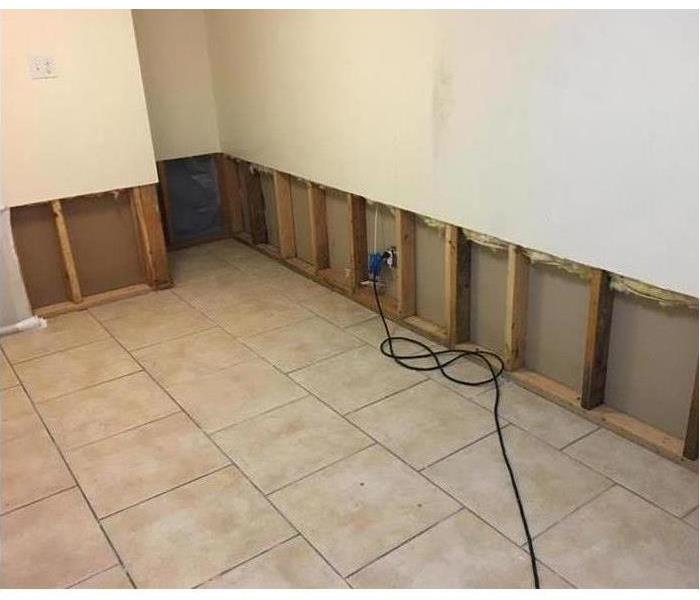 Following these tips will make it easier to face a flooded home.
Following these tips will make it easier to face a flooded home.
You read and hear about disasters on the news, but you may never think they’ll happen to you. However, disastrous incidents such as flooding can occur anywhere in Bountiful, UT, and beyond. Though it’s impossible in all circumstances to control when a flood will affect you, there are ways you can prepare for flood safety. If you practice a few simple tips, you could save yourself a significant of time, money, and grief.
Flood safety tips
Before a Flood.
Flooding can be an issue due to several factors, including intense weather, poor plumbing, sewage backup, and others. No matter what you do, you can’t keep the weather away, but you can do some things to minimize damage.
- Clean your rain gutters
- Seal basement vents
- Examine windows and make sure they don’t have gaps
- Have a trained professional examine your plumbing and sewage systems
- Secure valuables in waterproof containers or safe deposit boxes
During a Flood.
If water starts making its way into your home, it’s essential that you avoid contact with it. Of all the safety tips, one of the most critical is that you stay away from black water, which contains sewage and other potentially fatal materials. You should also turn off your home’s power and water mains. Also, never use an appliance that has come into contact with floodwater. It’s important to pay attention to instructions from local authorities on how to safely react to flooding.
After a Flood.
Flood safety is just as important following the incident as it is during. Once the water is under control, you need to clear it out as soon as possible. You should do this with a wet vacuum. Make sure you dry the area and sanitize thoroughly as well. A restoration specialist will determine whether you need to replace the flooring, walls, or other areas.
If you practice good flood safety, you can avoid damage to your home and injury to yourself and your loved ones. Keep these guidelines handy and implement them today.
Why Do Insurance Agents Choose SERVPRO's Restoration Services?
9/20/2021 (Permalink)
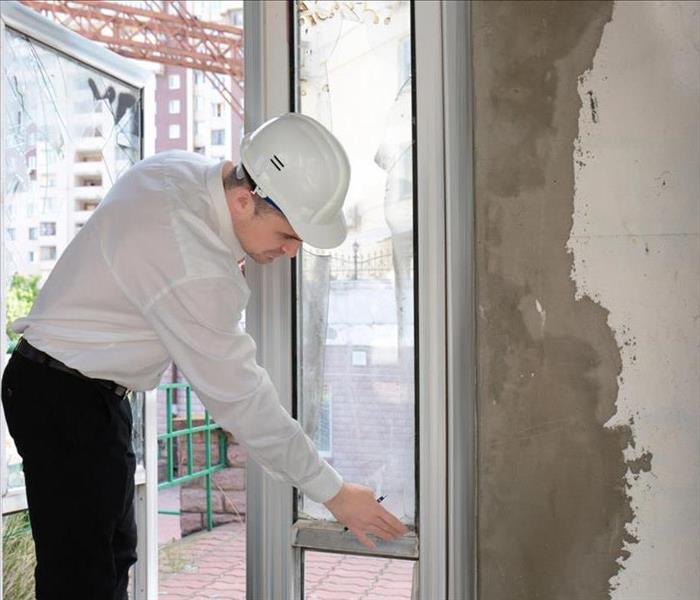 SERVPRO is a service of professionals and certificated teams giving the customers quality work.
SERVPRO is a service of professionals and certificated teams giving the customers quality work.
When a disaster affects your home in Bountiful, UT, an insurance company will surely get a call. The insurance agent handling the claim wants to feel confident that the homeowners are performing every reasonable measure possible to prevent further damage to the property. The central part of this process involves getting a reliable team of experts on the scene to begin the mitigation and restoration work as soon as possible. To ensure a better customer experience, major insurance companies developed the Preferred Vendor program. SERVPRO not only meets or exceeds the stringent requirements of this program, but the company has rigorous specifications its own franchisees must meet.
SERVPRO's Requirements as a Preferred Vendor
1. Each Franchisee Must Meet the Insurance Companies' Requirements for the Program
To be a Preferred Vendor, the restoration company must first meet the requirements set forth by the insurance companies that utilize this program.
Customers will never be surprised by hidden restoration fees. They will receive a set price before the work begins.
Repairs are always performed by professionals who have met all the insurance company's requirements for its vendors. Before getting on the vendor list, the technicians must apply to the central Quality Assurance Department with their credentials and be approved.
Customers can be confident they're getting quality work. There are precise standards and specifications under which the qualified professionals must complete each repair.
2. Each Franchisee Must Complete the Proper Training
All of SERVPRO's employees must go through a 15-day training program that the local business holds. Then, the technicians advance by participating in certification classes for water and fire damage. Employees are also required to attend continuing education programs regularly.
3. Each Franchisee Must Adhere to SERVPRO's Guidelines
SERVPRO has 21 distinct performance guidelines that each franchisee must meet before receiving client referrals from an insurance agent. These guidelines are some of the most extensive in the restoration industry. They include each technician earning the Institute of Inspection Cleaning and Restoration Certification, and each employee passing a background check. Additionally, the franchisee must maintain the required insurance coverage, submit to routine internal quality assurance audits, and prove that the business possesses the proper equipment to handle any job.
4. Each Franchisee Must Apply for Preferred Vendor Approval
Each of SERVPRO's franchisees must apply for approval as a Preferred Vendor. The application process is simple for most because most have already reached SERVPRO's rigorous corporate guidelines.
5. Each Franchisee Must Practice Full Transparency
From the initial contact with the restoration hotline and throughout every step of the project, SERVPRO's professionals document their work. Clients can have peace of mind knowing that the damage restoration company is helpful, reliable and that they're performing their work to the highest industry standards.
Next time you need to file a claim for a loss on your homeowners insurance, your insurance agent will give you a list of restoration companies in their Preferred Vendor program. You're highly likely to see SERVPRO on the list, and for good reason; their technicians guarantee superior service to each client every step of the way, from your initial contact to the job's completion. Whether your home has sustained damage from a flood, fire, or mold infestation, you can be confident you're hiring the best company in the industry.
Water Heaters and Noise: Quieting the Hobgoblins of Residential Plumbing
9/13/2021 (Permalink)
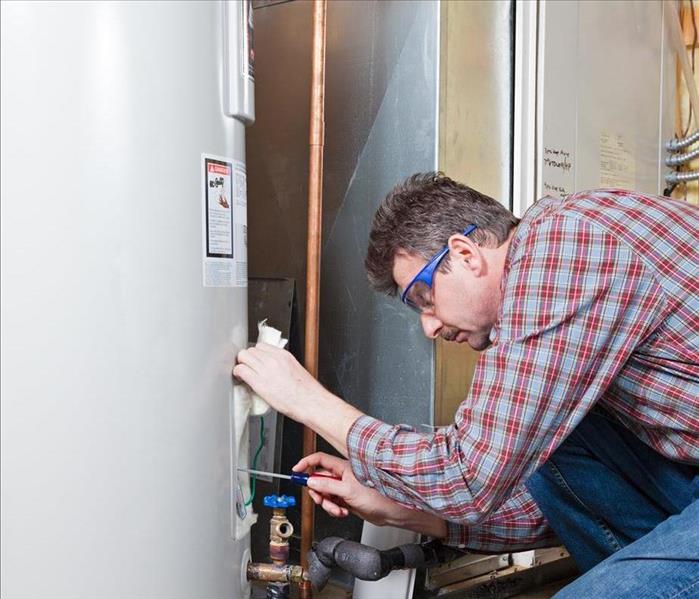 If you hear some unusual noises from your water heater in your Bountiful, UT, home, call a professional for assistance
If you hear some unusual noises from your water heater in your Bountiful, UT, home, call a professional for assistance
Every home needs a water heater, but not every heater is created equal. For those at the forefront of environmentally friendly products, a tankless heater will not have many of the noise problems as a traditional or conventional tank. However, for people who still prefer the more affordable — in the short term — options, a tank heater can lead to odd noises. Some sounds are normal, like the ignition or heating components kicking on, but other sounds are not, like:
- Knocking
- Banging
- Clanging
- Scratching
If you hear any of these odd noises, you should contact a plumbing or remediation professional in Bountiful, UT, to assess your tank. In many cases, the tank can be fixed with a simple flush, but a new tank is sometimes required. The outcome typically involves the age and damage to the appliance.
Water Heater Flush
Flushing a water heater is not a complex task, but some homeowners might feel uncomfortable performing such a task without prior experience. Again, you can hire a professional to take care of the flushing.
If you want to give it a go, you will need a hose and a space to drain the water from the tank. Before you begin, you will need to shut off the gas or electricity to the tank. If you have a gas tank, there should be a valve somewhere near the tank's base. If the heater is electric, shut off the circuit breaker to the heater.
With the power turned off and the tank no longer heating, you can turn off the water to the tank. Connect the drainage hose to the drainage tap. You can then stretch the hose to the predetermined drainage area. Once the hose is in place, you can open the drainage valve. Allow the tank to empty completely.
Once the tank is empty, turn the water back on. Leave the drainage hose attached to the drain valve open. Let the water run for 10 to 15 minutes, allowing any sediment to wash away. Turn off the water again. Detach the drainage hose and close the drainage valve. Turn the water back on, allowing the tank to fill. Once the tank is full, turn the power or gas supply back on.
Resolving Other Issues
In most situations, flushing the tank will resolve any unwanted noises because most tank noises stem from sediment. However, there are occasions where a flush will not take care of the problem. In these instances, it is best to hire a professional plumber to assess the tank and the plumbing surrounding the tank to ensure everything is working as it should.
If the plumber suspects the tank is the problem, they will probably suggest replacing the tank. When replacing a tank, you can opt for newer, more efficient models, but remember that many energy-efficient appliances will initially cost more.
A noisy water heater does not necessarily indicate a need for replacement; it could result from sediment requiring a flush. However, if you are not sure of the problem causing the noise, contact a professional to assess the tank and plumbing.
Mold Prevention Tips for Humid Climates
9/6/2021 (Permalink)
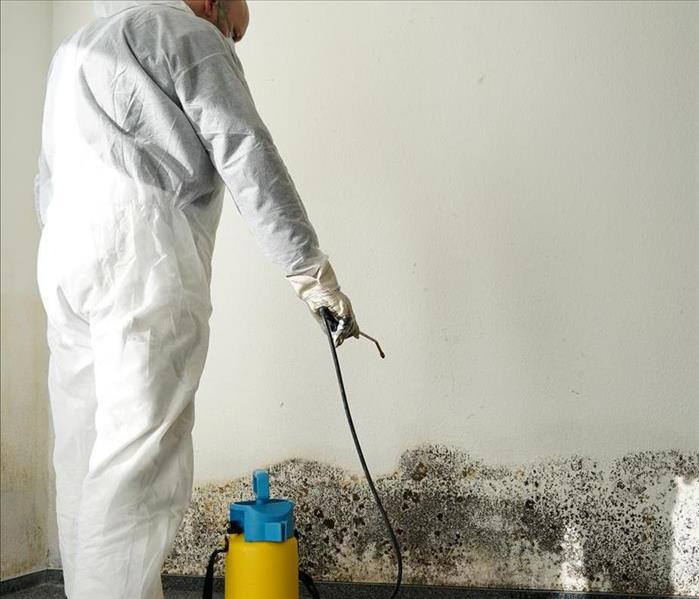 Protect your Bountiful, UT, building from moisture to prevent mold damage.
Protect your Bountiful, UT, building from moisture to prevent mold damage.
It's hard enough to keep your commercial building free of the effects of high humidity, but is located in a particularly humid climate poses extra challenges. It's not an impossible task, though. The following tips can help you protect your building in Bountiful, UT, against all the moisture in the air outside.
How to protect your building from moisture
Ensure Proper Airflow Throughout Building
The simplest way to prevent mold damage is to keep the air flowing throughout the whole building. Your air conditioner plays a huge role in this step. There are several ways to ensure your AC works consistently well:
- Make sure the system you install is the right size for your building
- Keep doors and windows closed while it runs
- Set the unit to automatic and the temperature to 70 degrees
- Inspect and maintain the system regularly
Make sure that your air conditioner vents are not blocked by furniture or storage, particularly the intake vents. Install exhaust fans in areas, such as bathrooms, where moisture tends to build up. An environmental hygienist can also complete an air quality test to find areas where better ventilation is needed.
Implement a Regular Inspection and Cleaning Schedule
Spores in the air are attracted to both moisture and dirt. While mold can grow on any organic material, keeping your building clean and dry is a strong line of defense. During walkthroughs, look for condensation on windows, pipes, and concrete walls. The presence of excess moisture in these areas may indicate that you need better insulation. Have all the surfaces in your building cleaned and dried on a daily basis. A vacuum with a HEPA filter is the best choice for ensuring that dust and other particles that can exacerbate mold growth are removed from the carpet.
Keep Humidity Level Low
No matter how clean or cool your building is, high humidity can lead to mold damage. You want to aim for a humidity level of 50% or below. Start by looking for items in your building that could contribute to excess moisture in the air. For example, potted plants are a common culprit, but that doesn't mean you need to get rid of all your live greenery. You just need to add anti-mold ingredients to the water you add to the soil. In addition to ensuring proper ventilation and airflow, you can also purchase dehumidifiers for each room to lower humidity levels.
Use Mold-Resistant Materials
Even if you take every precaution, you could still end up needing mold cleanup from certified mitigation experts in a humid climate. That's because furniture, curtains, carpet, and other textiles are particularly prone to fungus growth. Consider trading in some of the items in your building with similar pieces that are made of mold-resistant materials. Plastic, glass, and metal all have non-porous surfaces that make it more difficult for mold to grow. Laminate flooring does not have the same spore-catching qualities that carpet does. The furnishings you use can aid in your battle against mold.
If your area is prone to high humidity, you must be extra vigilant to prevent mold in your commercial building. By following these tips, you may be able to avoid major problems.
Understanding the Sewer Cleanup Process
8/5/2021 (Permalink)
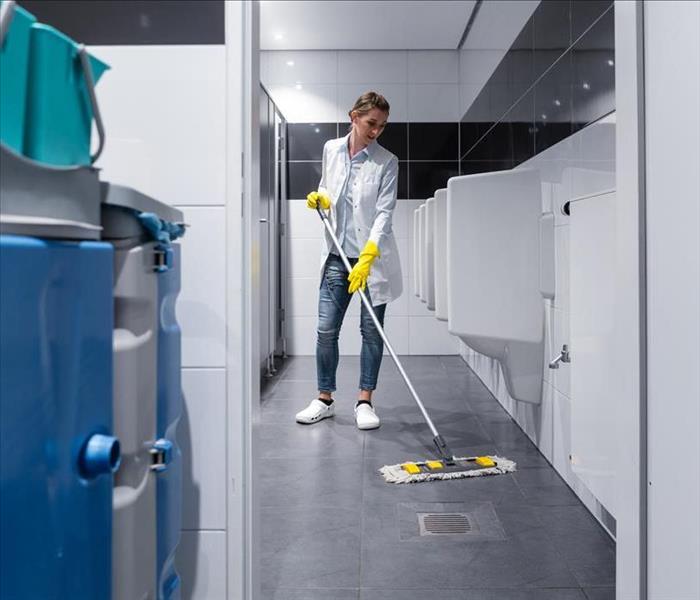 It is fundamental to understand the sewer cleanup process in your Bountiful, UT, building.
It is fundamental to understand the sewer cleanup process in your Bountiful, UT, building.
When your commercial building in Bountiful, UT, has sewer damage, the thought of cleaning it up may seem overwhelming at first. Once you understand the different steps of the sewer cleanup process, though, it is likely to seem much more manageable.
Identify Cause
Before the cleanup process can begin, technicians need to know how the problem started. There are many potential causes of sewer problems:
- Flooded toilet
- Broken sewer lines or pipes
- Invasive tree roots
- Blocked or flooded municipal sewers
Knowing the cause of the damage helps the plumber or other repair personnel decide how to fix it so that it doesn't cause more damage to your building.
Assess Damage
When sewer damage cleanup experts arrive at your building, the first thing they do is complete a walkthrough of the space. They document all the damage so that they can create an action plan for efficient mitigation. Then they can create an itemized list of tasks that must be completed and give you an estimate of the cost.
Extract Moisture
Sewer backup typically leaves a lot of contaminated water behind. The results are standing puddles or a high humidity level in the building. The water must be removed with industrial pumps, and the humidity levels must be lowered to prevent secondary damage.
Remove Debris
Sometimes sewer water leaves sludge and other debris behind. Once the water is removed, it's easier to see what else needs to be taken out. If there is a lot of debris, technicians often use pumps or vacuum hoses for quick removal. They also tear out saturated drywall, carpet, and other materials that are ruined by sewage.
Disinfect Area
One of the most important parts of the sewer cleanup process is disinfection. Water that backs up or seeps in from the sewer is considered Category 3 Water, which means it likely contains all kinds of bacteria and other microbes. The mitigation team not only cleans but deodorizes every inch of your building that is affected by the backup.
Dry Surfaces
The surfaces that remain after ruined materials have been torn out and not only have to be sanitized but also dried. Failure to do so can lead to ongoing issues such as mold growth or further water damage. Removing as much excess moisture as possible is the key to complete remediation.
Rebuild Structure
The last step of the cleanup process is restoration. The remediation team doesn't just leave your building gutted and clean. Certified builders put up new walls and install new ceiling tiles. They match the wallpaper, paint, and flooring with the parts that are able to be salvaged so that no one can tell where the damaged area and preexisting structure meet. The job isn't finished until you are able to set up your office and start using the space again.
If you need sewer cleanup in your commercial building, choosing mitigation experts who know what they're doing shouldn't add stress to the situation. Qualified specialists can walk you through the entire process so that you know what is happening at every step to get your building back to normal.
The 6 Steps of Fire Cleanup
8/2/2021 (Permalink)
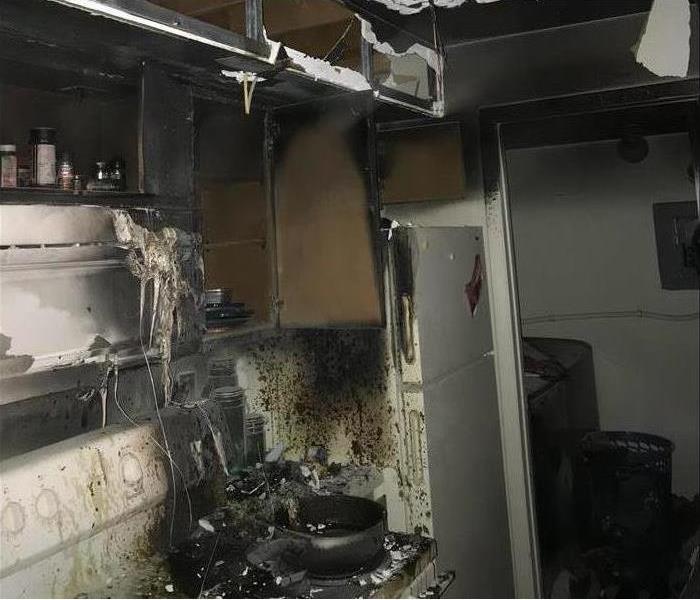 Hire a professional team to clean after fire damage in your Bountiful, UT, home.
Hire a professional team to clean after fire damage in your Bountiful, UT, home.
Home fires can be devastating, but you don’t have to face the cleanup process alone. Hiring fire damage professional in Bountiful, UT, can help return your home to its pre-fire state quickly and efficiently. In addition to restoring the areas most directly affected by the fire, the professionals can also handle smoke damage and soot damage throughout your house. Here is what to expect when you bring in a professional service to restore your home after a fire.
1. Assessment
Before anything happens, experienced fire restoration specialists need to inspect your home. This allows them to determine the best way to proceed. Once they’ve assessed the situation, they should share their cleanup plan with you.
2. Boarding and Tarping
Fire can burn holes in your roof and walls, blow out windows and compromise the structural integrity of your home. To protect your home from further damage by the elements, openings can be covered with waterproof tarps. Boarding over doors and windows protects your home from intruders and prevents entry into unsafe areas.
3. Water Removal
If the fire was put out by the fire department, chances are good your home’s interior has been doused with water. The water is removed using powerful wet vacs or submersible pumps in extreme cases. The affected areas are dried completely with industrial-grade air movers and dehumidifiers. This prevents further water damage and inhibits the growth of mold.
4. Soot Removal
Smoke damage often means a layer of oily, black soot staining walls, furniture, and carpets. This can be removed using powerful, specialized vacuums and other techniques.
5. Cleaning and Deodorizing
To eliminate the odor left behind by smoke, surfaces need to be cleaned and deodorized. Smoke cleaning is even carried out on the air inside your home using air scrubbers and foggers.
6. Restoration
While smoke damage can usually be dealt with by cleaning, if floors, walls, or cabinets have been destroyed by the fire, they need to be repaired or replaced. A comprehensive fire damage service in Bountiful, UT, should be able to handle everything from the assessment to the restoration.
For more information, please visit us at SERVPRObountiful.com.
IICRC Certified Firm
8/2/2021 (Permalink)
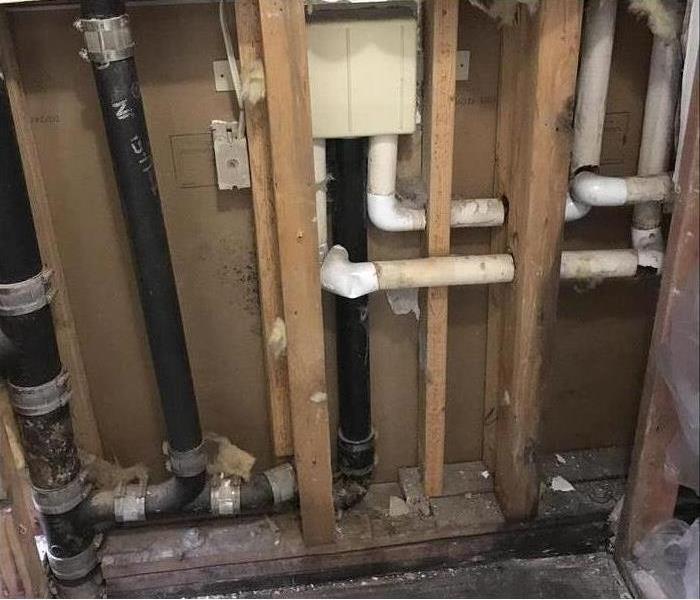 Our SERVPRO team is professional and ready to help you.
Our SERVPRO team is professional and ready to help you.
SERVPRO of Bountiful is an IICRC firm. The Institute of Inspection, Cleaning and Restoration Certification (IICRC) creates the standards for the restoration industry and provides training and certification to restoration companies. IICRC Certified Firms have the right to display the IICRC Certified Logo.
IICRC Certified Firms must
• Present accurate information to consumers and conduct business with honesty and integrity.
• Require a technician on all jobs who has been formally trained and passed all required tests.
• Require a continuing education program to keep technicians up-to-date on the latest changes in the industry.
• Maintain liability insurance to protect all parties in the event of an accident.
• Maintain a written complaint policy and agree to Better Business Bureau or similar arbitration to resolve disputes, and accept the conclusions and recommendations of arbitration.
The IICRC Develops The Standards For The Restoration Industry
The IICRC has been the driving force in establishing the main industry standards and reference guides for professional carpet cleaning, water damage restoration, and mold remediation. These IICRC standards take years to develop and require the coordination of experts in the field: manufacturers, industry organizations, insurance professionals, training schools, contractors, and public health professionals.
Every five years, the standards are reviewed and updated. The water damage restoration field changes rapidly with advancements in technology and science, and therefore the standards must evolve to keep pace.
About SERVPRO of Bountiful
SERVPRO of Bountiful specializes in the cleanup and restoration of residential and commercial property after a fire, smoke or water damage event. Our staff is highly trained in property damage restoration and we are an IICRC Certified Firm. We believe in continuous training: from initial and ongoing training at SERVPRO’s corporate training facility to regular IICRC-industry certification, rest assured our staff is equipped with the knowledge to restore your property.
Davis County Smoke and Soot Cleanup
7/29/2021 (Permalink)
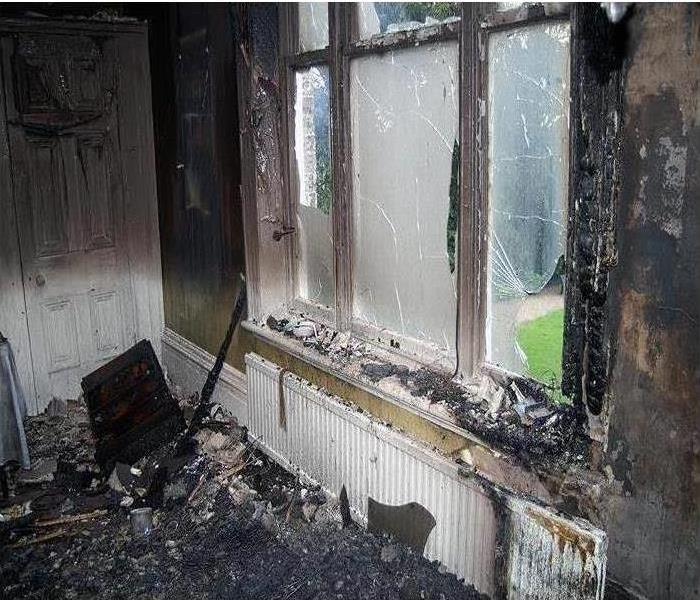 Smoke and Fire Damaged Property in Bountiful Utah
Smoke and Fire Damaged Property in Bountiful Utah
Smoke and soot are very invasive and can penetrate various cavities within your home, causing hidden damage and odor. Our smoke damage expertise and experience allow us to inspect and accurately assess the extent of the damage to develop a comprehensive plan of action.
Smoke and soot facts:
- Hot smoke migrates to cooler areas and upper levels of a structure.
- Smoke flows around plumbing systems, seeping through the holes used by pipes to go from floor to floor.
- The type of smoke may greatly affect the restoration process.
Different Types of Smoke
There are two different types of smoke–wet and dry. As a result, there are different types of soot residue after a fire. Before restoration begins, SERVPRO of Bountiful, UT, will test the soot to determine which type of smoke damage occurred. The cleaning procedures will then be based on the information identified during pretesting. Here is some additional information:
Wet Smoke – Plastic and Rubber
- Low heat, smoldering, pungent odor, sticky, smeary. Smoke webs are more difficult to clean.
Dry Smoke – Paper and Wood
- Fast burning, high temperatures, heat rises therefore smoke rises.
Protein Fire Residue – Produced by evaporation of material rather than from a fire
- Virtually invisible, discolors paints and varnishes, extreme pungent odor.
Our Fire Damage Restoration Services
Since each smoke and fire damage situation is a little different, each one requires a unique solution tailored for the specific conditions. We have the equipment, expertise, and experience to restore your fire and smoke damage. We will also treat your family with empathy and respect and your property with care.
Have Questions about Fire, Smoke, or Soot Damage?
Call Us Today – 801-298-4272
What Is Category 3 Water Damage?
7/26/2021 (Permalink)
 Cleaning a flooded home will depend on the category of the contaminated water.
Cleaning a flooded home will depend on the category of the contaminated water.
Water damage, including black water, is classified into one of three categories based on the level of contamination in the water. It is important to know which category of water you are dealing with before attempting to clean a flooded building because each class comes with different risks and requirements.
Water Damage Categories
You may see water damage referred to as either clean water, grey water, or black water. These phrases refer to the three categories of water damage:
- Category 1 Water is water that does not contain any harmful contaminants.
- Category 2 Water may contain significant amounts of chemicals, physical or biological contaminants.
- Category 3 Water contains unsanitary agents, such as fungus and bacteria.
Examples of Category 3 Water
Examples of this type of water include sewage cleanup, water from streams and rivers, ground surface water, seawater, storm surge, and standing water. Category 2 water that has become stagnant or has remained standing for too long can be reclassified into this category. Toilet overflows that contain feces or originate from beyond the toilet trap are another example.
Category 3 Water Removal
The removal of this category of water requires protective gear and safety training. For this reason, it is not recommended that property owners attempt to remove the water themselves. A professional water remediation company in Bountiful, UT, has the training and equipment to safely remove the water and decontaminate the affected area. Additionally, they can evaluate affected contents to determine which items can be safely cleaned and sanitized and which should be discarded and replaced.
Some types of water can be removed safely by property owners. Other types are best left to professionals with the correct safety gear and training. If you are dealing with a black water situation, it is usually best to avoid the risk of coming into contact with contaminated water and potentially spreading contamination around your property by attempting to clean it yourself.
My Basement Has Flooded! What Next?
7/26/2021 (Permalink)
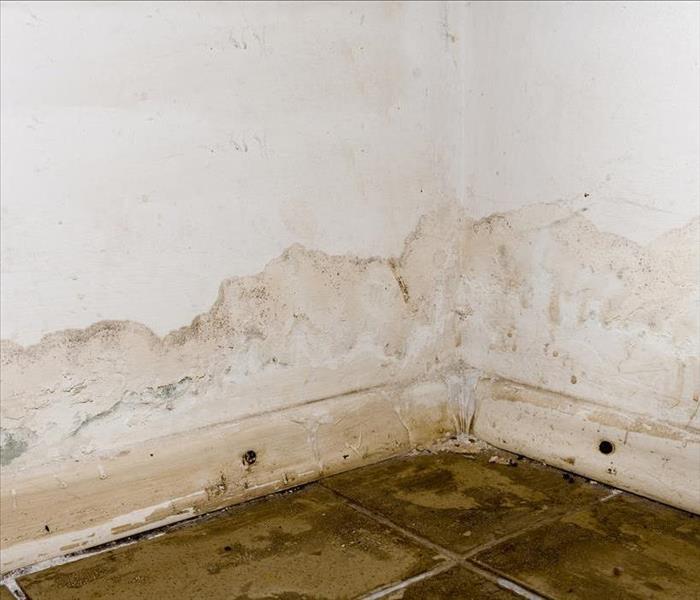 If a flooded home in Bountiful, UT, is not cleaning well, mold can grow in the affected surfaces.
If a flooded home in Bountiful, UT, is not cleaning well, mold can grow in the affected surfaces.
Discovering standing water in your Bountiful, UT, basement is a disaster no one wants to experience. A basement flood can not only be hazardous to your and your family, but it can also cause severe damage to your home and its contents. It's essential to know the steps to take during this situation to minimize the negative impact.
1. Shut Off the Electricity
First and foremost, it's vital to turn off the home's electricity before you step into the basement. An electrical current can be flowing through the water if electrical components (including outlets) are exposed to the water. If you can't navigate to the power box safely, call a professional electrician to shut it off before anyone enters the basement.
2. Investigate the Origin of the Flooding
Next, inspect the area to find the origin of the flooding. Once you find it, stop it by shutting off the source, if possible.
3. Extract the Water
Remove the standing water by using a wet/dry vacuum, if available. It's typically the most efficient and effective method of extracting water and floating debris from a basement flood. Otherwise, you'll need a mop and towels. Flood restoration specialists can use their commercial-grade equipment to remove all of the water.
4. Clean and Sanitize the Area and Contents
Next, you must clean and sanitize the entire affected area and all salvageable contents. This washing is vital if it's water from a sewer backup or an outdoor flood.
5. Thoroughly Dry the Area and Contents
One of the most important parts of cleaning after a flooded basement is ensuring the thorough drying of the whole area and everything in it within 48 hours of water exposure. Mold can quickly begin growing on most surfaces.
Water from a basement flood can wreak havoc on a home's structure and contents. Remediation needs to begin immediately. Be proactive and check your insurance coverage beforehand so you'll know what is and isn't included in your homeowner's policy.
What To Do When You Have Storm Damage
7/14/2021 (Permalink)
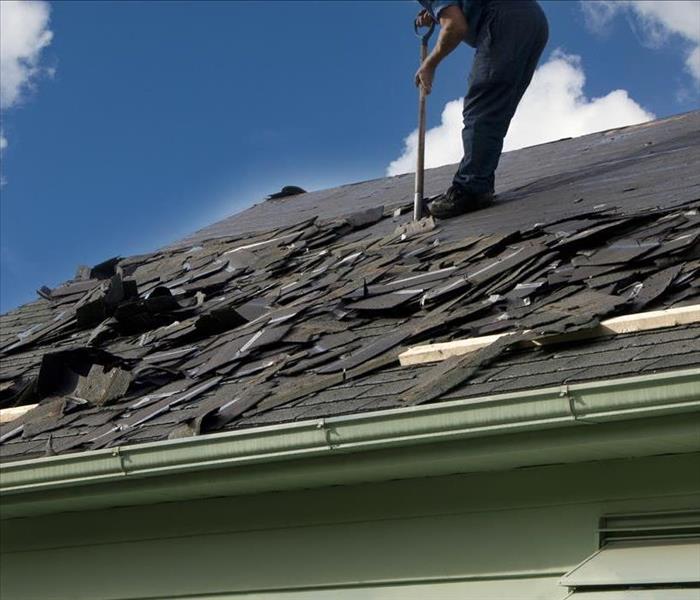 Residential roof replacement for storm damage in Bountiful, Utah.
Residential roof replacement for storm damage in Bountiful, Utah.
A common cause of roof damage in homes in Bountiful, Utah, is fallout from storms. Problems with your roof can easily lead to issues inside your home as well. After the storm passes, there are several things that must happen during mitigation to ensure that your home is protected.
Find Weak Spots
Even if your roof is in great shape before a strong thunderstorm, you should always have it checked by a professional afterward. There are several elements that can cause damage to your roof during a storm:
Experienced professionals know where to look for the common signs of wind damage to shingles. They make note of the cracks or chips caused by hail and other abrasive elements. A thorough inspection reveals all the areas that need mitigation.
Clean Gutters
Storms are likely to leave a lot of debris lying around. Some of the twigs, dirt, and leaves that get redistributed may end up clogging your gutters. While cleaning out gutters and downspouts should be a regular part of your home maintenance routine, cleaning them out after a heavy storm, particularly one that involves high wind gusts, helps prevent further roof damage.
Board Up Holes
If your home has extensive damage, it may take a few weeks for the roofers to fix it. In the meantime, storm mitigation experts typically put tarps or boards over the most vulnerable areas while they are working on the water damage and other structural issues caused by the storm. This keeps out additional rain and debris, and it keeps animals or other invaders from entering your house through the damaged areas.
Getting your home back to normal after a storm may take time and a team of specialists, but it's possible. Hiring professionals to help find all the roof damage, clear out debris and protect your home from further issues is the key to quick mitigation.
The Dos and Don'ts of Business Fire Cleanup
6/22/2021 (Permalink)
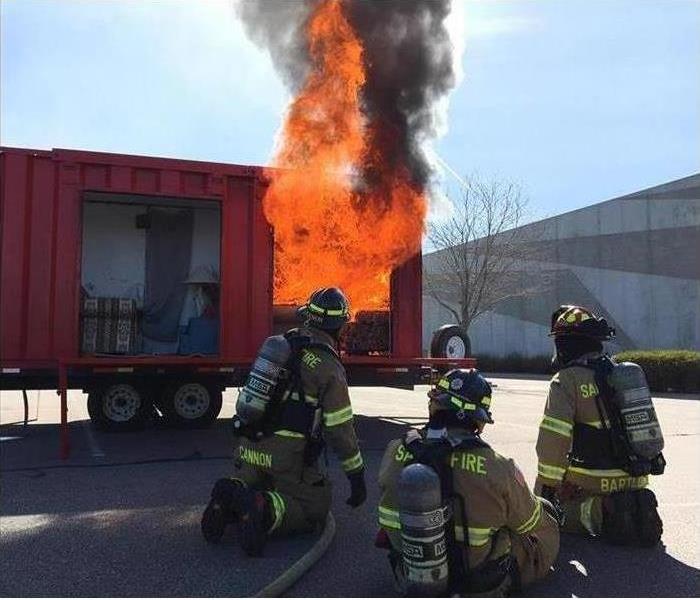 Follow any instructions you receive from the firefighters and other local officials in Centerville, UT
Follow any instructions you receive from the firefighters and other local officials in Centerville, UT
Once the smoke clears after a fire in your Centerville, UT, workplace, there's still plenty to do, accompanied by a lingering sense of vulnerability. You may not be sure what you should or shouldn't do in this new situation. Fortunately, much of the cleanup and repair work will be handled by fire restoration professionals. In the meantime, there are plenty of dos and don'ts you should follow.
A Short List of Dos
Some of the steps you take right after the fire can have long-term, positive consequences.
- Do contact the insurance company. Your fire insurance policy may affect who you contact to complete smoke cleaning and damage restoration services.
- Do schedule an assessment from fire remediation professionals.
- Do follow any instructions you received from the firefighters and other local officials. Anything you do may affect your insurance coverage.
A Quick List of Don'ts
There are some steps you might take that could cause a lot of harm to your property. It's just as important to understand what not to do as to understand what you must do for comprehensive fire restoration.
- Don't begin cleaning furnishings, such as chairs and upholstery. Without specialized tools and cleansers, you may cause permanent damage.
- Don't handle wet papers or equipment. Water from the firefighters' hoses could have soaked into many of your possessions. Picking up wet papers or moving electronics around could increase the level of damage to these items.
- Don't use any of your electrical appliances. At the very least, you may cause irreparable damage to that equipment. You could also spark new fires.
When your Centerville, UT, business has been affected by an emergency, knowing there are professional fire restoration experts in the area may help. When you know what to do after the fire and what you should not do can help you take the quick action necessary to prevent further damages. Taking the right action can help you get back to your normal schedule in less time.
How Flood Water Becomes Black Water
6/18/2021 (Permalink)
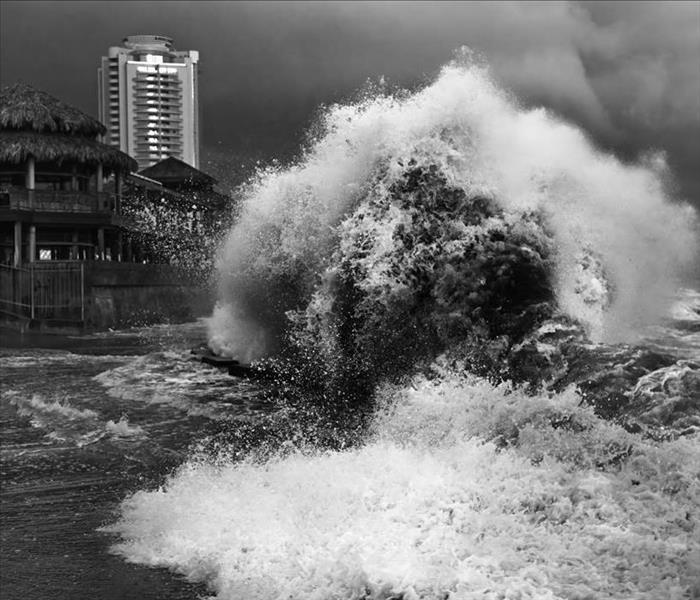 Heavy storms can lead to severe flooding damage.
Heavy storms can lead to severe flooding damage.
In the confusion after a flood, deciding what type of water is contaminating your business is difficult. To keep your customers and employees safe, you need to consider any flood water as dangerous. There are three basic types that you need to worry about.
- White water - clean water flooding
- Grey water - contaminated water without fecal or other dangerous matter
- Black water - highly contaminated water with fecal matter or other harsh bacteria-producing chemicals. This is the most common type of commercial storm damage.
Each type of water requires different a different type of cleaning. Floodwaters usually are classified as black. This is the most dangerous type and needs to be cleaned as soon as possible. In this case, it is best to hire a professional remediation company in Bountiful, UT, to avoid the risks associated with flooding.
Black Water Is The Most Dangerous
It Contains Outside Materials
Flood water from a storm almost always contains things that make it hazardous. This is particularly true if your business is on septic or there are septic fields in your area.
Flooding occurs when a body of water inundates the ground and surface to the point of peak saturation. Once this point is reached, the water seeps above the ground, causing the flood.
When the ground is saturated, it also pushes contaminates up from the soil. This means fecal matter, bacteria, and other contaminants come up from the ground, regardless of whether your business is on septic or city water. These can enter your location and damage porous surfaces causing mold, mildew and infections.
It Can Cause Sewer Failure
Even if you do not have a septic system, your city sewers can fail when it suffers storm damage. This often causes pipes to break and sewage to come to the surface. Sewage can cause mold and bacterial contamination.
When a sewer system fails, you may be required to boil your water. This is because it may contain the dangerous bacteria associated with black water.
It May Sit For Long Periods
Any water that sits for any length of time can go from clean water to contaminated water very quickly, particularly if you live in a warm climate.
Any time you have flood water, you should automatically consider it contaminated. This means treating it like it is hazardous.
My Flight Was Canceled Because of Weather. Now What?
5/28/2021 (Permalink)
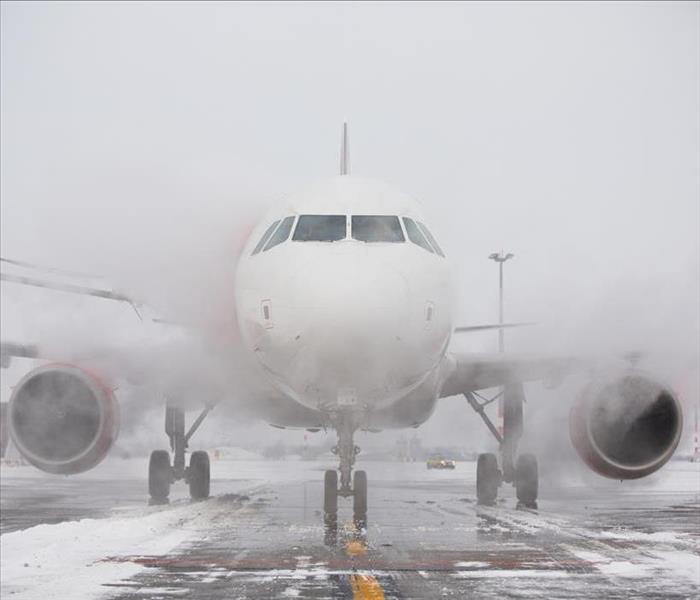 Canceled flights require patience
Canceled flights require patience
Everything that comes with traveling by air can cause stress and anxiety but even more so when your flight is unexpectedly canceled due to inclement weather. A canceled flight can test your patience and leave you wondering what's next. Follow these tips if you get stuck on the ground in Bountiful, UT.
4 Tips For a Canceled Flight Due to a Storm
1. Call Before You Leave Home
If you discover that your flight has been canceled before you leave home, you may be able to save some time and handle it without going to the airport. Check the airline's website or for their rescheduling policy. If it's less than 24 hours before the original departure time, you can ask about rescheduling without the typical fees for changing flights.
2. Keep Airline Phone Numbers Available
If your flight gets canceled after you're at the airport, you may be able to book a later flight. Depending on the type of inclement weather, it may pass so that flights will resume relatively soon. Call different airlines while you're at the airport in case the original canceled flight isn't rescheduled soon enough. Some airlines will handle this for you.
3. Practice Patience
If the bad weather is around a while, you could have to wait days until the next available flight. If it's going to be at least one night and you're stranded at the airport, sometimes airlines will issue vouchers for meals and even local hotel stays.
4. Check With Customer Service Regularly
As you're waiting on the next phase of your journey, it's beneficial to make yourself comfortable close to customer service. Here, you'll be able to check with agents regularly to see when they begin booking again.
Being stuck at the airport due to a canceled flight can cause significant problems for you and ruin your plans. Besides, incurring storm damage at your home requiring you to contact water damage restoration experts before your trip could cause additional stress. Unfortunately, sometimes the unavoidable happens, but hopefully, these storm tips will help keep you moving.
Tips for Handling Water Damage
5/25/2021 (Permalink)
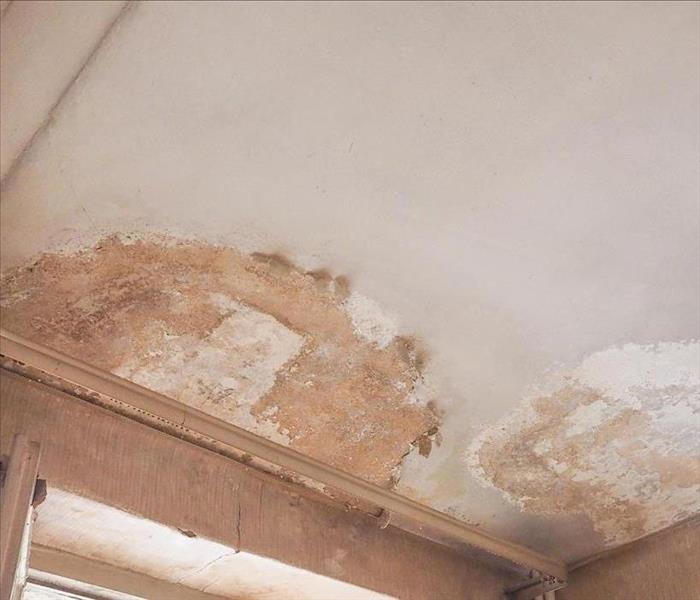 Commercial water damage
Commercial water damage
Having a regular inspection and maintenance schedule for your building in Bountiful, UT, is an important part of property ownership. Despite your best efforts, however, sometimes water damage still occurs. When that happens, there are several things you need to do as soon as possible.
2 Things You Need To Do To Handle Water Damage
Make Important Calls
The first thing to do when your building has damage from broken pipes or storm overflow is to call for help. Depending on the source and the severity of the problem, there may be several professionals you need to contact:
- Insurance provider
- Water restoration specialists
- Plumber
- City officials
Get restoration started as quickly as possible, and make sure you are not causing more damage or violating any regulations in the process. Calling for backup help is the best way to confirm that you are handling the problem properly.
Enact Contingency Plans
It's smart to have a plan for business continuity during emergency events. If the water damage in your building is widespread, you may have to relocate temporarily in order to keep your business going. The more detailed your plan is, the more readily your employees are able to adjust to their new work alternatives.
Leave Cleanup to the Professionals
The water cleanup process involves removing excess water, drying and cleaning the affected area and replacing anything that has to be discarded. While you may have the urge to help out, the most beneficial thing you can do is step aside and let the people with the proper training and equipment handle it. Focus on keeping your business afloat, and leave the restoration process to them.
It's normal to feel overwhelmed when your building sustains a lot of water damage, but there are a lot of people who can help you navigate the cleanup process. Knowing the first steps to take can help you get the mess cleaned up and get back to business as usual as soon as possible.
How To Keep My Pets Safe During a Fire Emergency
5/25/2021 (Permalink)
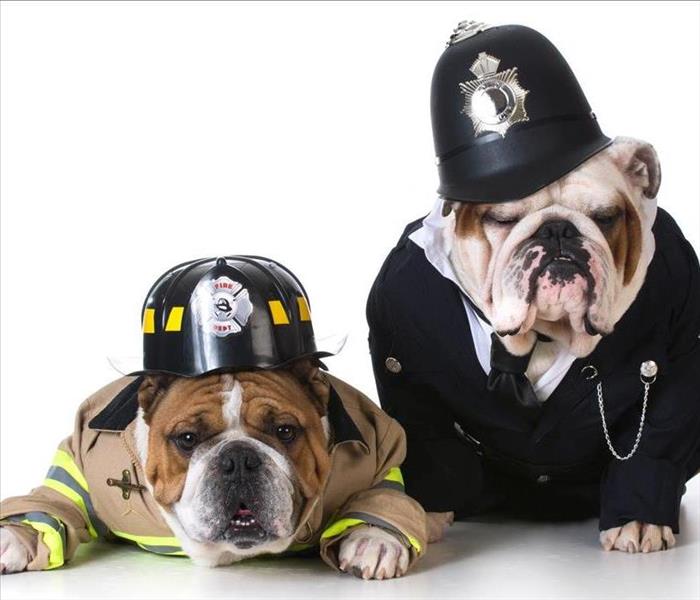 Keep your pets safe during a fire emergency.
Keep your pets safe during a fire emergency.
During a fire emergency, keeping your family safe is important. That family includes your pets. There are a few simple ways that you can do this before, during and after a fire.
Simple Ways To Keep Your Pets Safe
Pet Fire Prevention
Furry friends cause almost 1,000 fires per year. You can help prevent this from happening by:
- Using flameless candles
- Keeping stove knobs out of reach
- Securing young or unruly pets when not supervised
- Douse open flames
These precautions help keep your family safe from accidental fires.
Pets Before a Fire
A bit of pet preparation is also helpful. Although fires come without warning, you can make sure that you are prepared. Make sure you put "pet inside" stickers up to alert workers to the presence of your pet. You should always keep a leash by your door in case a fireman or other rescue worker needs to get your pet out. These two simple acts can save your pet's life.
Pets During a Fire
You probably already know what to do during a fire emergency. You may have even practiced fire drills. It is important to include your pets when practicing. This way, you will know what each family member needs to do when there is a fire.
Pack a "go bag" before a fire. This is a bag that contains all of the first aid, pet and other supplies you need as well as the numbers for your insurance company and a fire cleanup company in Bountiful, UT.
Pets After a Fire
Pet safety is as important after a fire as during one. Make sure that you are staying in a pet-friendly place while you wait for the fire department and cleanup company to clear your house. Since you are staying away from home, make sure your pet's vaccinations and tags are up-to-date as well.
You should know how to keep everyone safe in the event of a fire emergency. These tips can help you do this.
What To Do When Your Basement Floods
4/30/2021 (Permalink)
 Basement floods may involve significant property damage
Basement floods may involve significant property damage
One of the most annoying things that can happen is a basement flood. It is time-consuming and problematic to clean and may involve significant property damage. Fortunately, there are a few things that you can do to mitigate the damage.
5 Things You Can Do To Mitigate Flooding
1. Call the Professionals
When you are unsure what to do, it is always best to call a professional cleanup company in Bountiful, UT. In most cases, they can:
- Work with your insurance company
- Clear out the water
- Dry your belongings
- Prevent mold and mildew from growing
A good cleanup company will help you with any insurance coverage claims that you need to file.
2. Do Not Enter
Never for any reason enter a basement that is covered in water before checking a few things. You need to turn off the electricity and make sure that it is safe before you even consider entering. You should also make sure the water is fresh and not contaminated with chemicals or sewage. Once you are certain it is safe, you can consider entering.
3. Remove the Water
Once you are certain there is no harm from electricity or contamination, pump the water out. If you have a sump pump and it is not broken, you can use it to clear the water.
If not, you might have to rent or buy pumps to take care of the basement flood. This will clear most of the water out. Once the pumping is done, mop up the remaining water.
4. Dry Your Basement
Be sure to thoroughly dry your flooded basement. Concrete takes a long time to dry and often requires fans or commercial drying equipment. This is an extremely important step because mold and mildew can cause hazardous conditions and seriously devalue your home.
5. Remove and Dry Damp Items
Remove and dry everything you can thoroughly. Be very careful to get everything that has water on or under it. If you do not thoroughly dry everything, you could wind up with mold and mildew.
A basement flood can seem like a serious problem, but with the right equipment and some time, you can get your basement back into shape again. Just take it slow and make sure to follow these steps.
How Much Does Flood Remediation Cost?
4/15/2021 (Permalink)
 Flooding can cause a lot of damage.
Flooding can cause a lot of damage.
There are many ways that a house can sustain water damage. A flood in your home in Bountiful, UT, is never good news, but damage repair may not cost as much as you expect. Depending on how widespread the damage is and a few other factors, the cleanup process may be fairly simple and affordable.
Flood Remediaton Costs
Cost Factors
A puddle on the floor from a small appliance overflow may be easy to mop and disinfect if you catch it quickly. For bigger issues, however, you are going to need to call flood remediation specialists. The average flood costs about $3000 in repairs, but your specific estimate depends on several factors:
- Size of area affected
- Number of floors affected
- Contamination level of water
- Amount of time since incident
As each factor increases, so does the cost of damage repair. Therefore, it's important to arrange for remediation as soon as you know there is a problem.
Low Range
A pipe break that floods your basement with clean water will probably cost around $1000 to mitigate. If you catch it quickly enough, technicians simply have to remove the basement water and make sure everything is dry.
Mid-Range
Water damage that results from a significant shower leak on the second floor or an appliance leak that floods a large area is likely to cost $3000-$4000 to repair. In addition to drying and cleaning the area, technicians will need to remove and replace walls, ceilings, flooring and insulation during this process.
High Range
A major incident such as a sewer backup or widespread damage from a heavy storm is going to cost the most to repair. This is especially true if secondary damage such as mold growth occurs. The cost of these repairs is usually around $8000.
If your home floods, you probably need professional damage repair. The good news is that most damage doesn't cost as much as you may expect. A qualified cleanup team can assess the problem and provide a reliable estimate.
What's Causing the Sewage Odor in My Building?
4/12/2021 (Permalink)
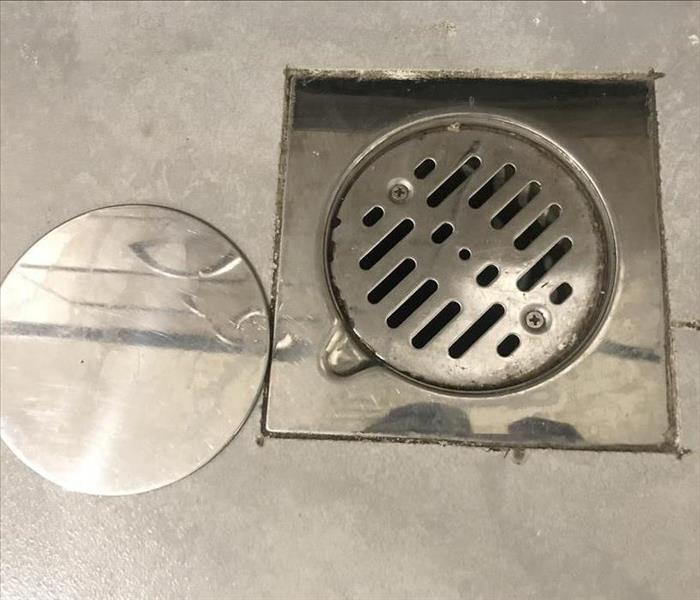 Clogged drains can cause sewage odor.
Clogged drains can cause sewage odor.
Do you have a mysterious rotten egg odor wafting around your Bountiful, UT, building? It could be sewer gas from the sewage system. Decomposing waste materials produce a fusion of putrid chemicals, including ammonia, hydrogen sulfide and methane. There are several reasons this sewer smell could be released into a building.
5 Reasons For Sewage Odor
1. Faulty Toilet Ring
One of the most straightforward explanations for this problem could be a faulty or worn wax ring under the toilet. If you notice the toilet rocking or small leaks at its base, there's a good chance the wax ring isn't fitting correctly and needs to be replaced.
2. Leaky Sewer or Septic Line
You might notice a foul odor, along with your toilet and/or drains making gurgling sounds or draining slowly. These are reasonable indications of a sewer or septic line leak.
3. Backed Up Sewer or Septic Line
Sewer and septic lines can become obstructed, which can cause a sewage backup into your building. This can cause a foul sewer smell in the building and damage to your flooring and other materials. If the building sustains damage, you should hire water cleanup experts to clear, clean and sanitize the affected area.
4. Dry Water Traps
Water traps (aka P-traps or S-traps) are typically located near floor drains and underneath sinks. They're designed in a curved shape to trap water in the arch. This design is supposed to block sewer gas from entering the building. However, if there's no water in the trap, the gas has a free path to inside of the building.
5. Clogged Air Vent or Drain
Air vents can become clogged with debris and other blockages. These obstructions can prevent sewer gases from escaping from the vents outside. As a result, the gases travel into the building.
If you notice a sewer smell in your building, it's probably time to call a plumber to assess the issue. A sewer leak or backup could turn into a significant and expensive disaster if it's not controlled immediately.
Avoid Exposure to Category 3 Black Water
3/29/2021 (Permalink)
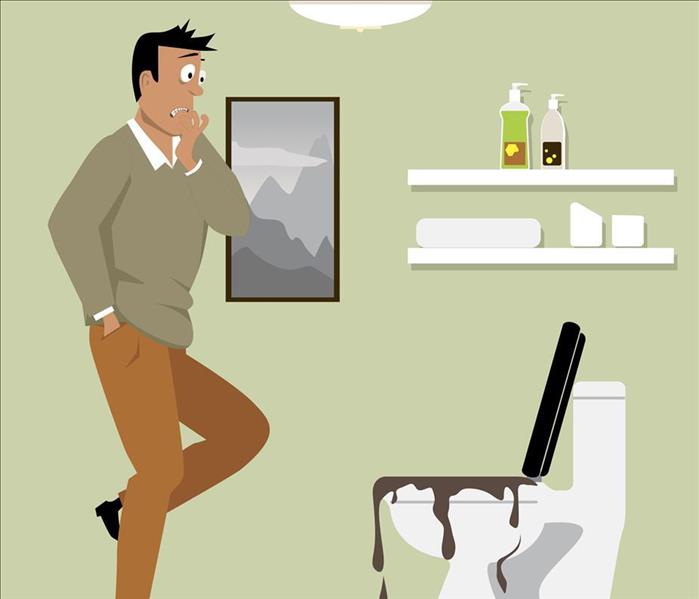 Overflowing toilets are considered category 2 water.
Overflowing toilets are considered category 2 water.
When your house is flooding, designations such as "gray" or "black" water may not be in your first thoughts. However, before anyone begins addressing cleanup and repairs, you need to understand the hazards that accompany the categories of water:
- Category 1 Water is clean (or drinkable) water. Water dripping from the bathroom faucet or splashing out of the tub doesn't pose a serious risk to you or your home as you dry and repair the area.
- Category 2 Water is often called gray water. This water may contain soap residue or similar substances. It often comes from overflowing toilets or a damaged dishwasher.
- Category 3 Water poses the greatest risk and is called black water. This type of water may carry sewage, hazardous chemicals, and other contaminants. The dangers of exposure to category 3 water are significant. This contamination may happen when the sewer backs up or when rising rivers and other bodies of water flood into your home.
Other factors, such as the duration of exposure and the temperature, may affect the category of water in your home. For example, clean water absorbed by a sofa and left for several days will become gray water as it picks up chemicals from the furniture.
Sources of Hazardous Water
Any flooding and water damage from broken pipes, backed sewage systems, and natural flooding must be addressed by trained professionals. The contaminated water may carry pathogens related to the Norovirus, Hepatitis B, and tuberculosis. These pathogens and other bacteria may be transferred to you through direct exposure to the water and some may be airborne.
A Safe Response to Contamination
Professionals use protective gear when performing sewage cleanup and flood repairs, often including gloves, masks, and disposable coveralls. Technicians are trained in industry standards for cleaning and sanitizing the property to limit further contamination and mold growth.
The health risks that accompany black water are serious. The better you understand the potential risks, the better you can make decisions about repairs and cleanup in your Bountiful, UT, home.
Prevent Mold for a Clean, Fresh Bathroom
3/18/2021 (Permalink)
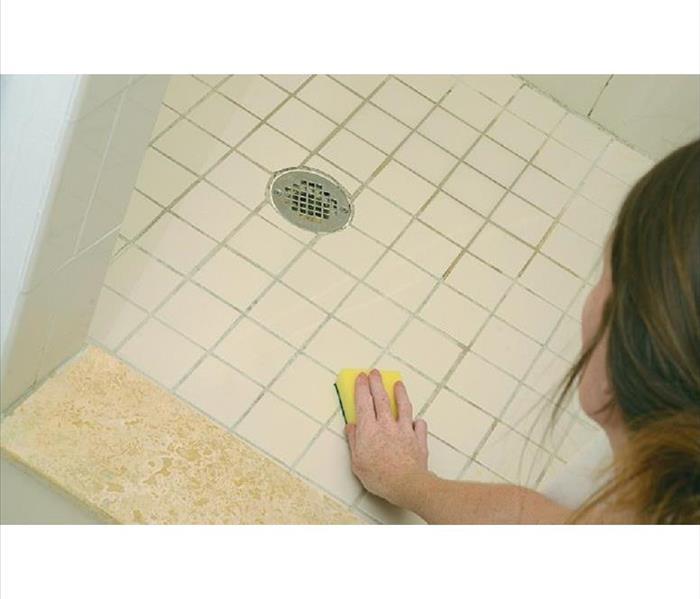 Mold thrives on moisture
Mold thrives on moisture
You can completely scrub down your bathroom every day, and it would still be a haven for mold. This is because mold is highly adaptable, and bathrooms are full of humidity. Additionally, water damage often occurs in Bountiful, UT, bathrooms before you're even aware of it.
Tips to Prevent Mold and Mildew in The Bathroom
Reduce Humidity and Moisture
The first step in reducing mold is controlling the level of humidity:
- Ventilation is the best way to reduce humidity. Install a bathroom that is easily switched on and off. Open windows when appropriate and leave doors and windows open.
- Use a squeegee to remove excess water from the shower, tub, and mirrors.
- Hang up towels and shower mats to dry, exposing them to ventilation.
- Install a dehumidifier in the bathroom.
These simple steps reduce moisture and protect bathroom surfaces from water damage. Don't forget to use a rag to wipe the floor dry.
Identify High-Risk Areas
The second mold prevention step is to identify the places where colonies are most likely to take root:
- Around the windows
- At the base of the toilet
- Under the sink cabinet
- On the ceiling and walls
- On shower curtains
- Under mats and rugs
- On caulking and grout
- Behind tiles, wallpaper, and other furnishings
Unfortunately, when spores have grown into colonies behind the walls or inside cabinets, you may not recognize damage until it has spread. You can, however, hire professionals once or twice a year to test for mold. If there's already damage, reach out to mold damage cleanup technicians to complete any reconstruction necessary.
Frequently Wash and Dry Fabrics
Finally, launder curtains, rugs, towels, and other bathroom linens frequently. Any absorbent materials can quickly become home to mold. (It only takes spores a couple of days to establish a new colony.) Adequate ventilation can aid in keeping the room dry, but it's best to wash items after multiple showers.
Water damage often leads to mold growth that must be treated in addition to other repairs. Take preventative steps to enjoy a clean, fresh room and to prevent unsightly mold and mildew.
Routine Maintenance for Commercial Fire Sprinkler Systems
3/16/2021 (Permalink)
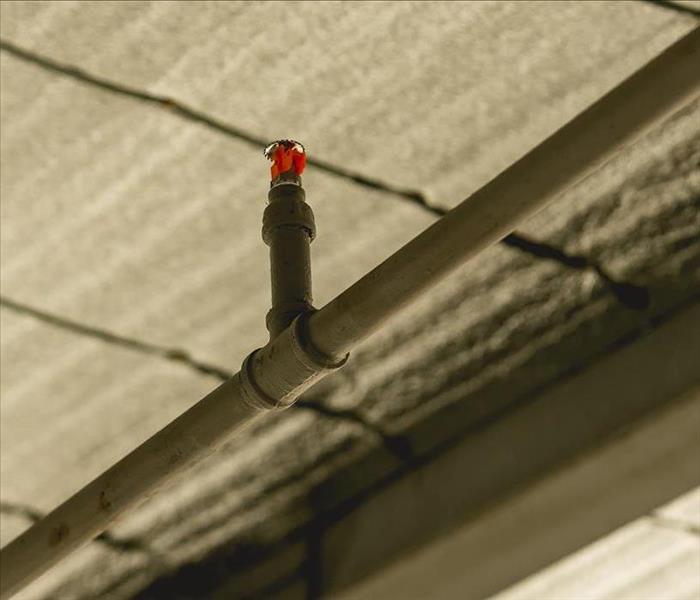 Fire Sprinkler Systems need routine maintenance
Fire Sprinkler Systems need routine maintenance
The fire sprinkler system has several components, such as a source of water, pipes that carry the water, and several sprinkler heads. When heat or smoke triggers the system, water is automatically discharged over a specific area. Thus, the system acts as both a detector and a suppressor. This only happens, however, when the sprinkler has been maintained properly and is ready to go.
Maintenance Routine for Fire Sprinkler Systems
Inspection and Maintenance Standards
The National Fire Protection Association provides guidelines to guide the maintenance and care of fire sprinkler systems. These are grouped under the heading HFPA 25 and cover the following areas:
- Inspections
- Maintenance
- Testing
Facility management teams should look these standards up and become familiar with them. With knowledge of the maintenance steps, it is possible to avoid damage and malfunctions.
Weekly Visual Inspections
The weekly inspections shouldn't take long, and they don't often require any tools:
- Inspect the gauges by reading the water pressure and air indicators. These should be within the normal range as suggested by the NFPA standards and system manufacturer.
- Start your visual inspection of control valves by reading the signage and then checking for leaks.
- Verify that the valves are locked, sealed, and set in the open position.
Monthly Inspections and Tasks
Monthly inspections for your fire suppression system may vary a bit depending on which types of system is installed in your Bountiful, UT, facility:
- The gauges on wet pipe systems must be checked for proper levels of water pressure.
- Alarm valves must be inspected for damage.
- Review the fire safety plan for the facility and ensure that signs are posted and easily seen.
Quarterly Maintenance and Inspections
On a quarterly basis, in addition to completing weekly and monthly tasks, it's important to complete the following checks:
- Make sure alarm devices aren't damaged.
- Test alarm devices to be sure they function properly.
- Make sure the hydraulic nameplate is secure, and the information is legible.
Damage Prevention
Fire sprinkler systems are effective at detecting fires and putting them out before your Bountiful, UT, buildings suffer expensive damage. When damage does occur, reach out to fire sprinkler cleanup professionals.
The Importance of Quick Storm Services After a Disaster
3/15/2021 (Permalink)
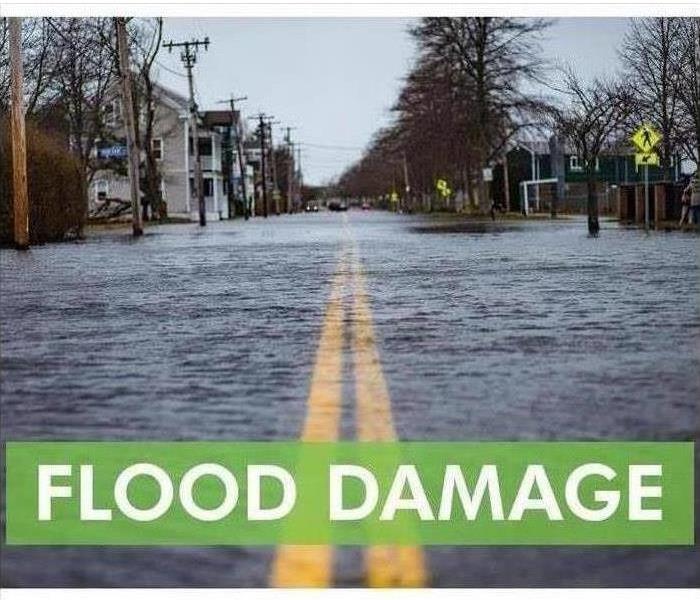 Heavy storms can lead to flood damage.
Heavy storms can lead to flood damage.
A storm in Bountiful, UT, can be devastating to a home, and working with a company that is experienced in restoring homes affected by storms is important, though some companies work more quickly than others. Starting the storm restoration process quickly is often wise for a variety of reasons.
3 Reasons Why Starting The Restoration Process Quickly Is Important
- Quicken the Claims Process
After a storm occurs, one of the first steps homeowners need to take is to begin making a claim to their insurance. After a claim has been filed, homeowners will be able to begin the restoration process. However, the longer it takes to file a claim, the longer the process of restoring the home will likely take. When a restoration company is able to respond in a timely manner, this can help to speed up both the claims and restoration process.
- Mitigating the Damage
Storms with heavy winds and rain can affect the overall structure of a home. Often, ceilings, roofs, drywall and even the foundation of a home may need to be replaced or restored, and the longer these areas are left alone, the more likely it becomes that the areas will need major fixes. However, if storm restoration begins quickly, this can decrease the likelihood of major structural damage occurring.
- Restoring Items
While storms are capable of damaging the overall structure of a home, flood damage can also impact personal belongings within a home. When items are left in wet or damp environments, mold growth often occurs, and it’s not always possible to restore items that have mold growth. However, if there is a quick response to a storm, items within the home are more likely to have sustained less damage, therefore making it more likely that they can be restored.
When storm restoration occurs quickly, the claims process is likely to be fast, damage can be prevented and items will more likely be able to be restored. When homeowners need a reliable storm response, contacting storm damage and restoration professionals is often helpful.
3 Things Not To Do After a Flood
2/24/2021 (Permalink)
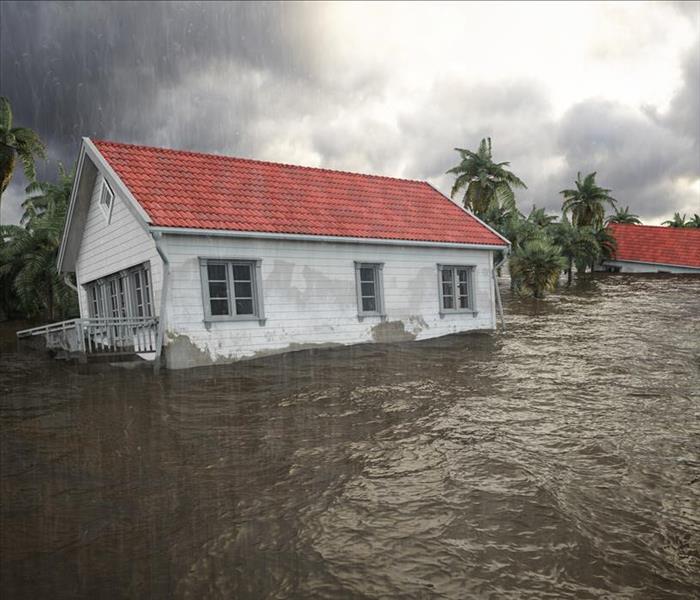 Deal with flood water properly.
Deal with flood water properly.
Floods can pose serious risks to people and property. When dealing with flood water, it is important to avoid common mistakes that can put your safety at risk or lead to unnecessary damage to your property. These are three things you should not do after a flood.
3 Things to Avoid After a Flood
1. Try To Be a Hero
If you know a flood is imminent, or you have been ordered to evacuate by authorities, do not try to save your flooded home. While some actions, such as placing sandbags, may protect your home from minor flooding, there isn't much you can do to save your home from a major flood. Staying in your home puts you and anyone who has to come to rescue it at risk. It is better to evacuate to a shelter, or rent a hotel room or stay with friends or family in an area not affected by the flood.
2. Walk or Drive Through Standing Water
It is best to avoid walking or driving into flood water. As little as six inches of water can create problems for drivers. Additionally, standing water from floods may contain contaminants from sewage or be electrically charged due to downed power lines. If you do need to walk through water, wear rubber boots to protect yourself from shocks.
3. Allow Your Property To Stay Wet
You shouldn't attempt to return to your home before you've been told that it is safe, but as soon as you get the go-ahead you should begin efforts to dry out your property. You may want to contact a water damage remediation company in Bountiful, UT, to dry out your home quickly. The longer your property remains wet, the higher the chance of problems such as mold, mildew and rot is to occur.
Flooding can create havoc in your home. Dealing with flood water properly can help ensure your family stays safe and your home sustains as little damage as possible.
How Is Category 3 Water Damage Remediated?
2/11/2021 (Permalink)
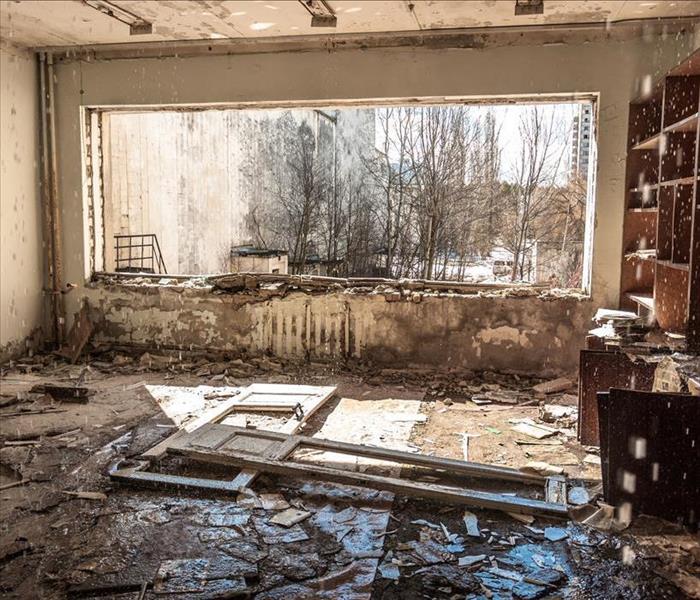 Category 3 water damage.
Category 3 water damage.
Although some materials will be damaged by water no matter how clean, all floods are not alike. Flood water damage is broken down into category 1, category 2 and category 3, with category 3 damage being the most serious. Categories 1 and 2 can, however, escalate to category 3 if it sits for a time.
What Is Category 3 Water Damage?
Category 1 water (aka clean water) poses no harm to you or your property. Category 2 water (aka gray water) has some biological or chemical contamination. Category 3 water (aka black water) is exceptionally unsanitary, containing known toxic contaminants like bacteria and viruses. Common examples of black water are:
- Sewage water (e.g., from a toilet overflow)
- Rising water (e.g., from groundwater after a heavy downpour)
- Flood water (e.g., river water, stream water, seawater)
Water damage remediation professionals must manage category 3 damage to ensure safe and proper cleanup.
What Does the Remediation Process Involve?
When the professionals arrive on the scene, they'll be wearing the proper personal protective equipment to preserve their well-being and prevent cross-contamination to unaffected areas of the building. The first part of the cleaning process is removing the standing water. This is usually accomplished with an industrial wet/dry vacuum. Next, it's time to remove all damaged materials. In category 3 disasters, typically, nearly everything will have to be disposed of due to the contaminants. Thorough cleaning and sanitizing the entire affected area is essential, including tiny cracks and crevices where water can get trapped. The site must then be dried thoroughly and as quickly as possible to prevent mold growth. The professionals will use industrial-grade equipment such as fans and dehumidifiers to dry the area as efficiently as possible.
After any kind of flood water damage occurs at your Bountiful, UT, building, it's critical to have the area and its contents thoroughly cleaned and dried. The quicker the response, the less damage you can expect.
Why You Need Roof Damage Mitigation After a Storm
1/26/2021 (Permalink)
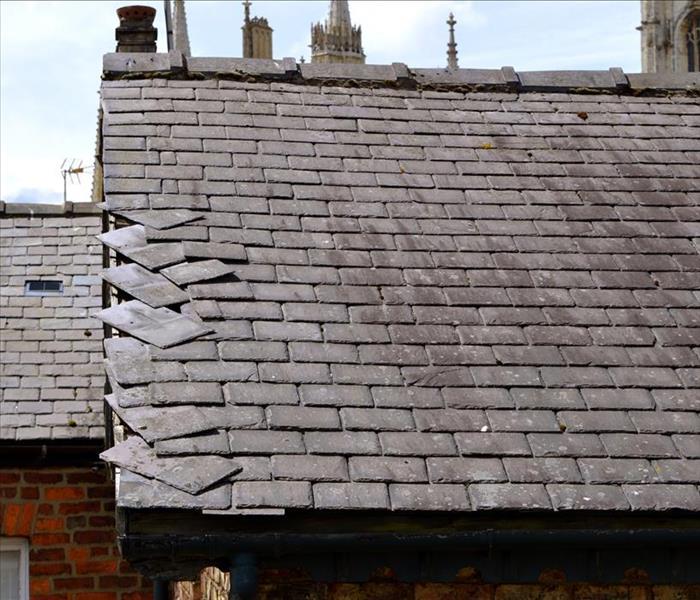 You may need roof damage mitigation after a storm.
You may need roof damage mitigation after a storm.
Although many people are well aware of what a powerful storm can do to their roof, they are not aware of the additional damage that can happen after a storm. Roof damage does not stop just because the storm has ended. Even a gentle rain can add thousands in water damage, and a light wind can pull loose roofing materials down. Fortunately, there are damage mitigation companies that can help you prevent this from happening.
3 Reasons to Mitigate Roof Damage After a Storm
What a Damage Mitigation Company Does
What storm and wind damage mitigation company does is simple. They:
- Document the damage
- Remove debris
- Cover holes and breaks
- Help you plan on how to correct the damage
They understand the individual dangers of Bountiful, UT and best know how to keep more roof damage from occurring.
Your Insurance Might Require It
Although it depends on your individual company, you may not be able to file a claim if you do not hire a mitigation company. The insurance company will want to minimize how much they have to pay for the repairs. They can only do this by making sure more problems don't happen while they are assessing the initial storm damage.
It Gives You Time
Immediately patching the problem can give you more time to decide exactly how you want to handle the repairs. If the damage is minor, you might just want to hire a company on your own to have it fixed. If it is major, you might want some more time to select the best options for you and your home. In either case, it allows you a bit more time to assess the wind damage and make a plan to correct it properly.
Roof damage is devastating to a home's exterior and interior surfaces. Not only do you have problems with the actual roof, but each additional day can also cause more problems for the interior of your home. The very next rainstorm can cause serious and costly issues. Mitigation prevents this from happening.
Do You Need a Certified Mold Remediation Company?
1/22/2021 (Permalink)
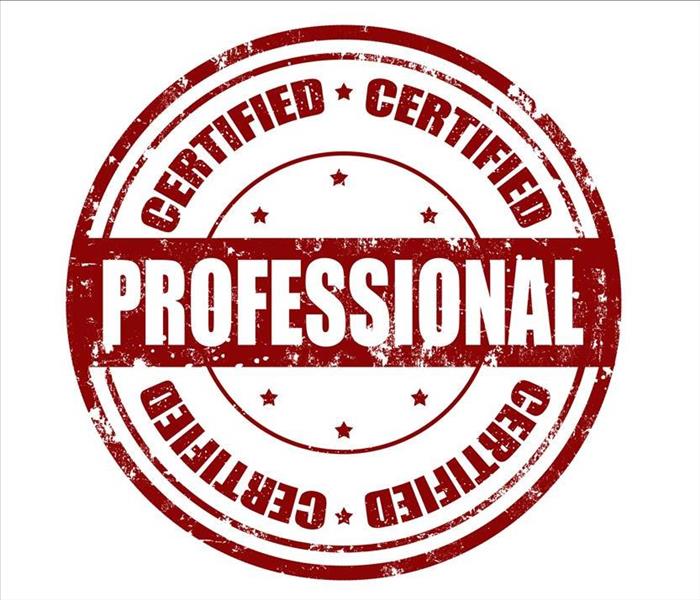 Mold can cause serious damage.
Mold can cause serious damage.
Because mold can cause serious damage to your home, it is important to hire a mold remediation professional with the proper experience and training to remove it. Mold remediation professionals are not required by law to hold any mold certification. However, hiring a certified professional provides you with the reassurance that the person you are working with has at least met the qualifications necessary to obtain the certification.
Types of Certifications
It is important to know which organization certified the contractor you plan to work with because the requirements for certifications vary. Several organizations offer certification:
- The Mold Inspection Consulting and Remediation Organization
- The Professional Mold Inspection Institute
- The National Organization of Remediators and Mold Inspectors
- RespirNet
- IICRC
What Certification Means
Mold certification means different things depending on which organization did the certifying because the different organizations set their own criteria. Some organizations require a college degree in a related field, such as engineering. Some require professionals to attend classes but do not require a degree, while others offer certification on the internet. When considering certified mold remediation in Bountiful, UT, ask which certifications your contractor holds, who issued them and what the criteria were.
Benefits of Choosing a Certified Contractor
Choosing a certified professional doesn't guarantee that the contractor will meet your expectations, but it does provide you with the reassurance that the technician has met the minimum qualifications to receive certification. Ask to see proof of certification and check references. If a contractor has both a valid certification and good references, there is a better chance you will be satisfied with the service you receive than if you hire contractors who can't prove their qualifications.
Mold certification isn't a guarantee, but it is a good way to verify that the mold remediation professional you are considering hiring has met minimum standards. Certification shouldn't be your only criteria, but it can help you make your decision.
3 Reasons a Security Fence Is Necessary After a Commercial Fire
1/19/2021 (Permalink)
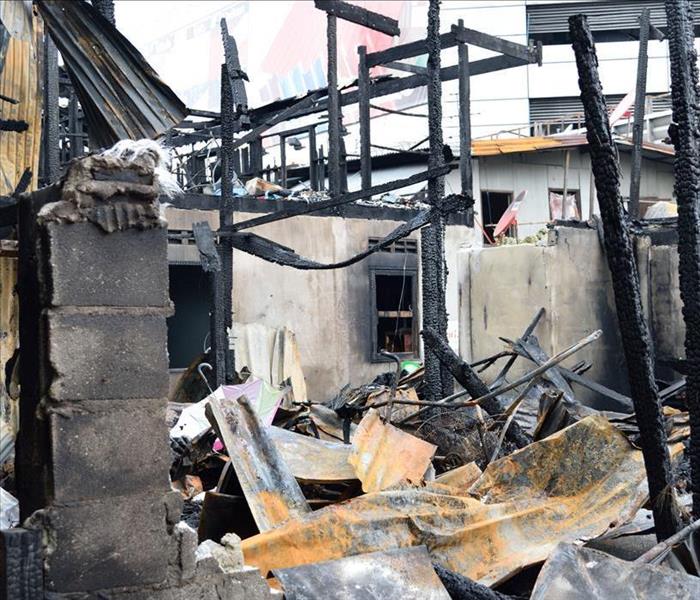 Commercial fire damage.
Commercial fire damage.
There are many things to consider after a commercial fire: inventory loss, property damage, employee safety, etc. When contacting an insurer to report damage, a business owner might receive advice to contact a fire restoration specialist in Bountiful, UT, to assess and suggest ways forward. Most of these companies will suggest the installation of a security fence, especially when damage is severe, and they will suggest it for at least three reasons.
3 Reasons To Install a Security Fence After a Commercial Fire
1. Insurance
Most insurers will require policyholders to mitigate further damage to the property after the initial commercial fire report. If a business owner fails to prevent or attempt to reduce other losses, their insurer may deny the claim. The installation of a temporary fence and other mitigation measures shows your insurer that you take the recovery process seriously and do not take your policy for granted.
2. Vagrants
Without a security fence, your property can become a home or playground to vagrants and other people curious to inspect the damage. While there might be few elements of value left in your facility for theft, having a stranger roaming an unsafe property puts your business at risk. If one of these people become injured, your company could be liable for their injuries, primarily if no effort is taken to secure the property. A fence and other mitigation tactics demonstrate your commitment to safety.
3. Wildlife
Fire damaged buildings are susceptible to damage from weather, vagrants, and wildlife. While concern over animal safety might not be at the top of your list, the destructive risk and danger wildlife present to your facility and restoration workers should. A fence of appropriate height and strength can prevent animals from entering your property and attempting to nest or hunt, keeping the building and workers safe.
While a security fence might not be the primary concern for a business owner after a commercial fire, it is an essential mitigation tool. After the safety of their workforce, a property owner’s primary concern must be on protecting and rebuilding their enterprise, including the securing of insurance funds.






 24/7 Emergency Service
24/7 Emergency Service
































































